SI Vault: How Moses Malone became the game's best rebounder

This story originally ran in the Feb. 19, 1979 issue of Sports Illustrated.
Bounding into prominence Moses Malone jumped from high school to the pros, where he has become the game's top rebounder
Anybody can shoot a jump shot.
--MOSES MALONE
Moses Malone is an original. He not only cut a new path to glory, but he also performs as no one else ever has. He was the first basketball player to go directly from high school to the pros, and he is the first to make a name in the craft of offensive rebounding. The game is a different one with him on the floor.
There are no tricks to the way he plays it. "Basically, I just goes to the rack," he says. Rack is a rather obscure colloquialism, meaning the rim of the basket, but the way Malone gives voice to it, the rack takes on the aspect of a specific territory, demarcated as surely as the lane or the crease or the mezzanine or the city limits: you'll know just where to find him.
Malone is not particularly articulate about all this. Indeed, in his heavy bass voice, speaking in the argot of his impoverished Southern subculture, he sometimes seems obtuse. He grew up in a tumbledown frame house with only his mother, who had left school after the fifth grade: the only literature on the premises was a worn Bible and, later, newspaper clippings of his exploits. But syntax and structure are not everything; young Moses Malone has always had the most express vision of these two places: the rack and the future. And that, for him, has been quite enough.
Although he is one of the leading candidates for Most Valuable Player in the NBA, to most fans he is famous only for one thing--for having had the brass to pass up that great linoleum dream, a college education. In 1974 Malone chose to go directly from Petersburg High in Virginia to the ABA, taking the money instead of what he calls "the big pub," the stacks of publicity invariably accruing to a championship college player, which immediately he would have been at almost any school. Because he has played with a succession of generally undistinguished professional teams--five in his first three seasons--in generally out-of-the-way cities, Malone's swift emergence this season as probably the best center and the most dominating figure in basketball has taken place without most people knowing what he looks like, or even whom he plays for, which now happens to be the Houston Rockets. Moreover, because Moses is shy and reticent--"I sit around, watch the scene, be quiet; I don't run my mouth off"--he only fuels the backfires of the one image he does possess: that of the goon who didn't have the brains to go to college.
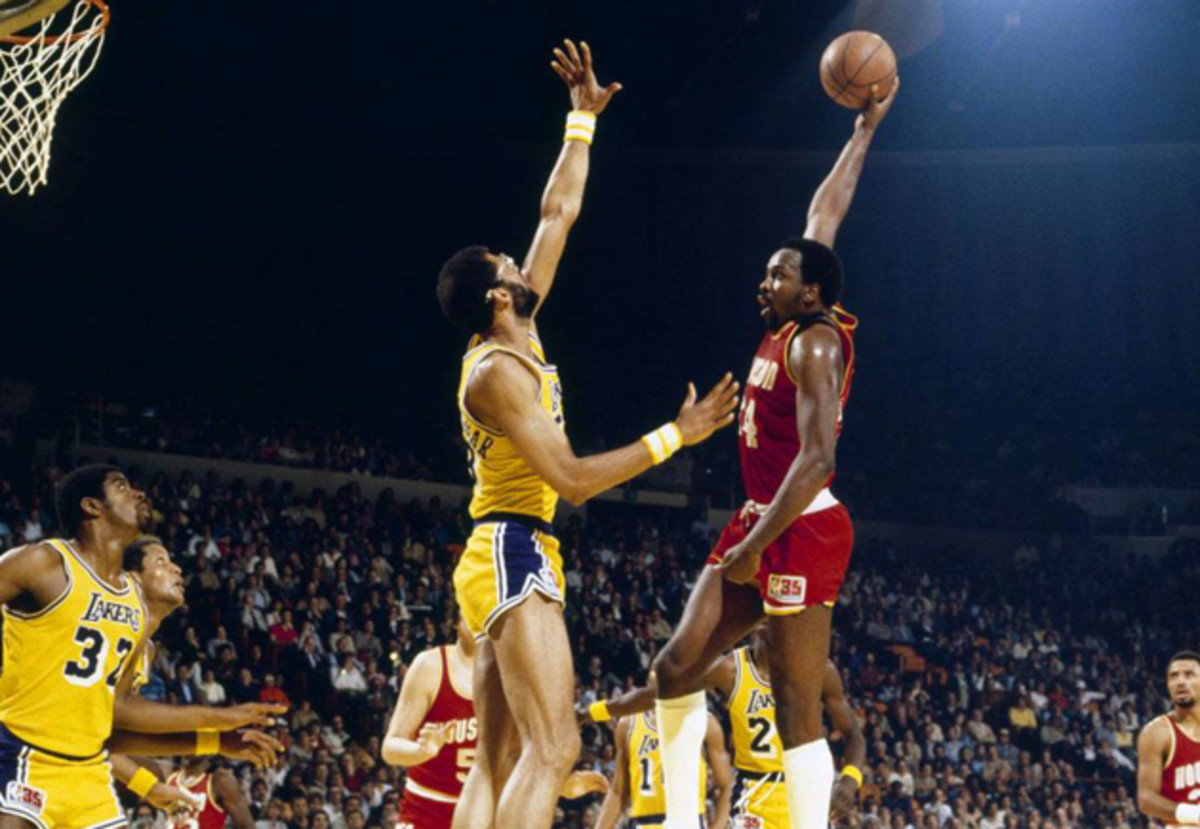
As Terry Bradshaw would explain, if, you know, he only could, the hardest knock an athlete has to live down today is that of deficient intelligence; even the choker can get off the hook more easily. If he is big and black, it's twice as hard. A quarter of a century ago, Willie Mays, overwhelmed and untutored, was generously accepted by newspaper reporters who turned his intellectual shortcomings around, using them to create a happy-go-lucky myth, our own Say Hey Kid. But Moses Malone, who comes from the same sort of black Dixie background, was publicly mocked as "Mumbles" Malone by a Salt Lake City disc jockey. Nowadays, any athlete who cannot express himself capably is fair game. Now that the TV microphones are on all the time, there can never be another Pygmalion.
Those who know Malone make it a point to protest allegations of ignorance. Moses himself, though, stays above the fray, refusing to discuss almost anything he deems "personal." If people insist upon dwelling on how he talks instead of on what he has attained, then that is their dumb fault. He grows increasingly more confident socially, more witty, more outgoing all the time, but he cannot be bothered with enrolling in speech classes, as his lawyers have suggested. What's the point? His friends understand him--"When you're alone with Mo, you can't shut him up," says John Lucas of the Warriors--and he knows that no matter how carefully he enunciates, nobody is ever going to hire him to fill in for Bruce Jenner.
No, Malone realizes today, as he always has, that his fortune is to be found around the rack. Charles Moses, a pharmacist who helped advise the Malones when the teenager was being recruited by hundreds of colleges, says, "If you can't express yourself correctly, it doesn't mean you're a stupid kid. Stupid? Listen, he was the first one to understand that he was a franchise. Moses was the one who figured it out."
Turning down the University of Maryland, Malone went with the Utah Stars. "I knew what peoples was saying." Malone says, "and so I told the Stars, `It don't make no difference how old I am, because I still think I can bust y'all. You just watch my action.'
"I was very homesick, but I kept my eyes open. I kept a cool head about things. Peoples could say things about me, but I didn't pay no attention. I didn't wants to know what they was saying because I was the only one knew what's true."
Malone is keeping tabs. "He don't forget anything," says Lucas, a former teammate as well as a close friend. "Mo's like a book."
Pro Hayes was an assistant coach at Petersburg High, but he was even closer to Malone as a counselor and father figure. "Moses was always very independent, very proud," Hayes says. "Never ask for money--and Lord, he could use it. Never brag either. His mother did a wonderful job with him. But I've known a lot of kids like Moses, and a good mother sacrificing is not necessarily enough. It's tough. These kind of kids get depressed. No matter what they might tell you, they want a mother and a father, both, so much. That kind of kid can go either way. There's no in-between. Moses became strong, independent.
"He likes to do his job and go off by himself, just be alone and play his music. And people misunderstood. They would decide he was ignorant or arrogant. But they were wrong.
"When he started to consider the pros, I was concerned for him. I was afraid that if he was defeated then, he could be destroyed. And so much more has happened than we ever feared--his team folding, then the league, being traded all around, so much--and he's still Moses. The same Moses. He's not Billy Showboat. No, sir. You see, Moses had a lot more faith in himself than we did."
Classic SI Photos of Moses Malone
Moses Malone
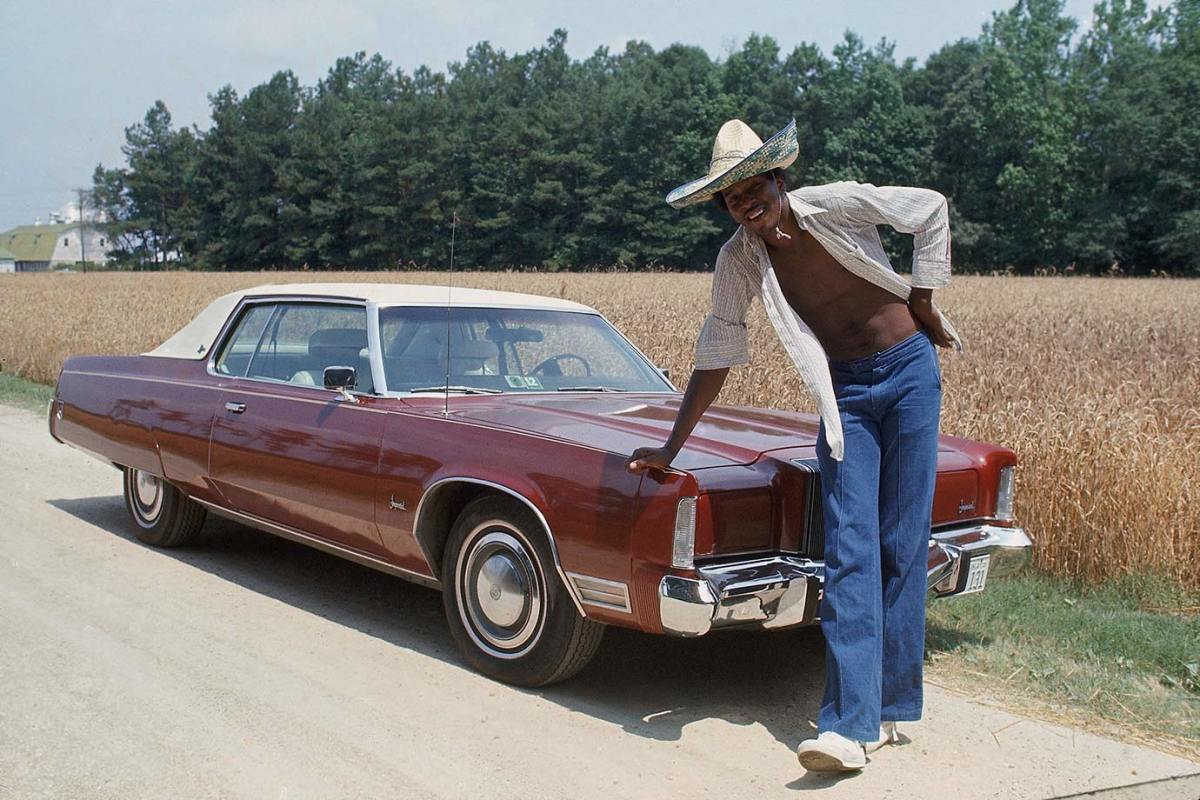
June 21, 1974
Moses Malone
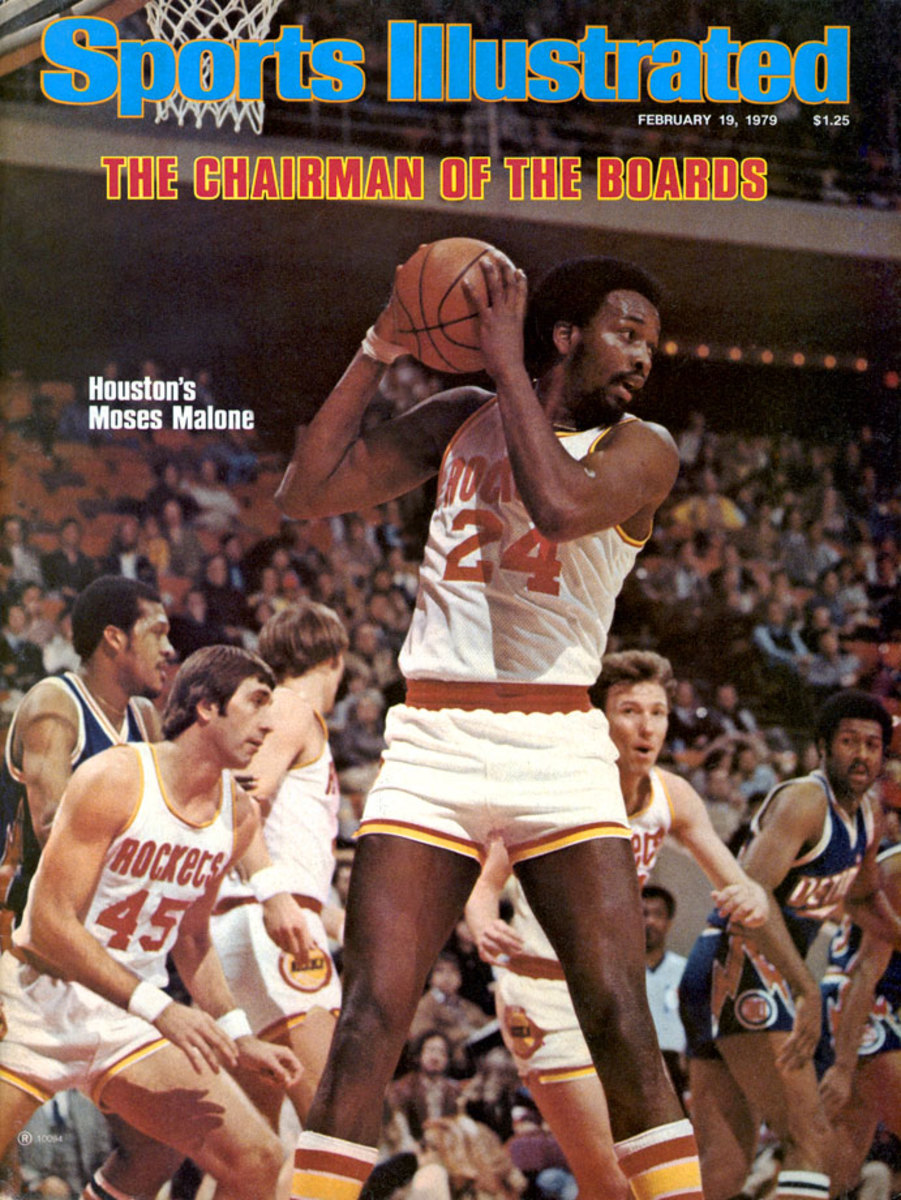
Feb. 19, 1979 SI cover
Moses Malone and Kareem Abdul-Jabbar
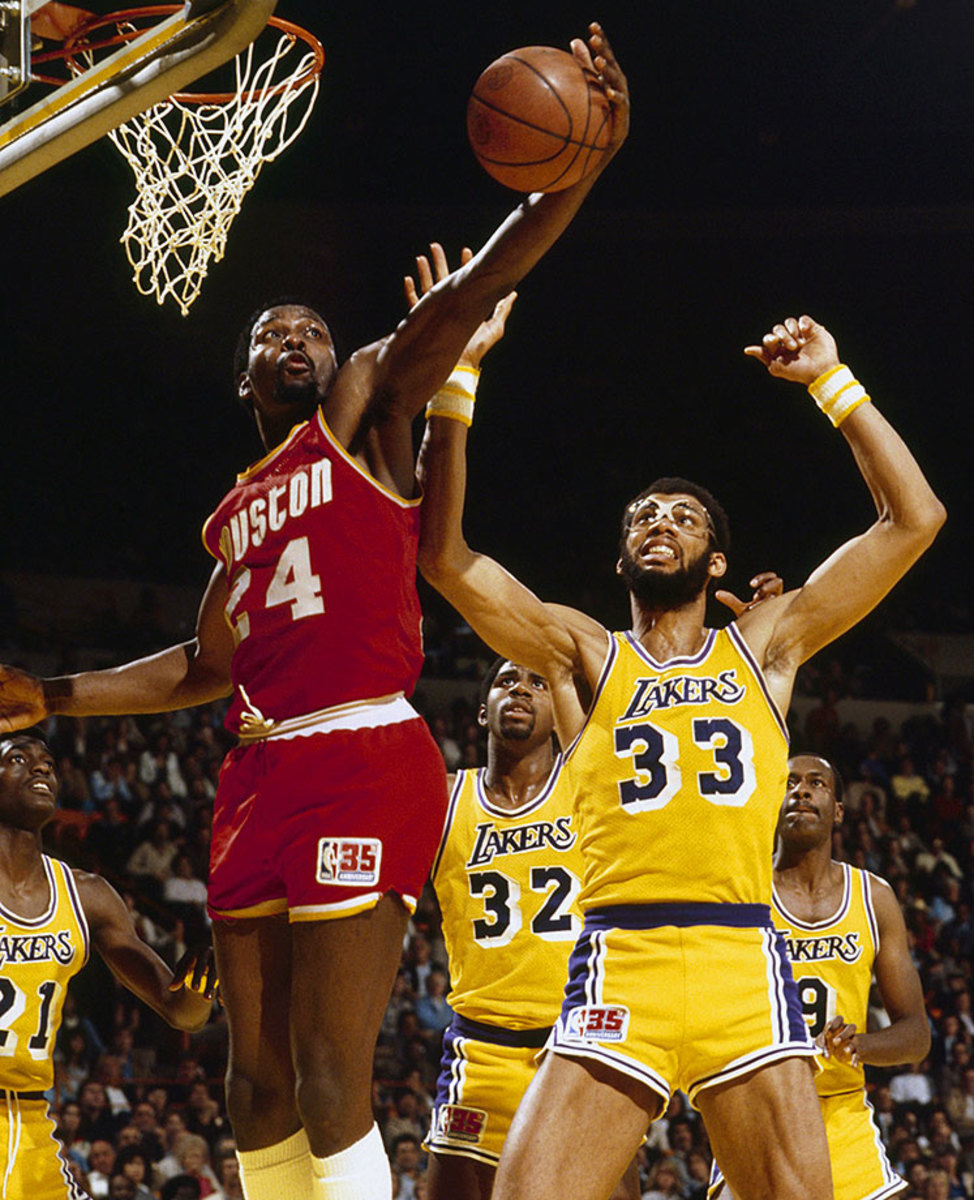
1981 Western Conference Playoffs First Round
Moses Malone and Kareem Abdul-Jabbar
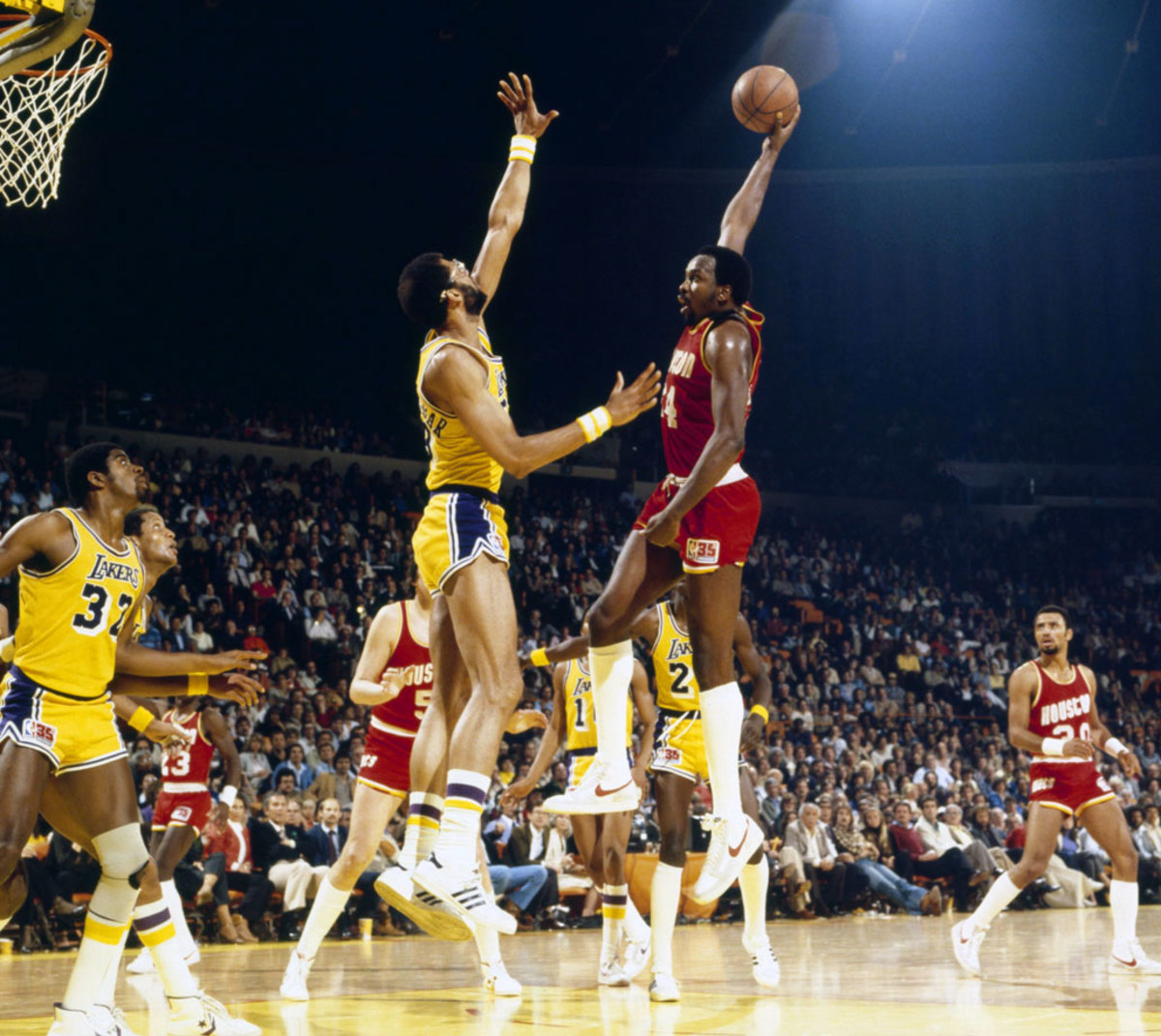
1981 Western Conference Playoffs First Round
Moses Malone and Mark Landsberger
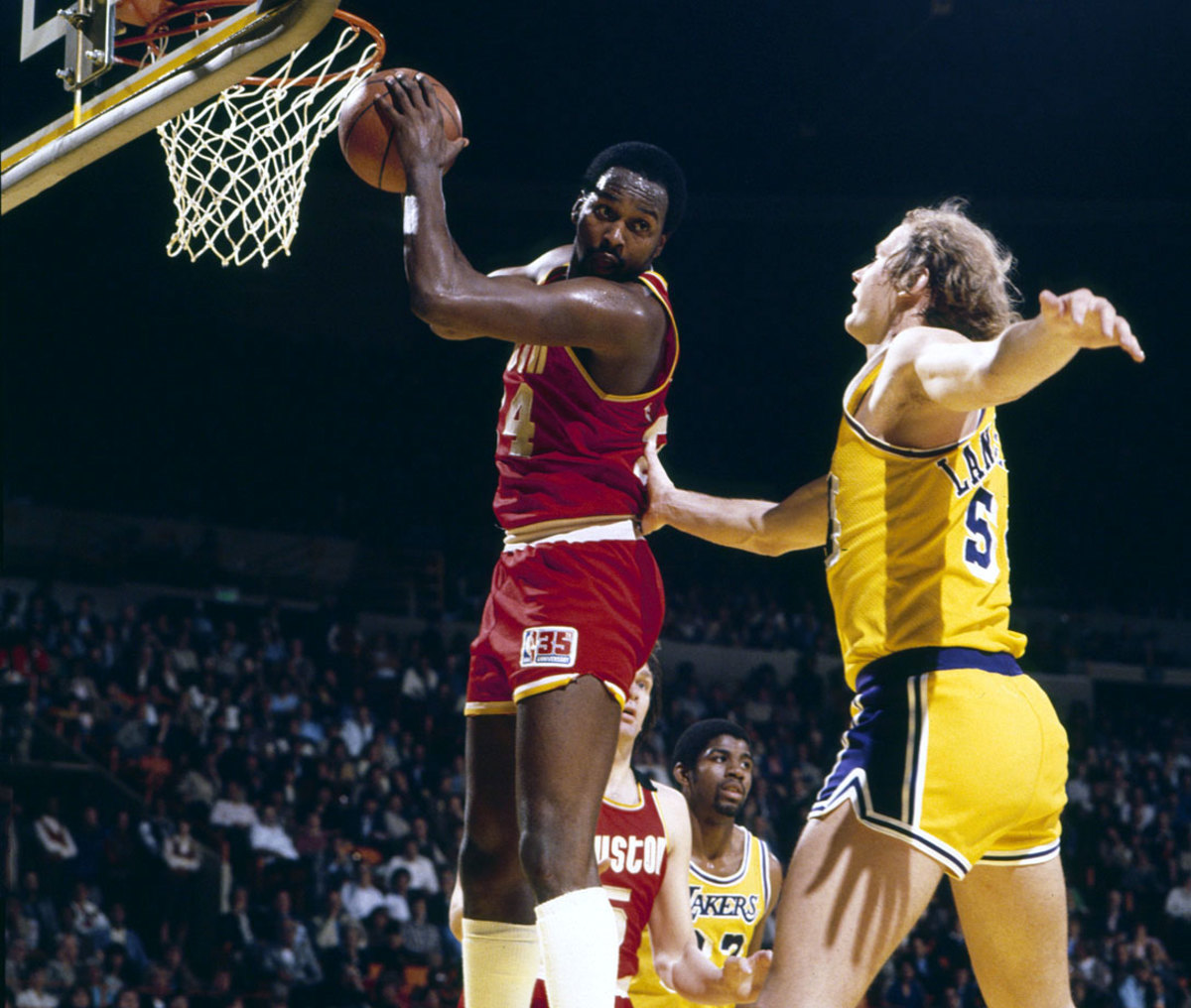
1981 Western Conference Playoffs First Round
Moses Malone, Robert Parish and Larry Bird
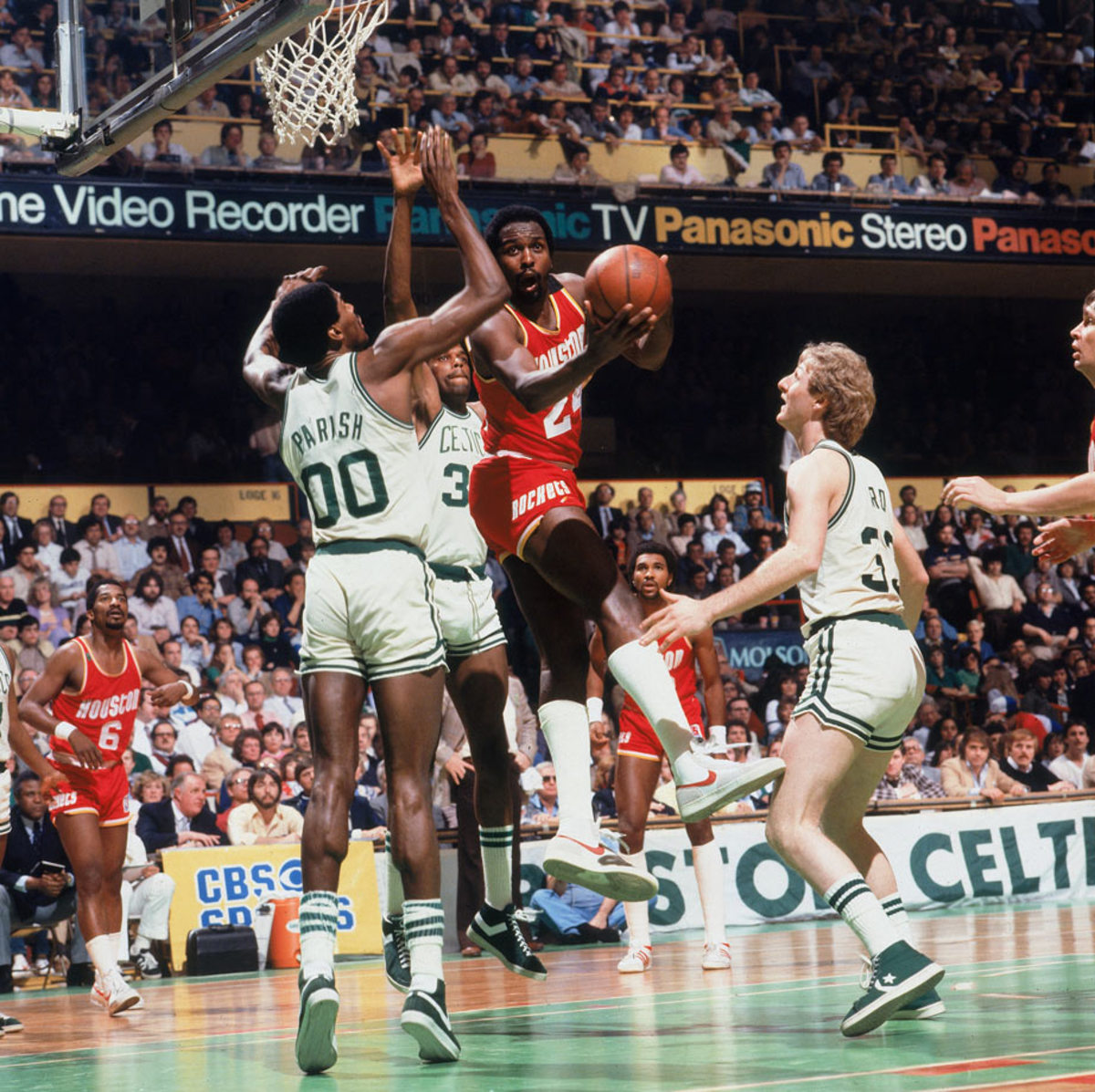
1981 NBA Finals
Moses Malone
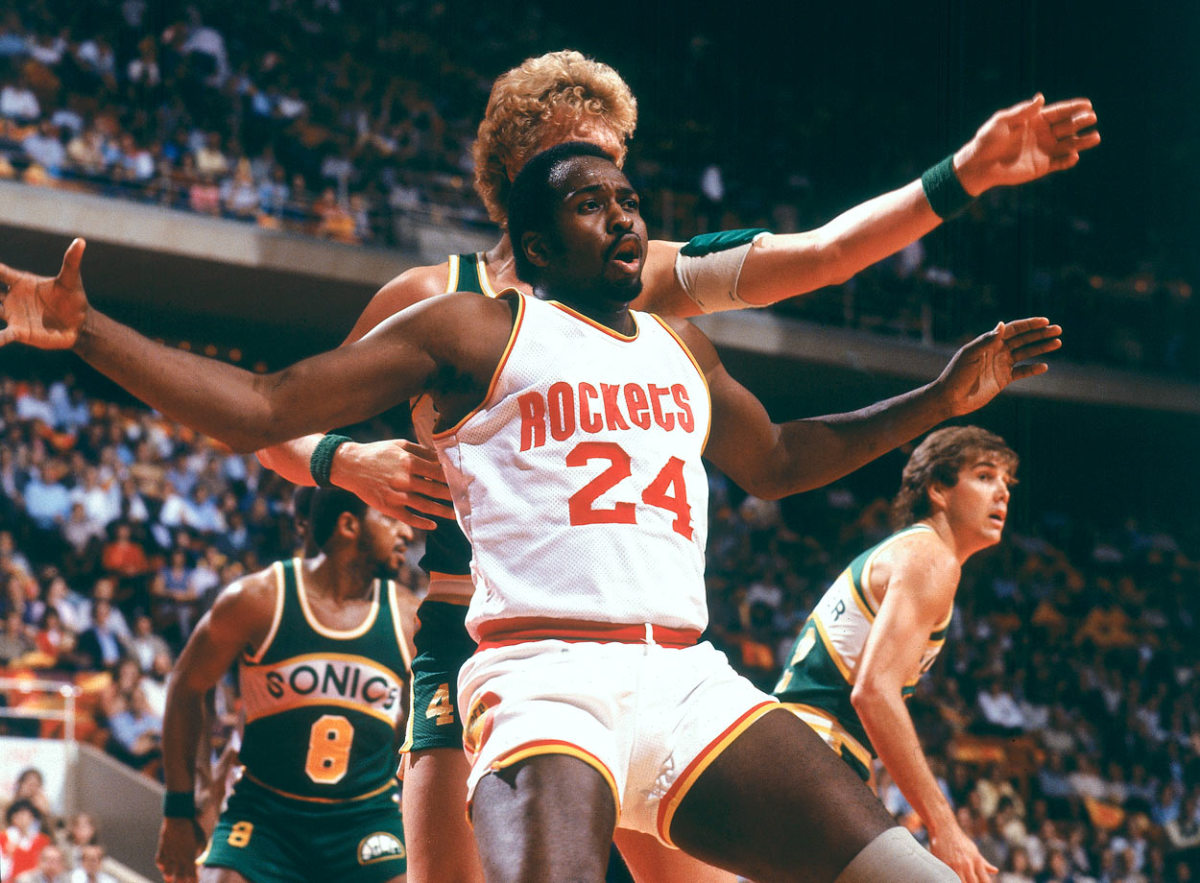
1982 NBA Western Conference Playoffs First Round
Moses Malone and Jack Sikma
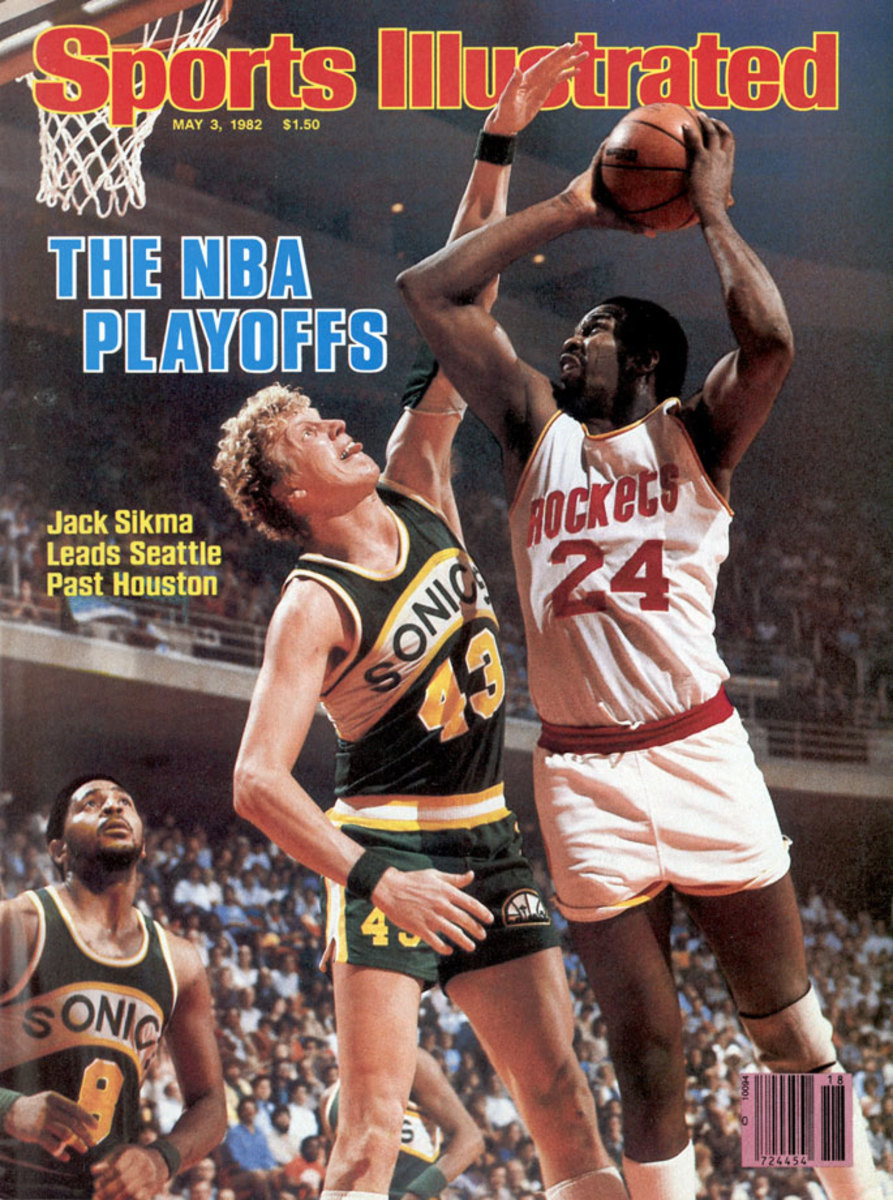
May 3, 1982 SI cover
Julius Erving and Moses Malone
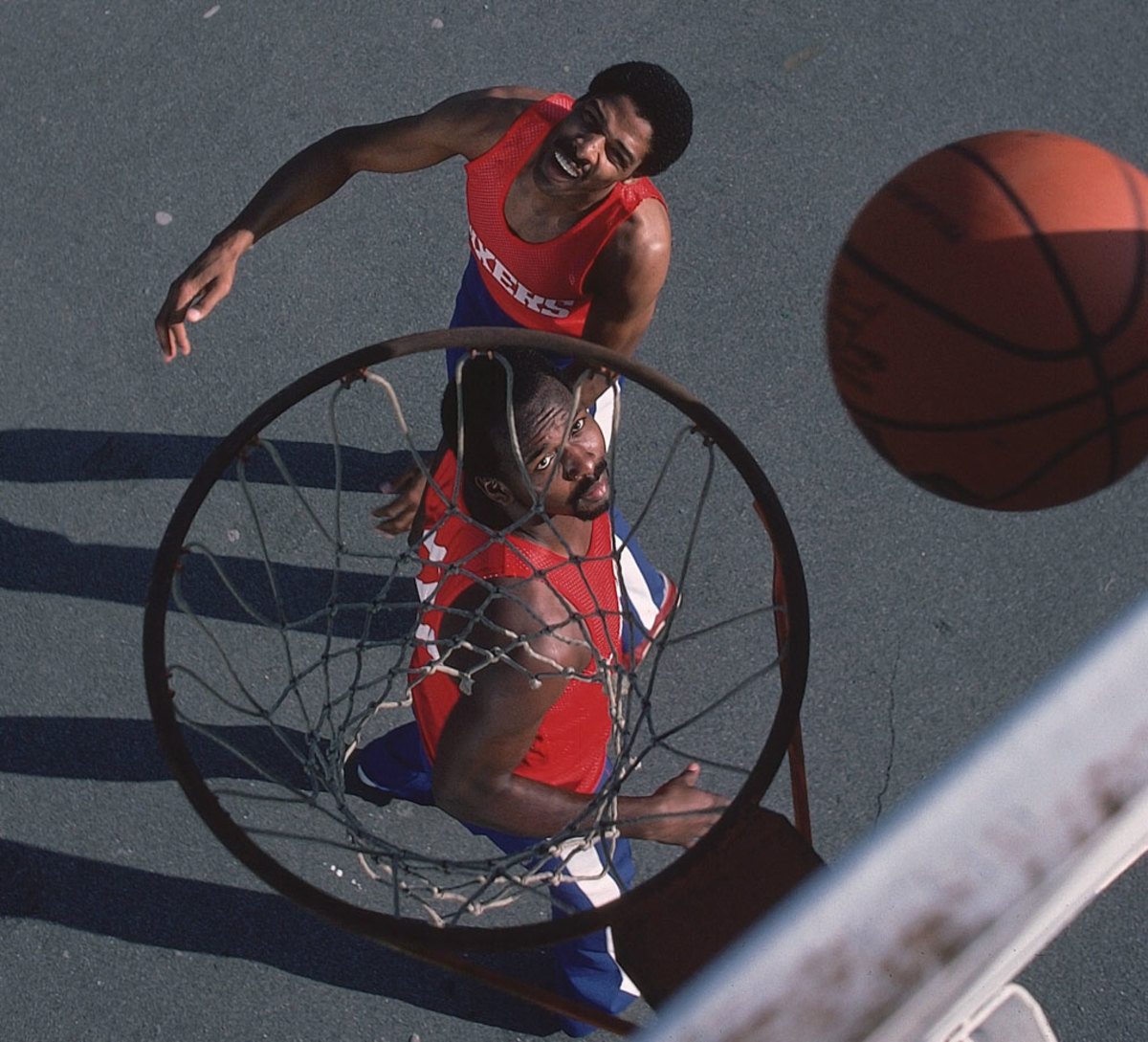
1982
Moses Malone and 76ers mascot Big Shot
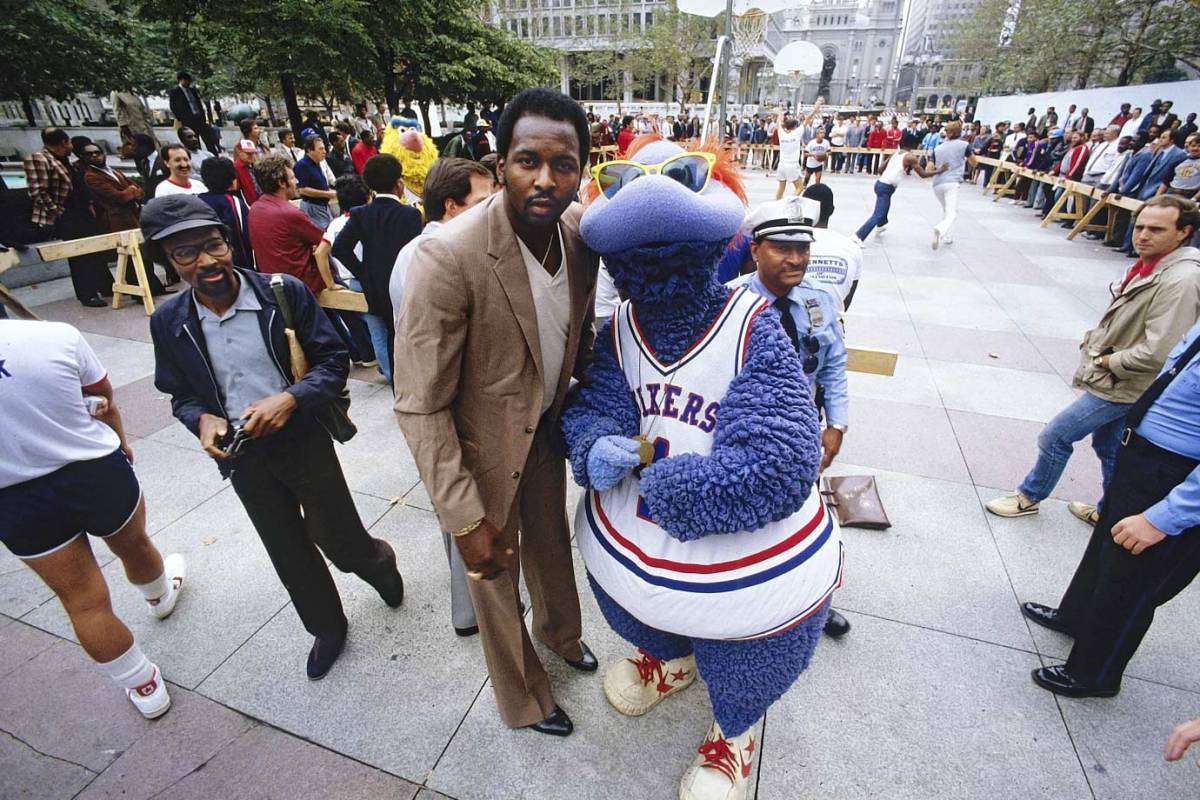
Oct. 1982
Howard Eskin, Moses Malone, Harold Katz and Billy Cunningham
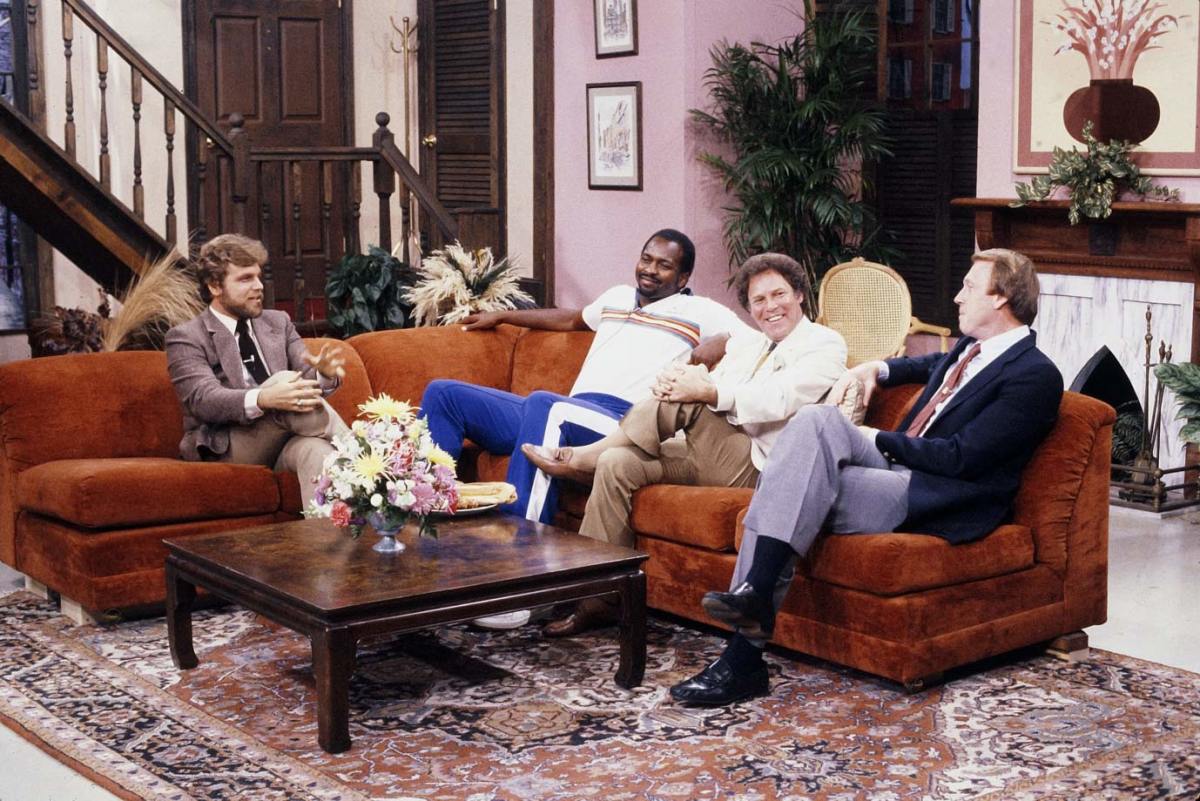
Oct. 1982
Moses Malone
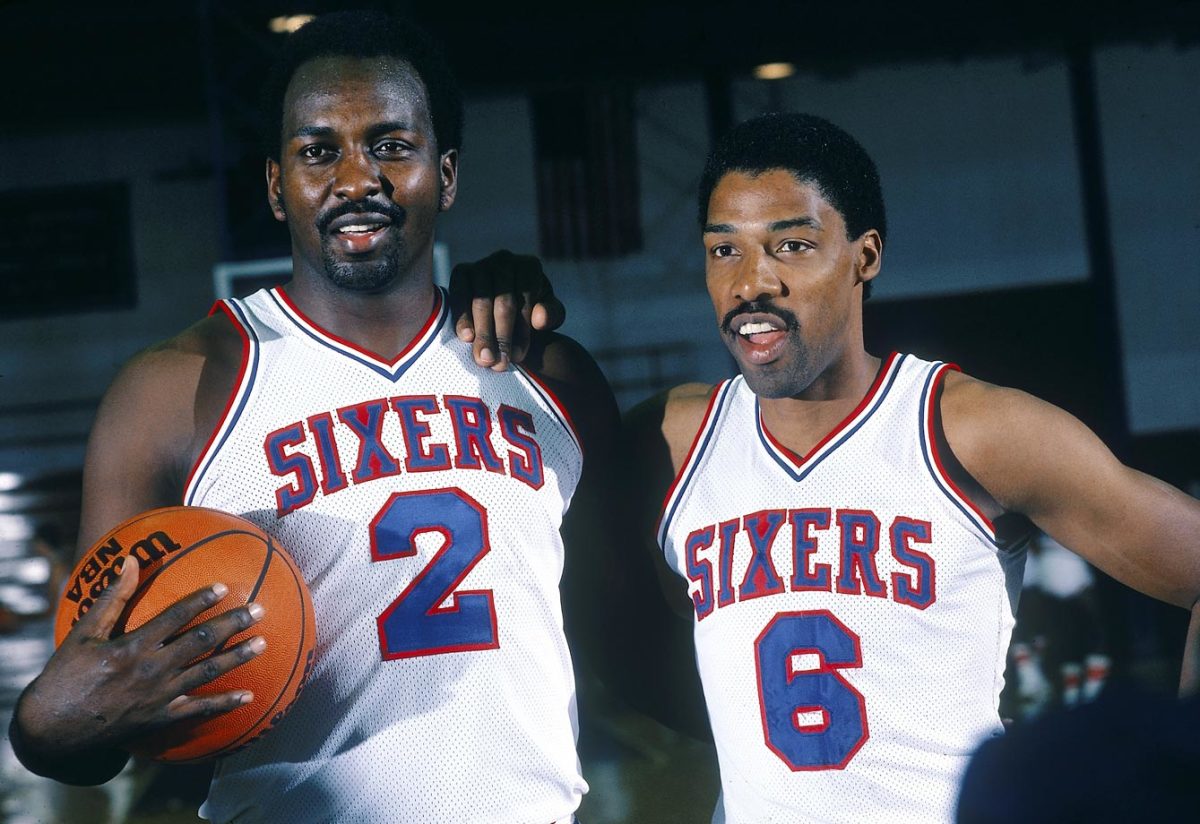
Oct. 1982
Moses Malone
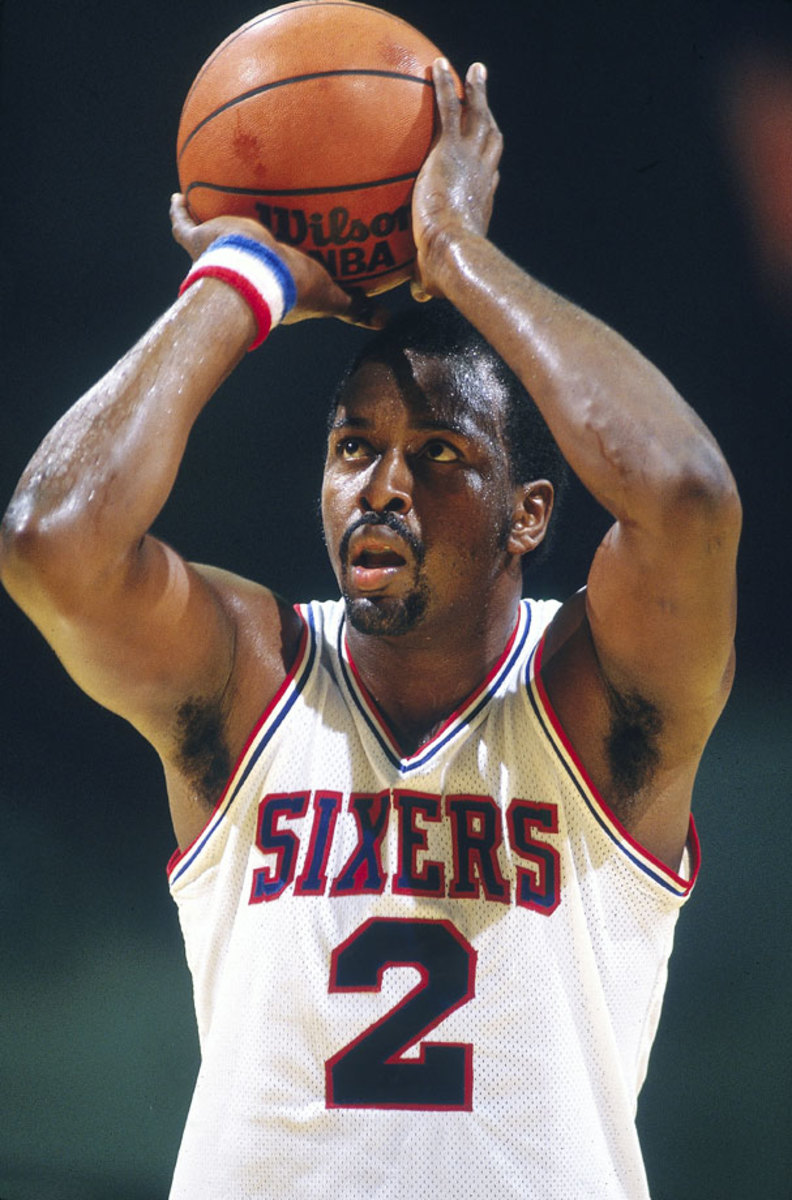
Oct. 9, 1982
Moses Malone
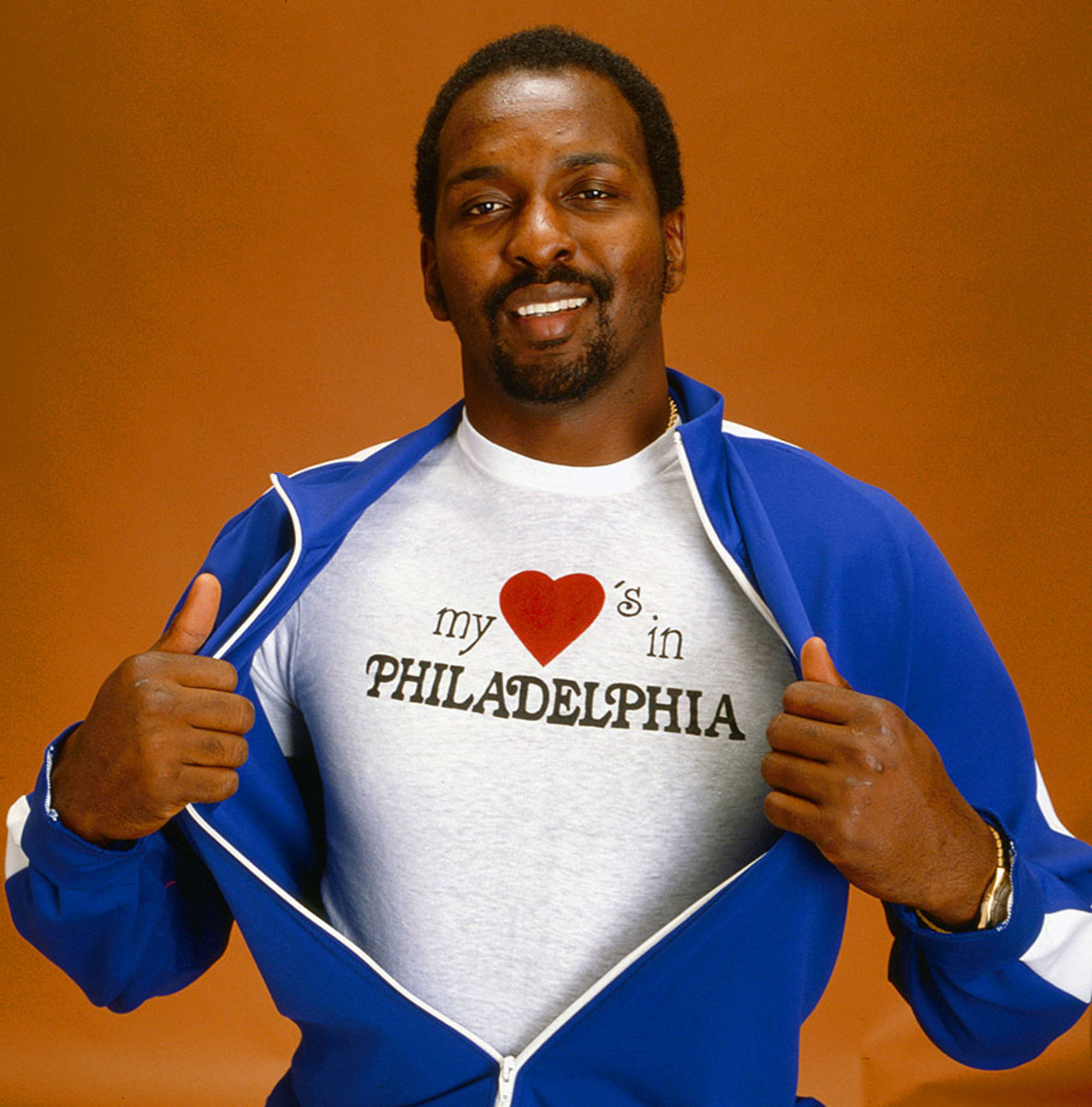
Oct. 21, 1982
Moses Malone
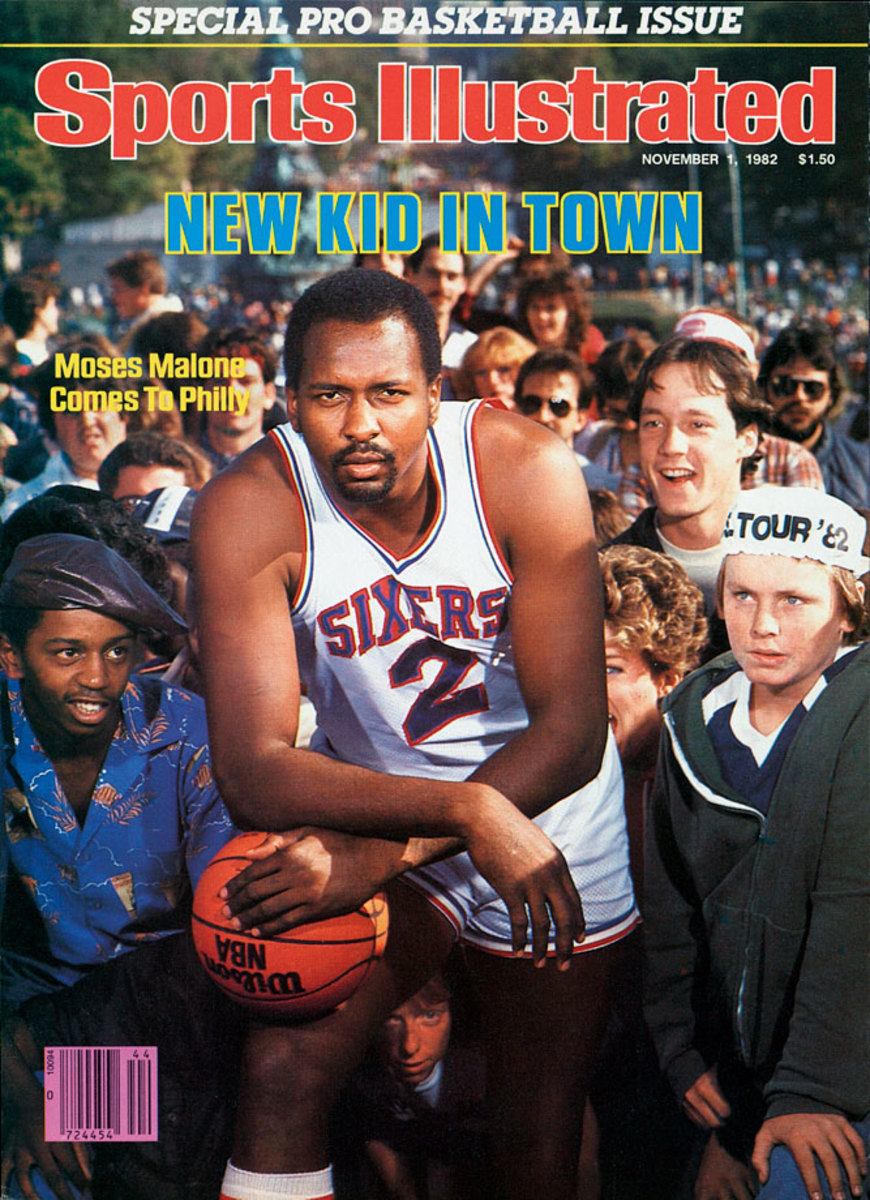
Nov. 1, 1982 SI cover
Moses Malone and Julius Erving
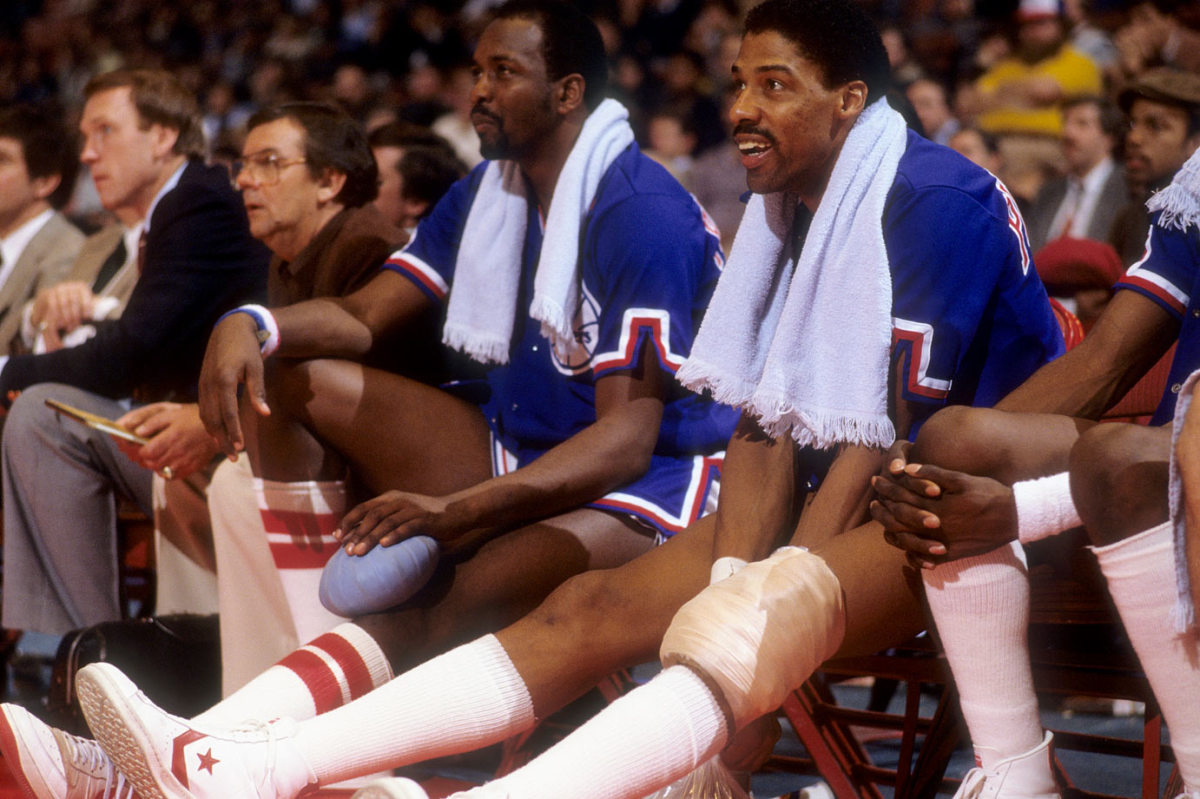
Feb. 16, 1983
Moses Malone and Allen Leavell
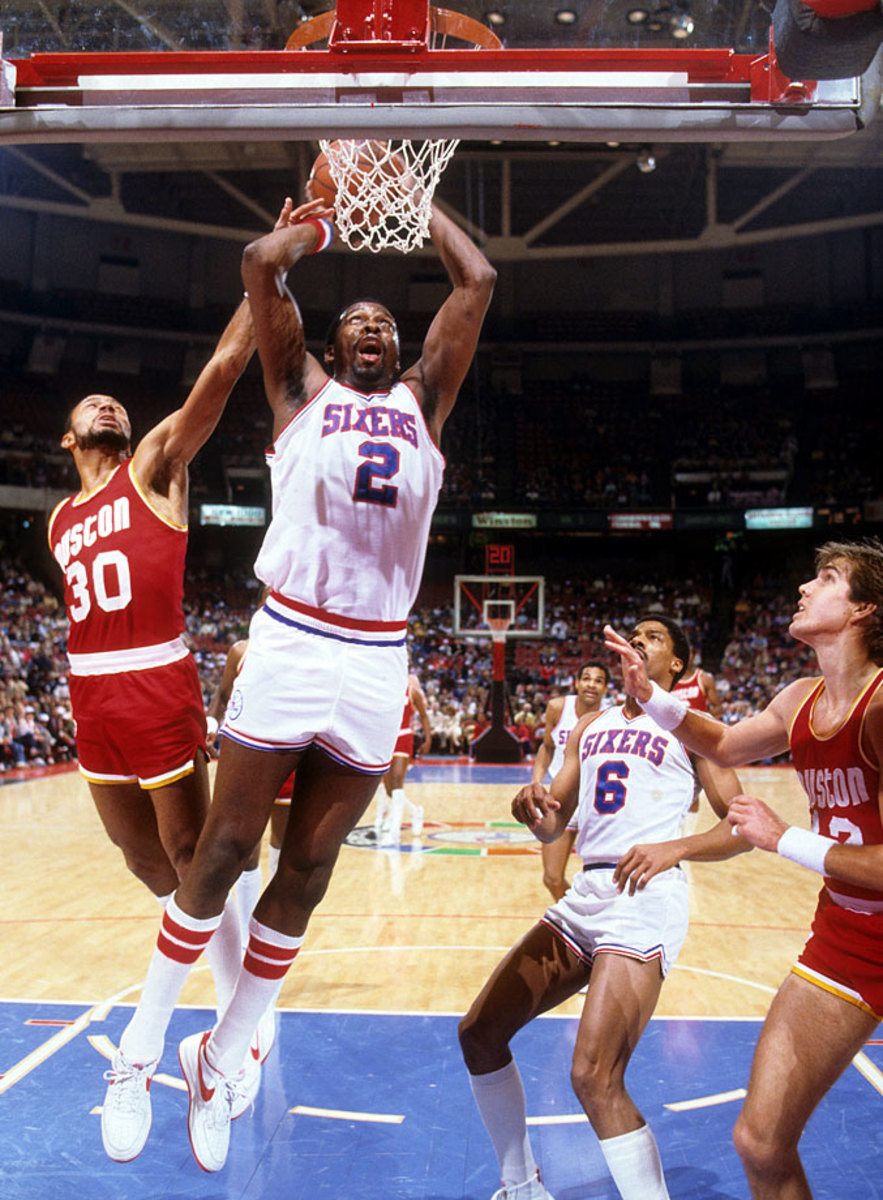
Feb. 18, 1983
Moses Malone and Bill Cartwright
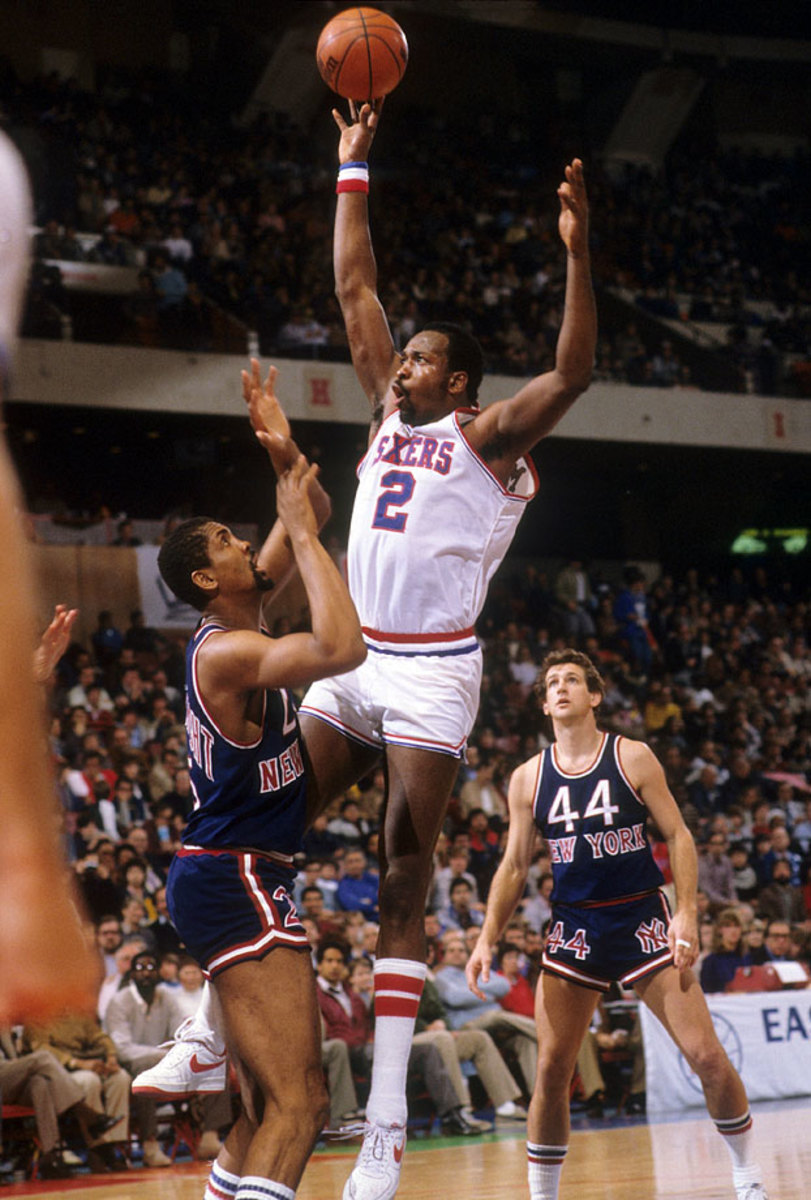
Feb. 20, 1983
Moses Malone and Billy Cunningham
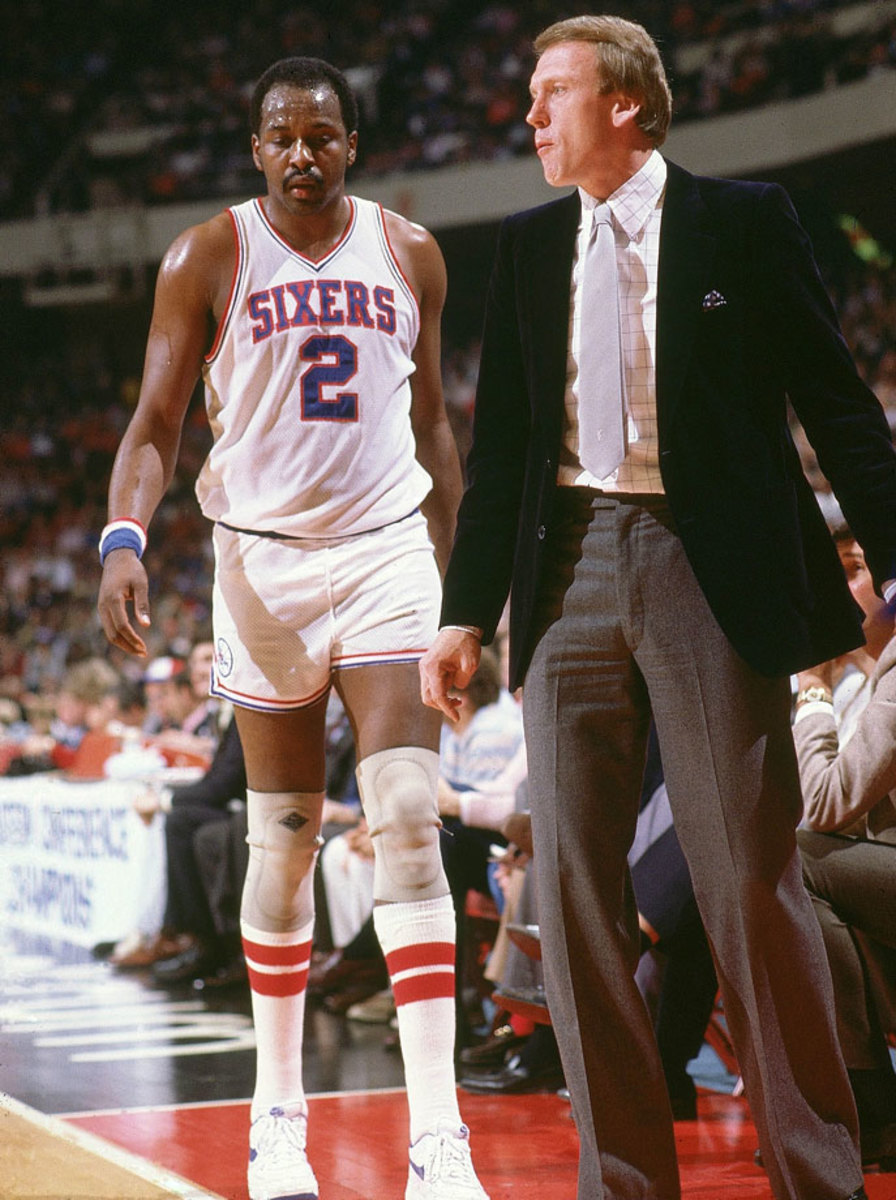
1983 NBA Eastern Conference Finals — Game 1
Moses Malone and Bob Lanier
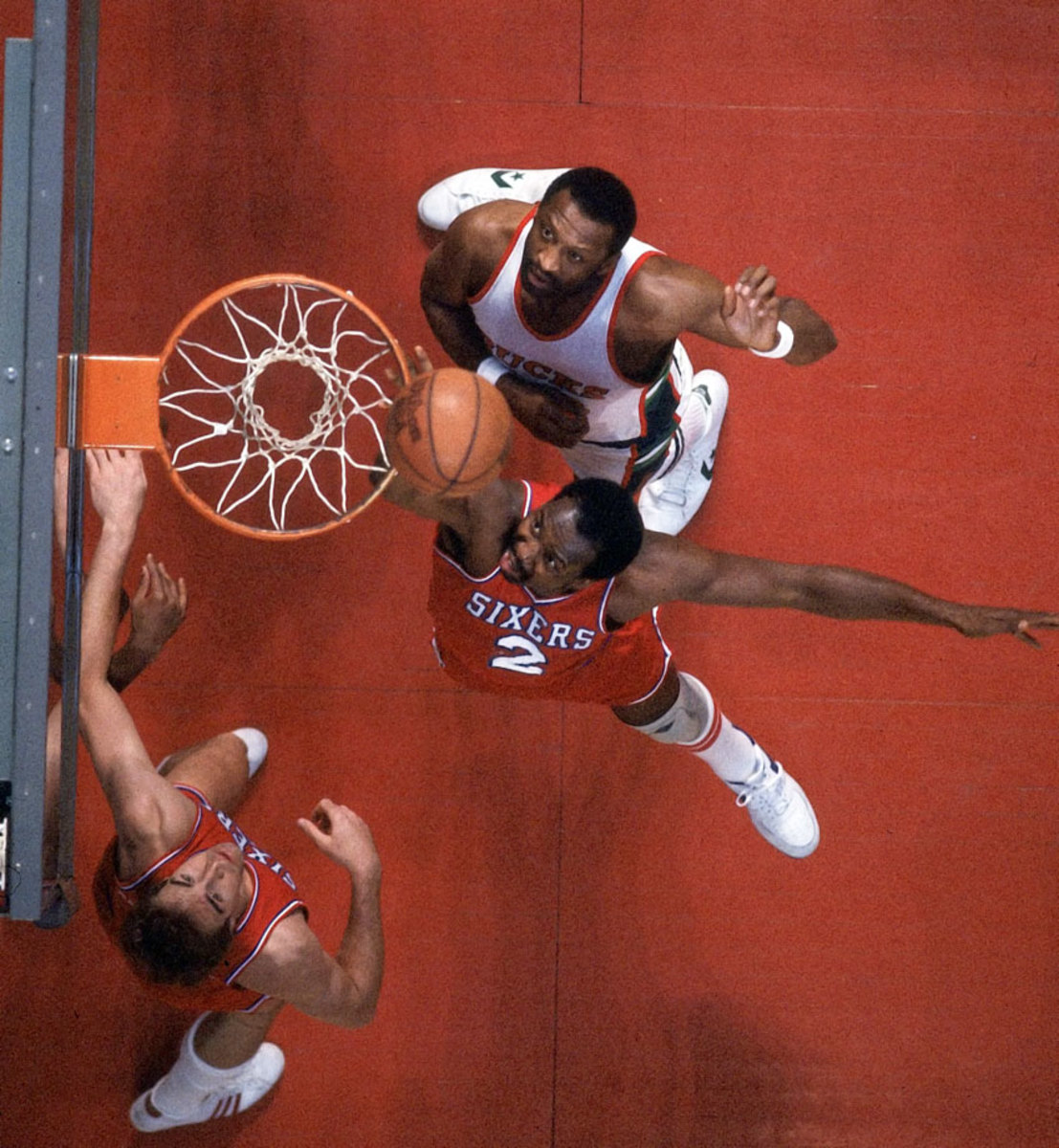
1983 NBA Eastern Conference Finals — Game 3
Moses Malone, Kareem Abdul-Jabbar and Magic Johnson
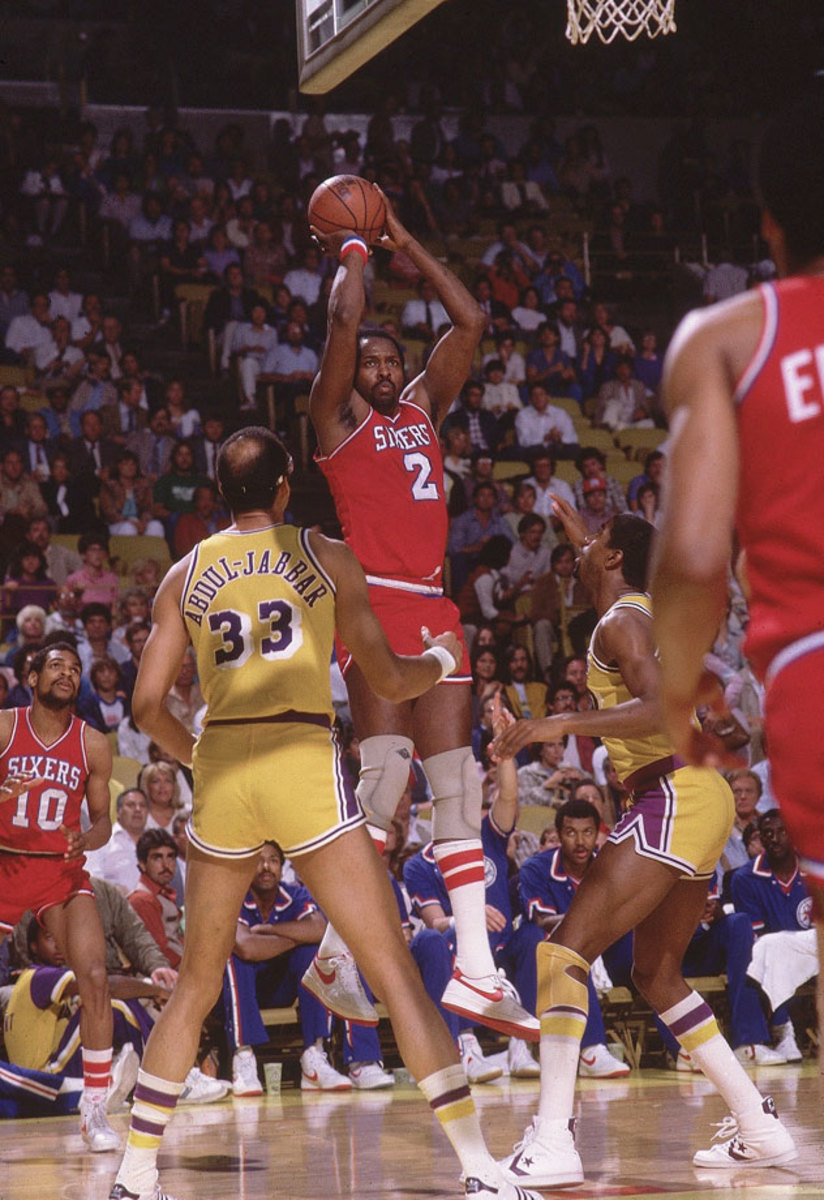
1983 NBA Finals — Game 4
Moses Malone and Kurt Rambis
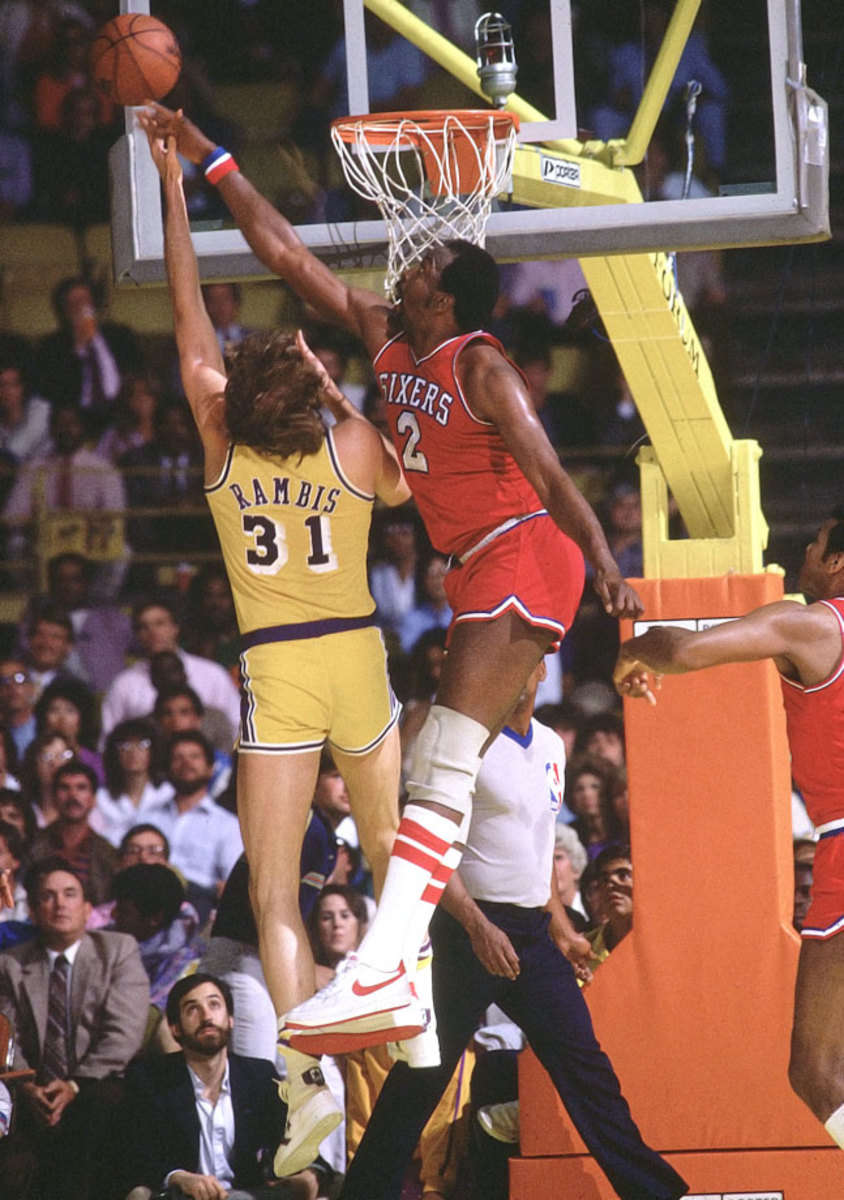
1983 NBA Finals — Game 4
Moses Malone and Brent Musberger
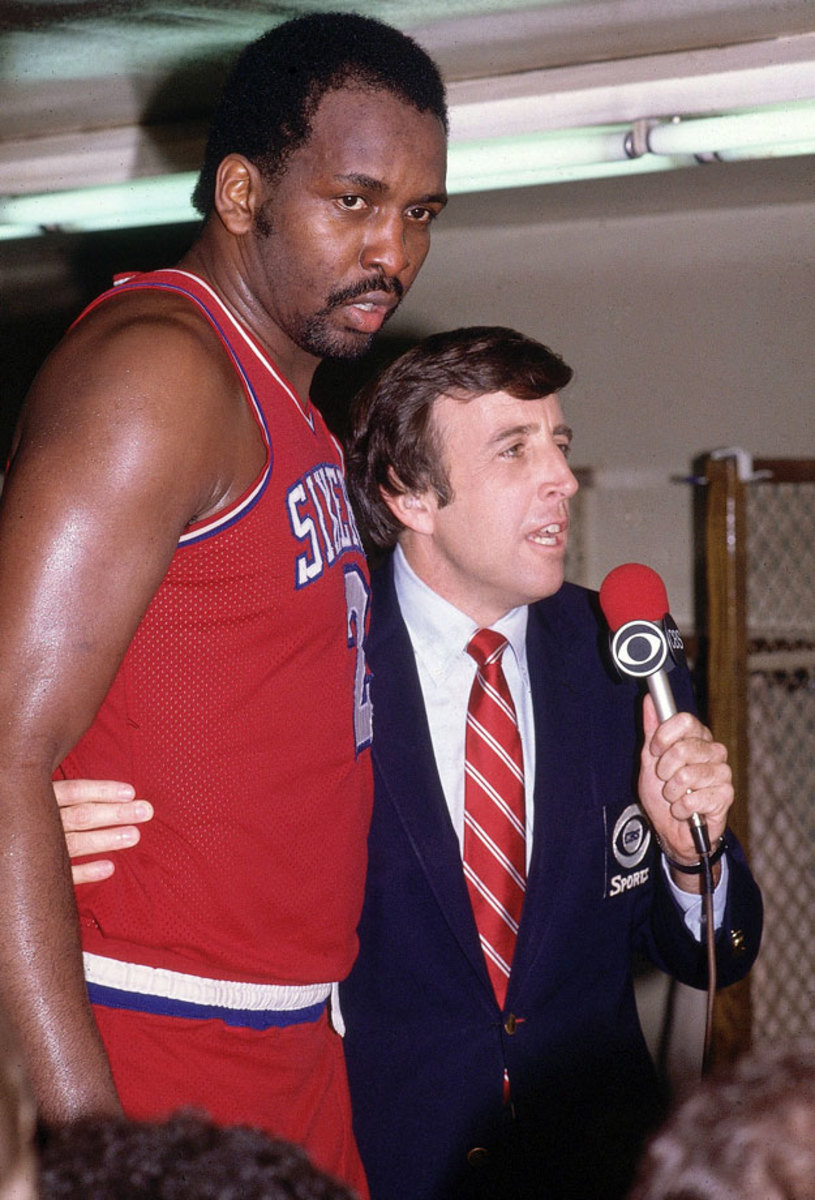
1983 NBA Finals — Game 4
Larry O'Brien, Moses Malone, Billy Cunningham, Julius Erving and Harold Katz
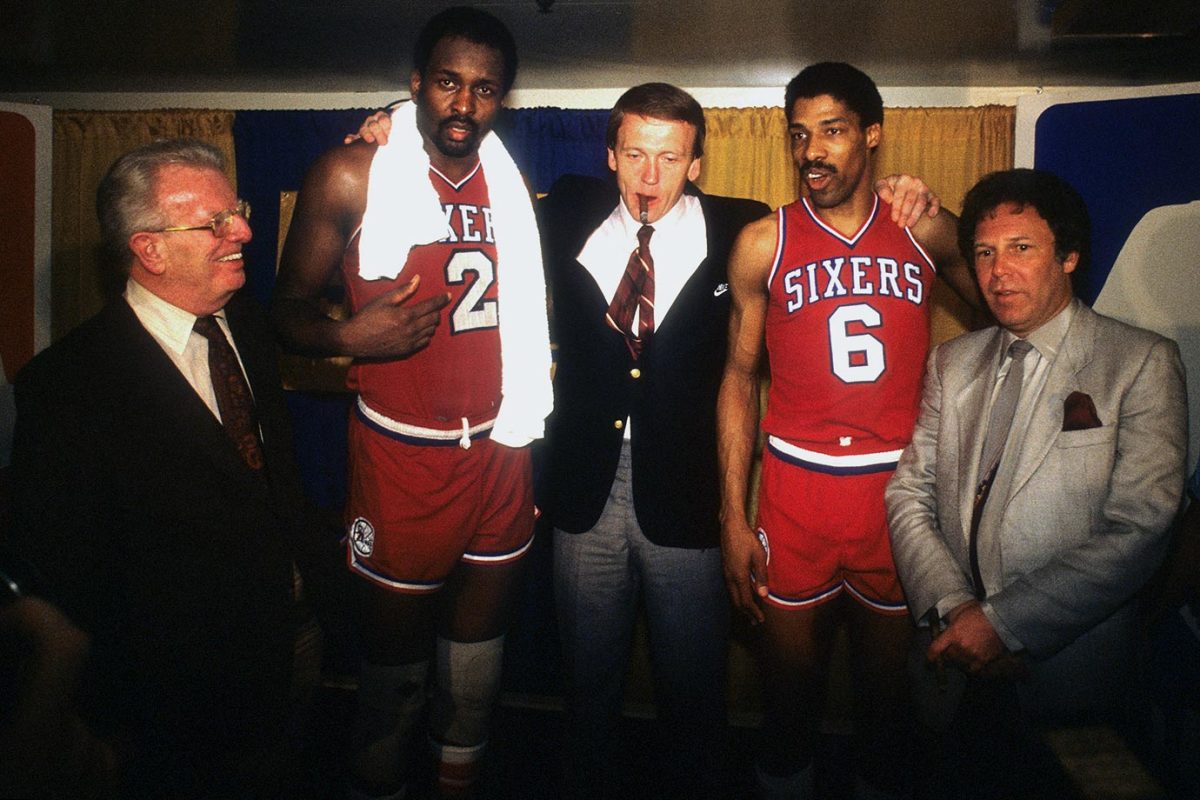
1983 NBA Finals — Game 4
Moses Malone
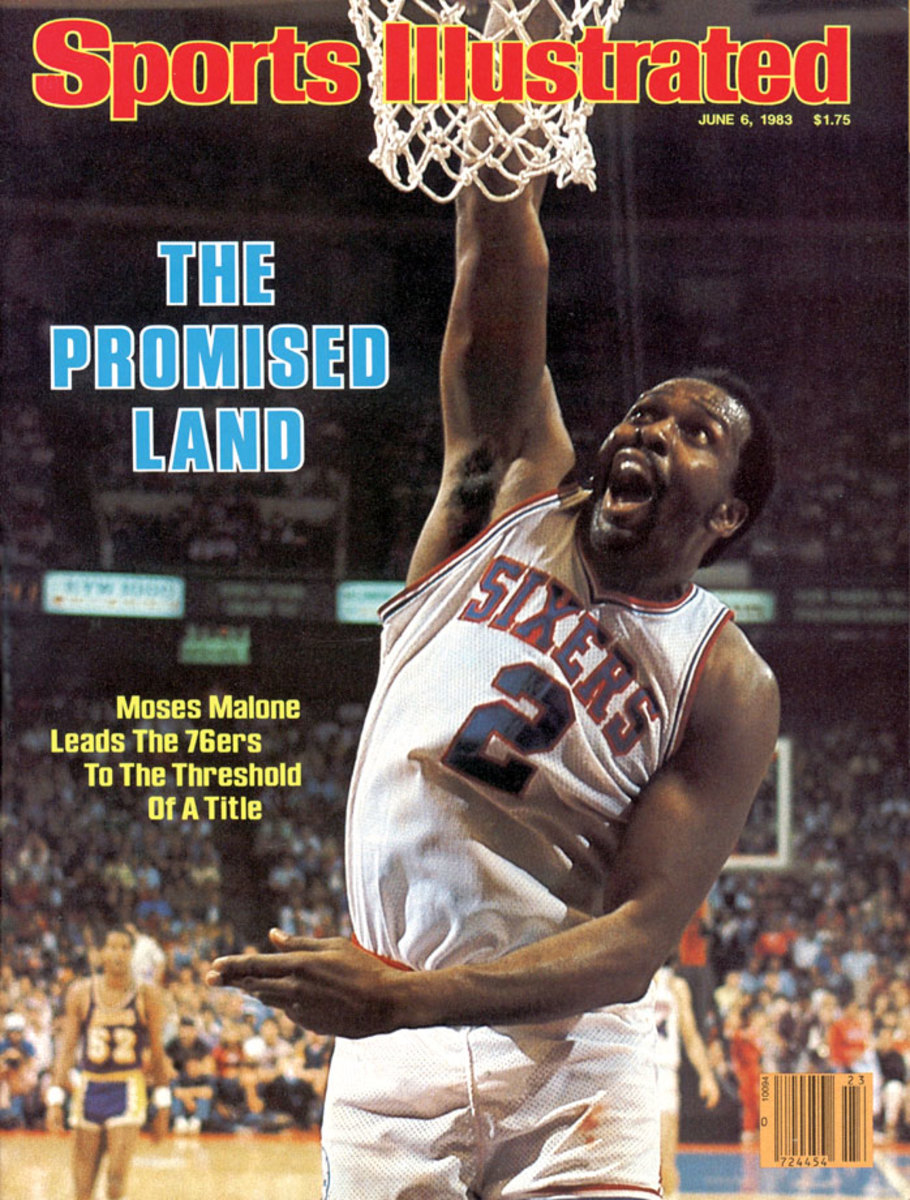
June 6, 1983 SI cover
Moses Malone
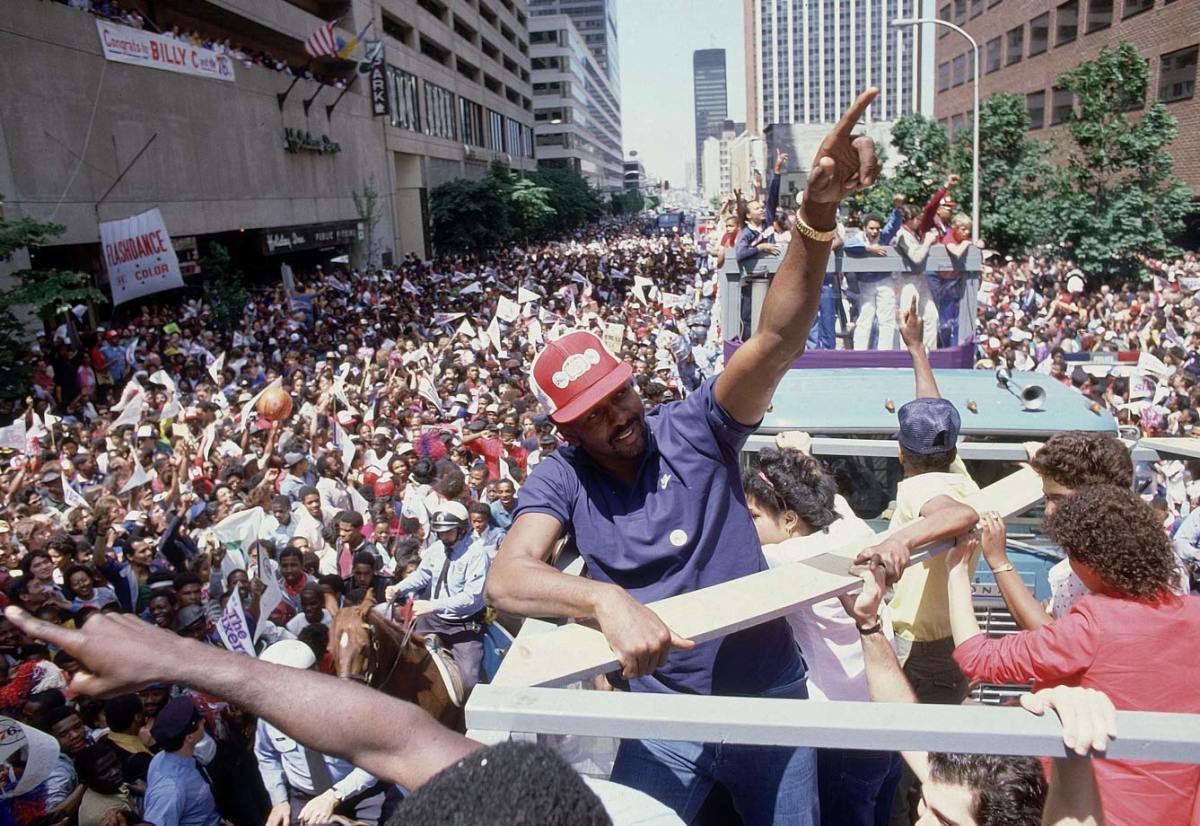
June 1983
Charles Barkley, Maurice Cheeks, Robert Parish, Larry Bird and Moses Malone
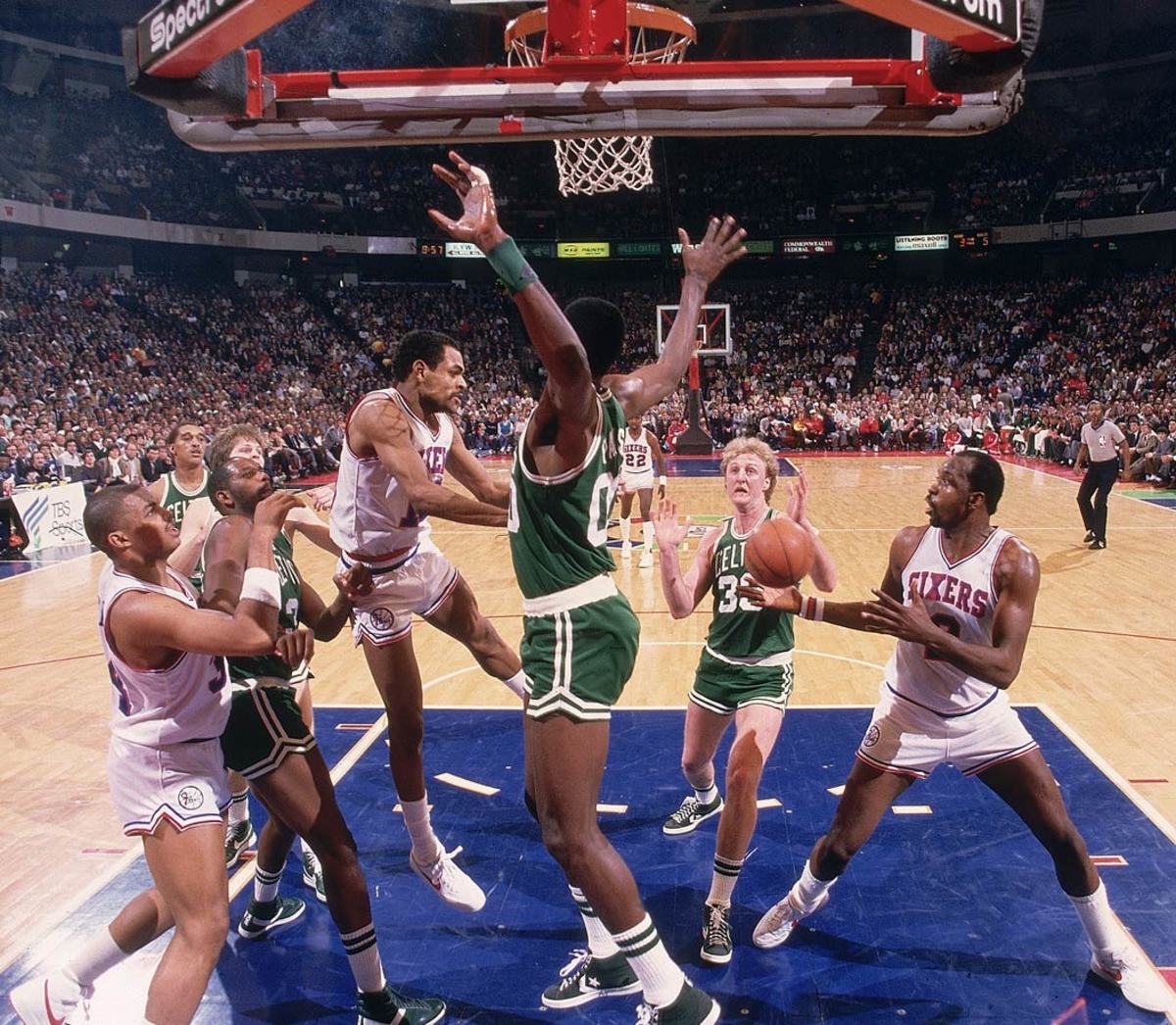
Jan. 30, 1985
Patrick Ewing and Moses Malone
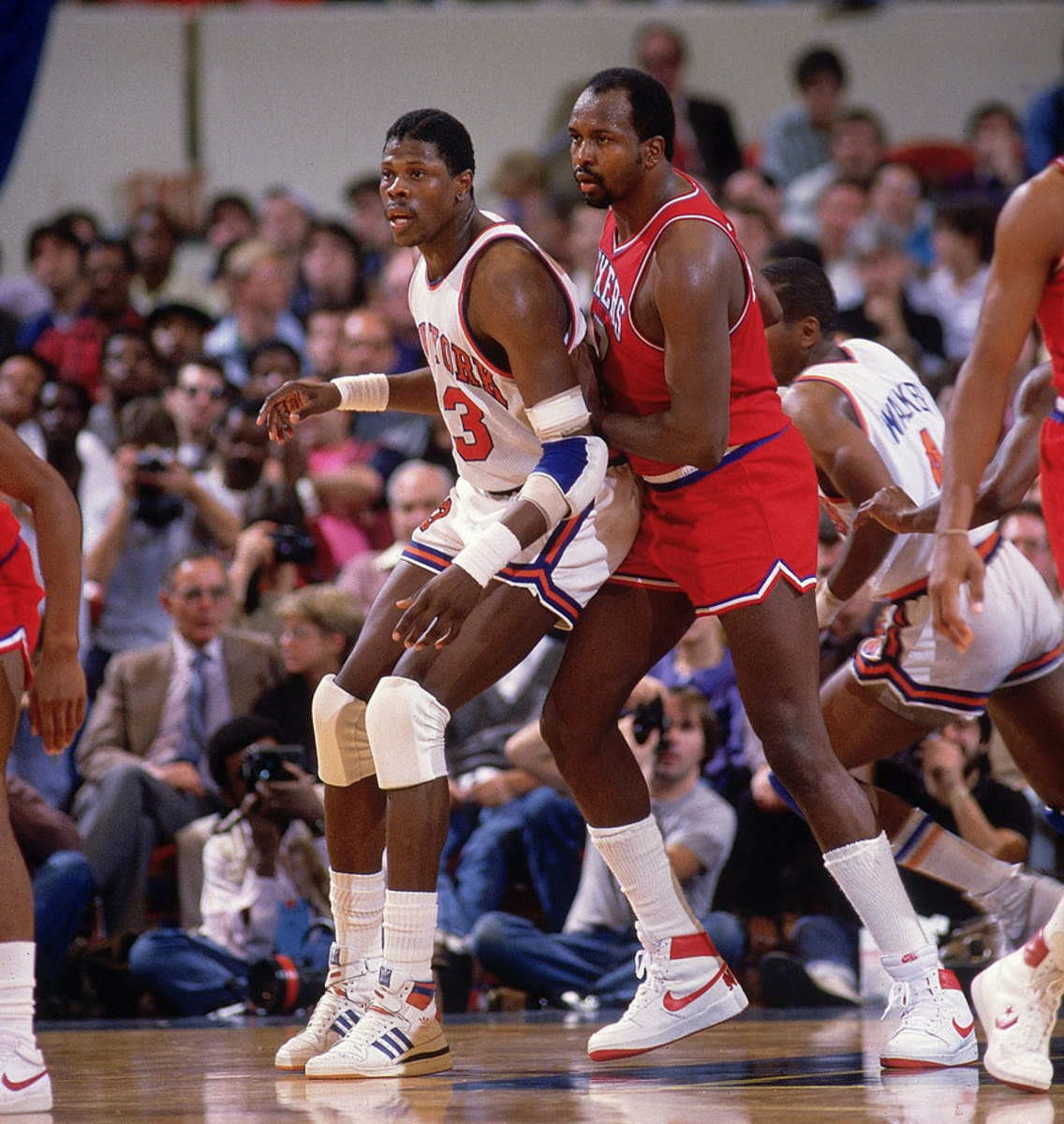
Oct. 26, 1985
Moses Malone and Manute Bol
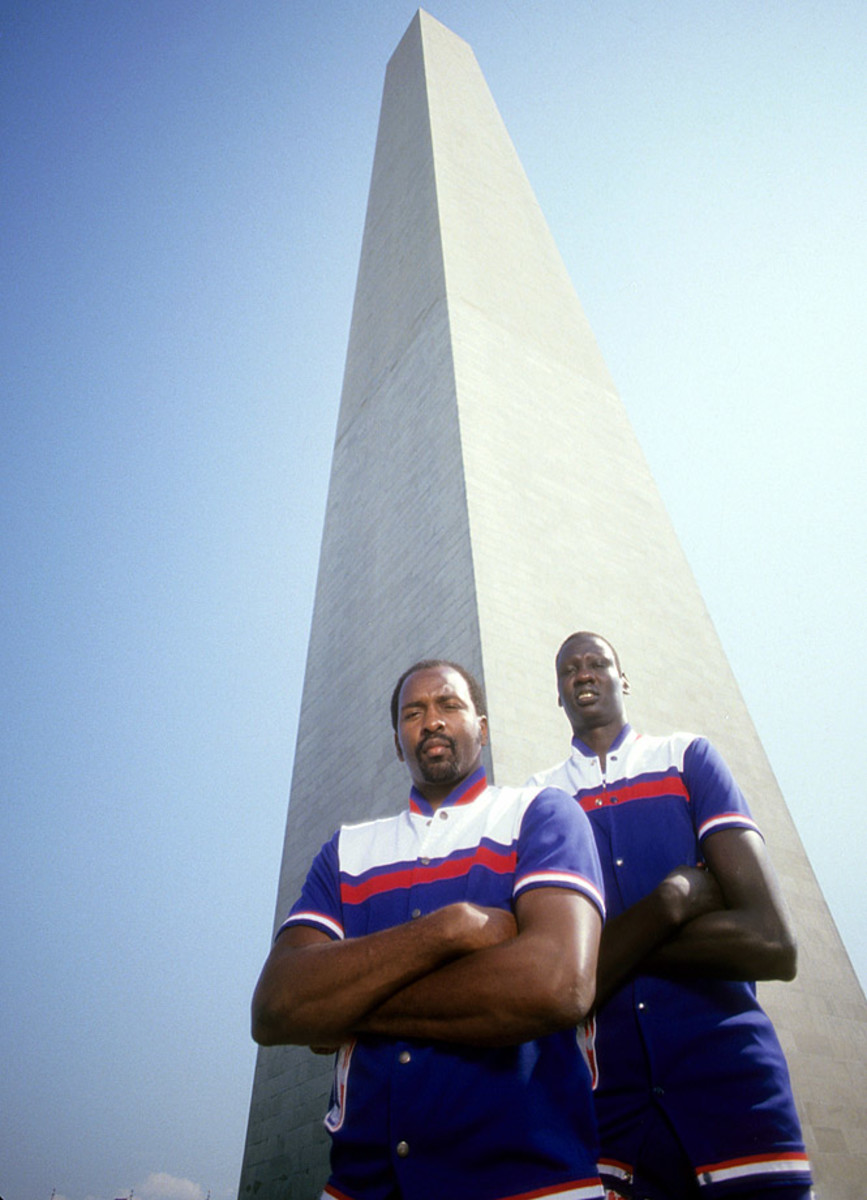
Oct. 5, 1986
Moses Malone
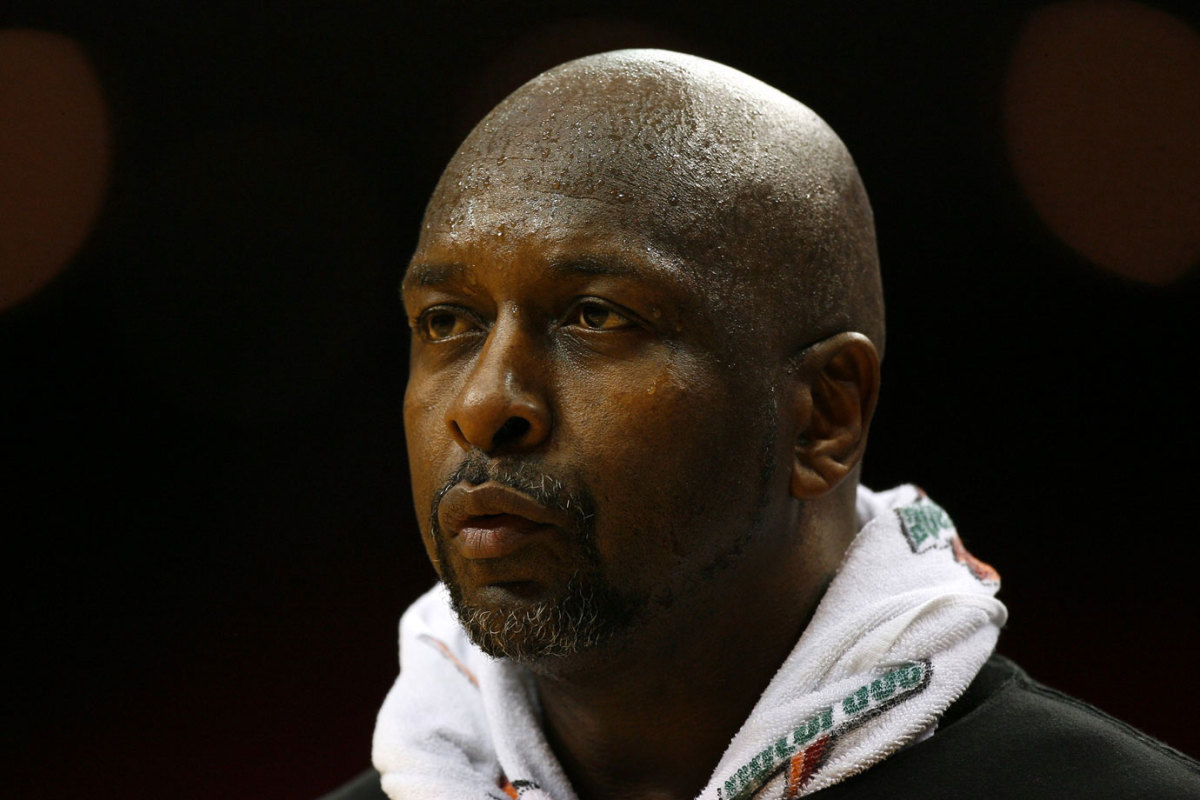
Dec. 9, 2006
Sometime next year, when his contract comes up for renewal, Moses Malone, Petersburg H.S. '74, will almost surely sign as the first million-dollar-a-year player in any team sport. "Well, now he can buy himself some Ph.Ds," says Pro Hayes, Shoot, he can endow some chairs.
Malone is now a month short of his 24th birthday and after four seasons in the pros--"my school years," he calls them--still in the spring of his career. He is 6' 10", wears 39-inch sleeves, and weighs 235, having added about 15 pounds since last season. He looks, in many respects, like a sale-price Wilt Chamberlain, for both have the same dark complexion, both are lithe, lean-muscled, cut high, with long legs, the rump jutting out. And, like the vintage Wilt, Moses has added a goatee, which his mother calls "a mess." But whereas Chamberlain's face always bore an El Greco sort of torment and grievance, Malone's countenance displays a certain serenity. Just about everybody likes Moses a lot.
In a game a couple of weeks ago, George McGinnis of the Denver Nuggets, who was going out socializing with Malone afterward, had been driving on the Rockets pretty successfully. At one point, on the side, McGinnis passed back to a guard and cleared the area, just minding his own business, casually cutting across the free-throw line. Very purposefully Malone left his own man, moved out and belted the unsuspecting McGinnis with a hip, almost knocking the strong man off his feet. The first expression on McGinnis' face was utter fury. Then he looked and saw that it was Malone who had done the deed, and all anger instantly passed, to be replaced by wonder that it could be the kid who had wrought such an act.
Moses moves at a controlled lope until he reaches the rack, but once there he immediately goes into a series of purposeful darts and dashes. Curiously, what most attracts attention are his hands, which are disproportionately small. Malone is genetically inexplicable; his father is 5' 6", his mother 5' 2". Only his hands seem a result of that union. During a game they hang altogether loose, but they are never lazy. Instead, they appear to possess some sort of kinetic quality. No doubt this is because, unlike other men his size, Moses cannot take his hands for granted. He says he can palm the ball, but he can't manhandle it, toy with it. Tom Nissalke, the Rockets' coach, has given him a series of hand-stretching exercises, like those for a pianist. "If Moses just had normal hands for a man his size, he'd have to be outlawed," says teammate Rick Barry.
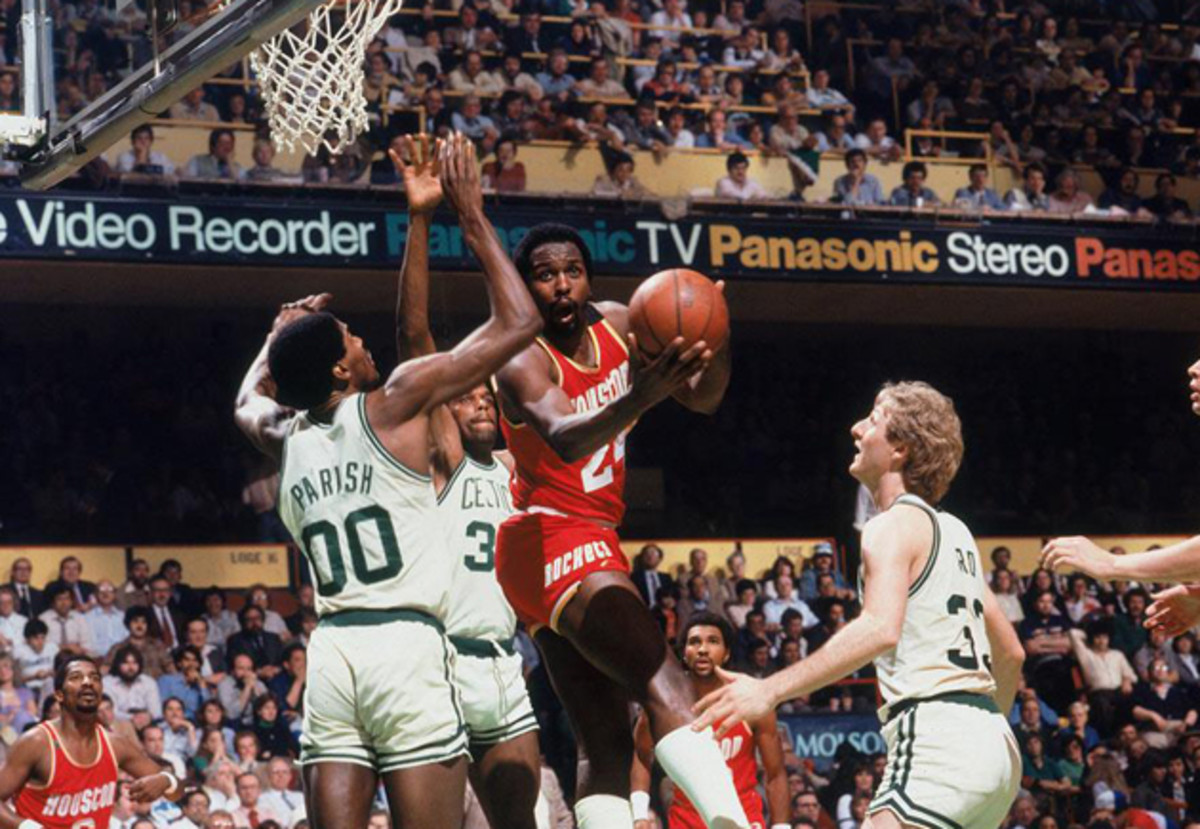
It is unusual, too, that his specialty should be offensive rebounding, because that craft is usually reserved for the cagey forwards who squeeze through the cracks while the bull centers are blocking one another out. Centers are supposed to be selfless purveyors of the ball, clearing it (a wonderful euphemism, obviously invented by a guard, meaning, you give me the ball). But at Petersburg High, Malone was so overwhelming, so powerful, the games so lopsided, that the other players didn't bother to work the ball in to the big man: if Malone wanted to score, he had to learn to get the ball off the boards himself. "Got 45 rebounds one time," he recalls, chuckling at the memory. "Back door, back door, back door."
Once he understood how naturally proficient he was at offensive rebounding, he began to work even harder on that specialty, in the same way, say, as the young Bill Russell did on shot blocking. Malone has carefully studied how his teammates shoot, what sort of spin and trajectory they employ, so that he knows exactly where he should be on every play. A lofty Calvin Murphy miss, for example, is liable to bounce higher and farther out than a Rudy Tomjanovich line drive.
By now there is little or no argument that Moses Malone is the prepotent offensive rebounder of all time. Neither is there much argument as to why. First of all, there is the matter of simple mathematics; Moses tries for every rebound since he assumes every shot will be missed.
Second, there is the matter of execution and determination. Rich Kelley, the New Orleans center, who is a distant third in the league to Malone in offensive rebounding, says, "He has quickness, timing, all the things you would expect, but the main thing is his tenacity. Eighty percent of Malone's game is on the offensive board. It changes everything. You play the Rockets, it's something entirely different, because I'd say a third of their game is Moses on the offensive board, keeping the ball in play. And that's completely unique to any team.
"What goes through your mind is that you have to box him out every damn time, every time the ball goes up. It just wears on you, mind and body. The other good centers learn to cruise for a quarter. They pick their spots. Not Moses. By the end of every game against him, you're whipped." Malone's best rebounding quarter is often the fourth. The Rockets have never lost an overtime game since he joined the team; they have won nine in a row, one short of the league record.
To his effort and instincts, Malone has added guile. He knows how to gain leverage by using an opponent against himself. He knows how to avoid drawing fouls. Indeed, because he tires and frustrates his rivals so often, he is himself fouled far more than any other center in the league.
While neither Malone nor his teammates fear that his exertions will wear him out over the long haul, opponents are skeptical. Even before the season started, Elvin Hayes of the Washington Bullets offered the observation that Malone would be through by Jan. 1, and while he has breezed by that deadline, whether he will be able to survive the remainder of the long season and then go head-to-head against a monster center in a couple of seven-game playoff series is still moot.
"But you can't change him," Nissalke says. "The last time he played Jabbar, he hung around practice for an extra half hour, having a ball, playing one-on-one. Then he goes out that night, plays 50 minutes in overtime, gets 25 rebounds and 34 points. I've told Mo, if he ever decides to be a study in cool, like some of the stars in this league, he could lose it all."
"I know how to pace myself," Malone says. "And alls I know is, after two or three quarters they're tired, and I just keeps on coming. The bigger they are the more I be a greyhound."
In Houston, Malone lives alone in a town house in the southwest section of that booming, sprawling, crawling, ugly city. He usually tools about in a Lincoln Continental, only occasionally taking a spin in his two-tone Rolls. He makes something like $300,000 a year, but the Rolls is his only extravagance. He spends judiciously, eating many of his meals at cafeterias, leaving the bulk of his income for conservative investments. When Malone retires from basketball at 35 or so, he should be in a position to live comfortably off his income for the rest of his life.
His house was robbed not so long ago, so now it is chained and chock-full of electronic watchdogs. Inside, at his leisure, Moses watches television and listens to music simultaneously. The rooms are bright, filled with plants and some original art. One painting is a portrait of Moses in the uniform of the Petersburg Crimson Wave, which was presented to him on Moses Malone Day. But the centerpiece of the living room is a larger painting, which shows, to all appearances, the rear view of a naked woman. However, looked at just the right way, under instructions of the owner, lo and behold, what is revealed is the profile of Abraham Lincoln. It is impossible to describe this phenomenon in any clearer fashion, and the failure to do so is not indicative of this correspondent's stupidity.
The portraits in the rickety old house in Petersburg, where the coaches came to see Moses and his mother, were somewhat more commonplace; they were of Martin Luther King Jr., President and Mrs. Kennedy, Jesus Christ. When he signed with the Stars, Moses got enough of a bonus to allow him to buy a new house for Mary Malone. It is a trim ranch in the suburb of Ettrick, right on the route where Lee's army fell back the last time, defaulting Petersburg to Grant and retreating at last to Appomattox.
Mary Malone, a small, happy woman with a gold front tooth, occasionally leaves her new house in Ettrick and drives back to stare at the ramshackle place on St. Matthews Street. "Sometimes I likes just to come back and look," she explains, smiling. Very few people have dreams come true, and fewer still can return to see their sad past so vividly, but the house was condemned after the Malones left, and it remains exactly as before, an everyday Brigadoon. "Look, they's still even got the curtains up," Mrs. Malone exclaims. Seeing what was makes what is all the better.
At the old house on St. Matthews, the plumbing often didn't work, and for a long time there was a big hole in a wall where a window was supposed to be. When the house would become overrun with recruiters (on soft nights some would sleep on the porch), Moses would climb out a window, get onto the roof and take off. "I did a lot of ducking and hiding," he says. This would leave his mother to entertain the recruiters; the experience eventually left her with bleeding ulcers that not even Oral Roberts could cure in his desperate effort to attract her son to his college.
• MORE NBA: Sixers, Nets legend Dawkins dies | Players remember Dawkins
Moses is an only child. His mother, says she, threw his father out of the house when Moses was two, because he had taken to drinking, and he disappeared, surfacing only when he understood his son had struck it rich. Advised by Donald Dell and Lee Fentress, his lawyers, Moses made his mother get divorced then, to protect herself.
She hasn't remarried, devoting herself to her son, whom she called "Teeny," because he was such a skinny baby. Mary Malone, a Hudgins from out in Chesterfield County, was the oldest of nine children and was forced to drop out of grade school to help support the family, so she never could get any but the most menial of jobs. When her son signed for six figures, she was a packer at the local Safeway, making about $100 a week. Still, she spoiled Moses something awful. The Christmas he was six she gave him a fancy organ, which is still in his room in Ettrick. Mary Malone had been raised in a very limited world; she had no reason to believe her son would have an easy life as an adult (who did, that she knew?), and so she was determined to give him the one thing she could, which was a free-and-easy childhood. "I didn't like him to do no work at all," she says. "I know how hard I come up, so I didn't want him to."
The idea that her son might be a college man thrilled her, and she held out for that right up to the time the Stars' representatives spread real $100 bills across the bed, and for the first time she could visualize a house with a toilet that worked and no holes in the walls. Even now, with the living room studded with Moses' trophies, his high school diploma still occupies the place of honor on the television console.
So Moses' childhood, though deprived, was not a sad one, and he filled it playing games--first football, then basketball--up Harding Street, from Byrd's Confectionery to the Virginia Avenue Playground at the top of the hill. On summer nights he would play till one or two in the morning, often by himself. "Yes, he do that," Mrs. Malone says. "He always loves his basketball, and that what give that boy his courage."
When Moses was about 14 or so and began to appreciate how very good he was, he wrote out a message to himself and placed it in the family Bible, which was worn and dog-eared and had no cover, that Mrs. Malone's father had passed on to her. A great many people close to Moses know about this note. Apparently, it was a promise from Moses to himself that he would become the best high school player in the country by the time he finished his junior year. Then, that accomplished, it seems he sat down and wrote another note for the Bible, this one to the effect that he would become the first high school player to go directly into the pros.
Malone knows he cannot deny the existence of these notes, but, guarding his privacy, as ever, he is as evasive about them as he possibly can be. He says he does not remember what the notes said. However, still tucked into his Bible, at Isaiah 64, are clippings Moses put there after his first varsity game, when he was called up from the jayvees as a freshman and went for 30 in an upset victory: WAVE GETS REVENGE FROM MIDLOTHIAN.
He only got better, and for his last two seasons Petersburg was undefeated, state champs, 50-0. Meanwhile, in the classroom Malone was present and accounted for, but never involved or particularly proficient. A great part of his problem was psychological. Schoolwork was both alien and intimidating to him. "He'd say nothing, even if he knew something," Pro Hayes says. "He didn't want to risk being embarrassed." It is also true that Moses had bad teeth, and so he refrained from talking, keeping his head down when he had to speak.
He just scraped by, trading in algebra for art to make it. "It was a matter of goals," says Lefty Driesell, the Maryland coach. "I firmly believe that if Mo had put it in his Bible to be a B student, then he would have become one."
Almost from the beginning Malone had decided to play for Driesell at Maryland. "Lefty was the type of fellow who would tell you things right," Malone says. But he kept this decision to himself, for he enjoyed all the fuss, the foolish attention of grown men, and he listened courteously to all the recruiters' lies and supplications. It was a game, and he became a cottage industry in Petersburg, with doltish recruiters getting conned out of all sorts of front money by hustlers who promised that they could deliver Moses.
In the end he signed a letter of intent with Maryland, and it was only a matter of days before he started matriculating at College Park that the Utah Stars showed up with a "multimillion-dollar contract." In fact, it guaranteed very little, being studded with one-year, one-way options. Malone made the Stars show the contract to Driesell, and as soon as the coach took one look at the document, he called in Dell, the Washington lawyer and former Davis Cup captain who had made a formidable reputation representing tennis players, notably Arthur Ashe.
Dell was caught in a tricky situation. He had been summoned to help Malone by Driesell, who was obviously a rival of the Stars. Furthermore, it was one of the more Draconian of the NCAA rules that a kid who took on counsel to help him decide between pro and college ball was automatically deemed a pro and thus denied the choice for which he sought counsel in the first place. Dell had to gingerly position himself as no more than a friendly adviser.
He and one of his law partners, Lee Fentress, read the contract and then went into a room in their offices where Driesell, John Lucas and Moses and his mother were assembled. "As soon as I entered the room." Dell says, "Moses dropped his head. At that time, that was his natural reponse to any stranger. I wanted to catch his attention, and so I walked right over to him, and even before I said hello. I said, `You ever hear of slavery, Moses?' His head came up like that. He stared straight at me, and he listened to every word I said."
Dell explained the contract's loopholes, but because he was sure that Utah would be back, raising the ante, he told Malone that he was welcome to call him for advice. "But understand this, Moses," Dell told him. "The minute you sign one thing, one scrap of paper, forget it, because then I can't help you." The next day, from Petersburg, Malone called Dell constantly. "Eighteen calls--18." Dell says. "Every time Utah made a new move, Moses called me. I knew then that he was a hell of a lot smarter than he was given credit for."
By now the Malone saga was sharing front-page headlines in Washington with the final days of Watergate. But as the Utah offer firmed up, Maryland's chances began to fade. Moses kept talking about his dreams, about his note in the Bible. "He knew what he was doing," Lucas says. "He wanted the pro atmosphere, all the looseness. Mo's nothing like he appears to be. He was already an extraordinary way ahead of his time."
Again Dell assembled all the principals in his offices. The Utah envoys were put on hold in one room while Dell and Fentress met with the Malones, Driesell and one of his assistants, Dave Pritchett. It was an emotional encounter, and as Lefty perceived that the kid's mind really was made up, that his certified national championship was drifting away, he grew anguished and distraught. He talked about the promise in the Bible. "The Good Lord won't mind you waiting for a year or two," he said. Moses did not budge. Pritchett began to cry, and Driesell, despairing all the more, became melodramatic.
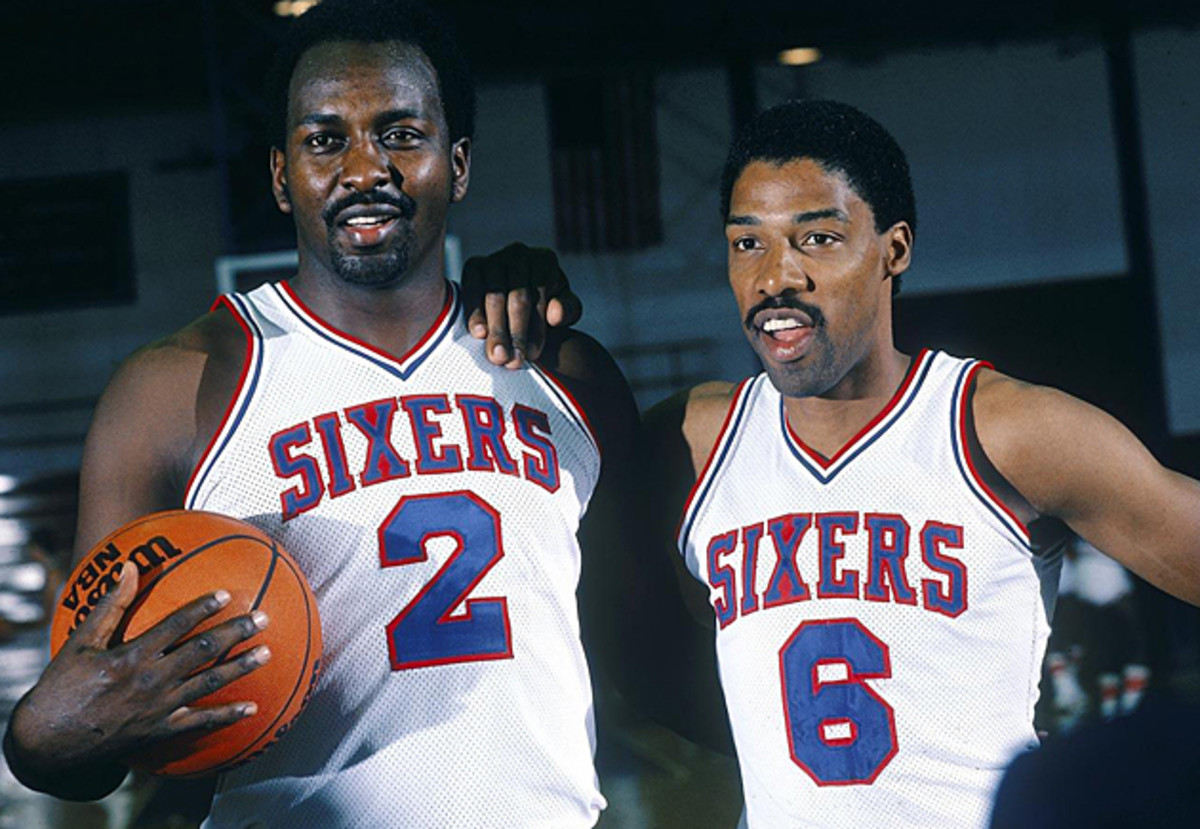
Suddenly, Malone looked up and glared at his friend. "Stop jivin' me, Coach," he snapped. Driesell froze. School was out. Dell and Fentress then gathered up the Malones and went into the other room to strike the final deal with Utah, whose emissaries still did not know that they had won the battle. But hardly had the negotiations started than the door flew open and Driesell burst into the room, ablaze. He came at the Utah people, and they cowered. Lefty is a big man. "You better take care of him," he shouted. "You better take care of Mo." And then, satisfied and cooled, he shook hands and was gone again.
Unfortunately, this outburst, however genuine, however affectionate, served foremost to erode Malone's bargaining leverage. But Dell and Fentress kept pressing, and hours later, past midnight, the parties agreed. Then Dell suddenly remembered that Malone was under 21 and could not sign a document such as a professional basketball contract in the District of Columbia, and so the whole entourage had to troop across the Potomac to a Ramada Inn in Virginia, where 18 is the legal age. It was there, early in the morning in a motel room, that Moses Malone answered the second promise to himself and his mother's Bible.
College baseball doesn't make any money, so baseball players have been turning pro out of high school for generations, without athletic Pharisees getting agitated, but Malone's decision was greeted as nearly unholy. Dell himself could not fall asleep for three nights, being plagued by thoughts "that I really might be a flesh peddler."
SI’s Top Covers of the 1980s
November 28, 1983: Michael Jordan and Sam Perkins
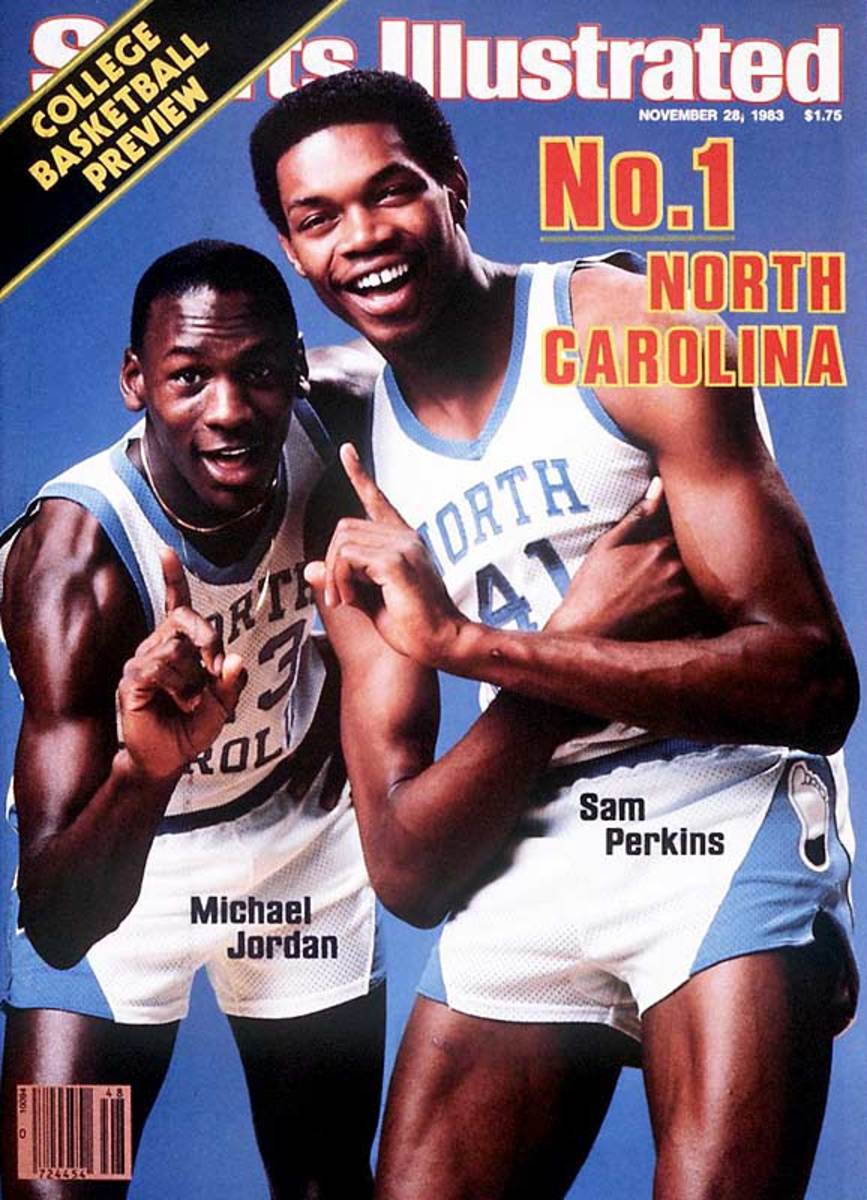
Michael Jordan has graced the cover of SI 50 times. This was his first and Sam Perkins's third. The North Carolina duo led the Tar Heels to the 1982 NCAA championship, where the young Jordan, who was named ACC Freshman of the Year, hit the winning bucket against Georgetown. It was a no-brainer that the two were the most dominant pair entering the 1983 season.
July 3, 1989: Pete Rose
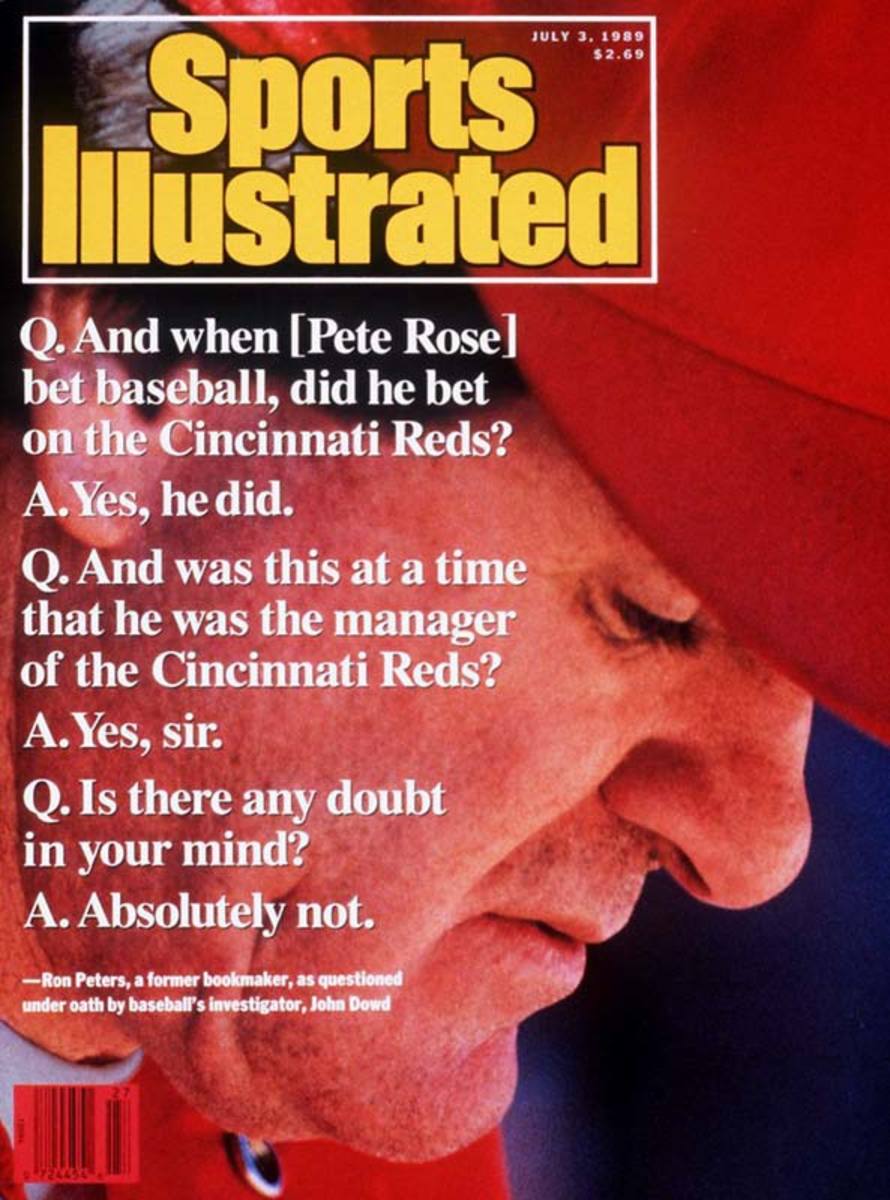
In February 1989, Pete Rose, who seemed to be a then-shoo-in for the Baseball Hall of Fame, vehemently denied ever betting on a Major League game. However, after the release of the Dowd Report, an investigation spearheaded by MLB special counsel John Dowd, the truth came out. And it wasn't pretty.
April 24, 1989: Tony Mandarich
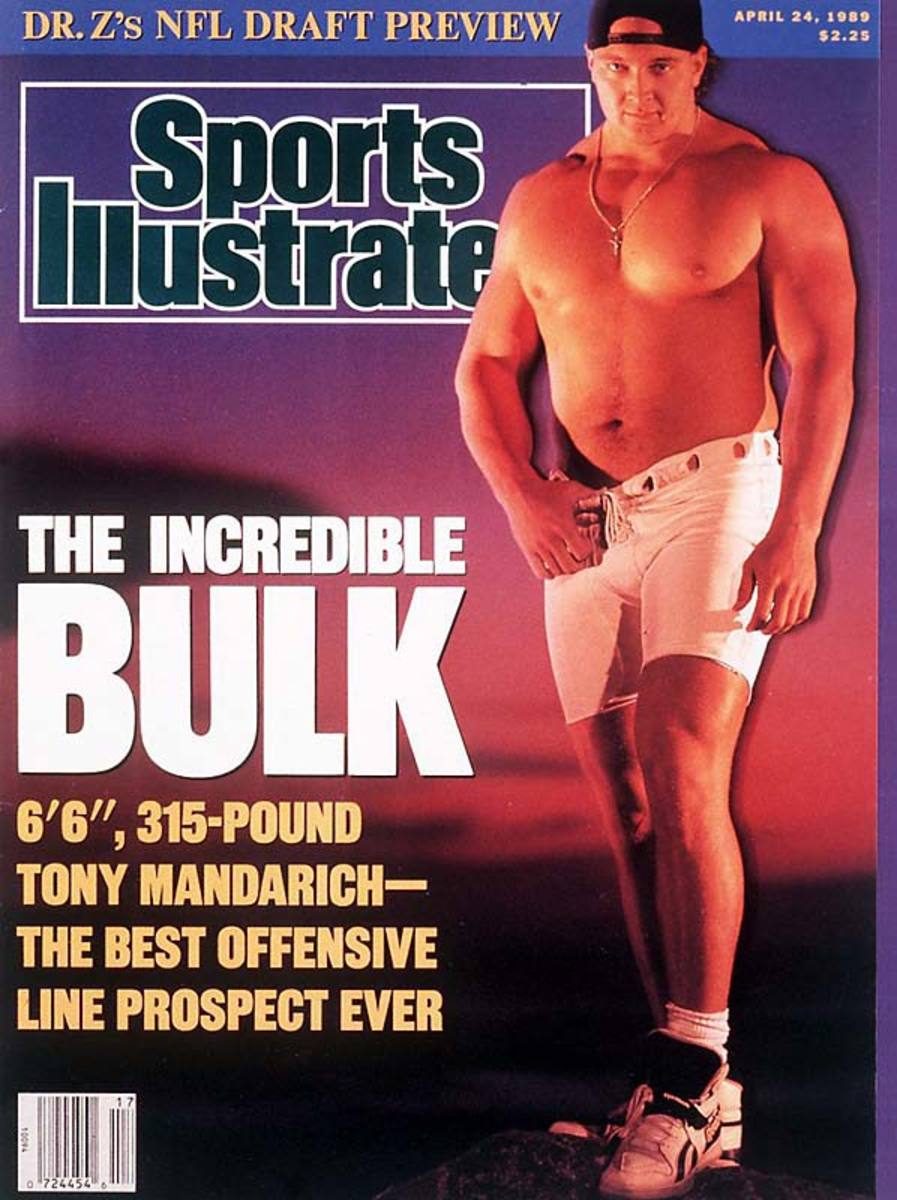
As this cover boldly proclaimed, Tony Mandarich was the best offensive line prospect of all time. Unfortunately, he never lived up to the hype and lasted only seven mediocre seasons in the pros. He later revealed that his incredible bulk wasn't only due to countless hours in the gym, but also because of steroid use.
August 13, 1984: Mary Lou Retton
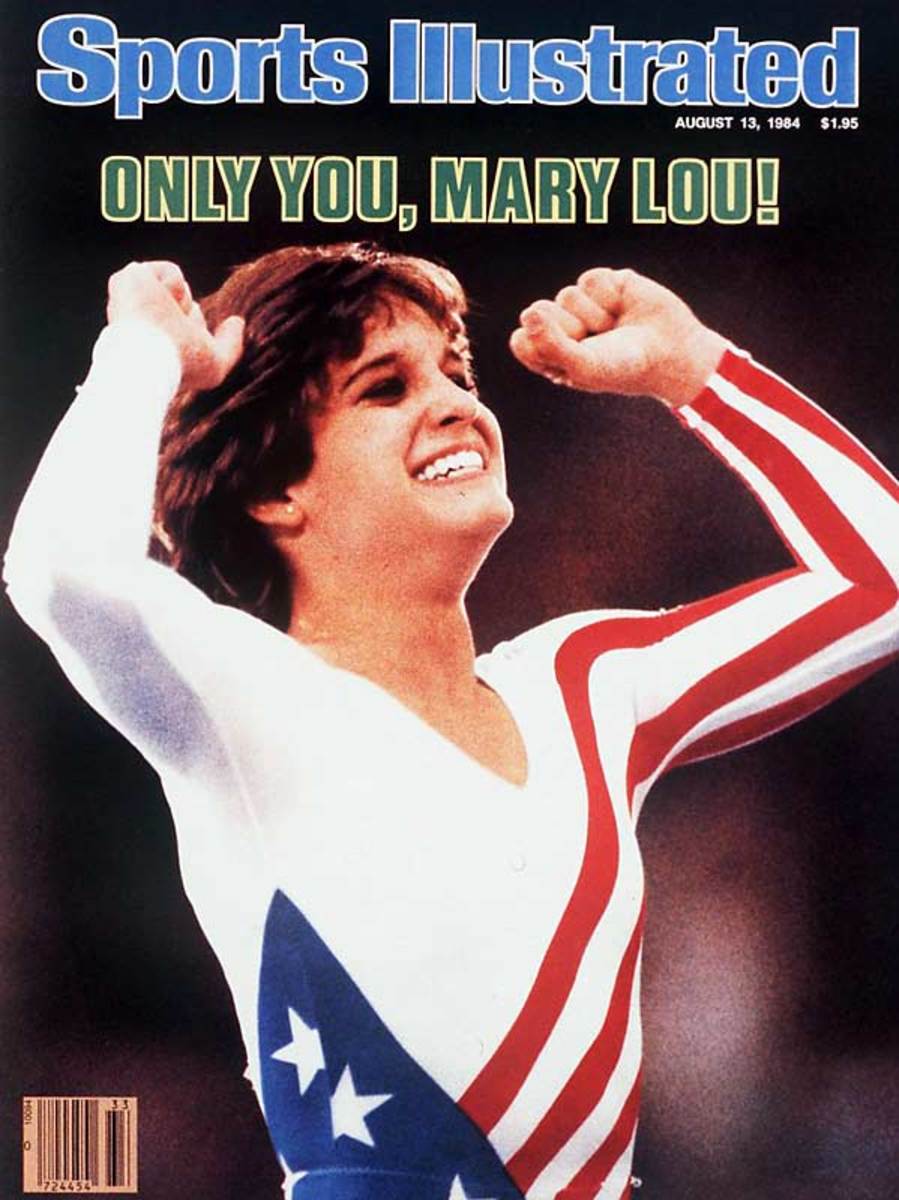
Her inspiration was Nadia Comaneci, the Romanian gymnast who, as a teenager, landed the first perfect 10 in gymnastics history. But at the 1984 Olympics, Mary Lou Retton cemented her own legacy as she earned perfect scores in both the vault and floor exercise to win the all-around title by a mere five-hundredths of a point.
January 6, 1986: Mike Tyson
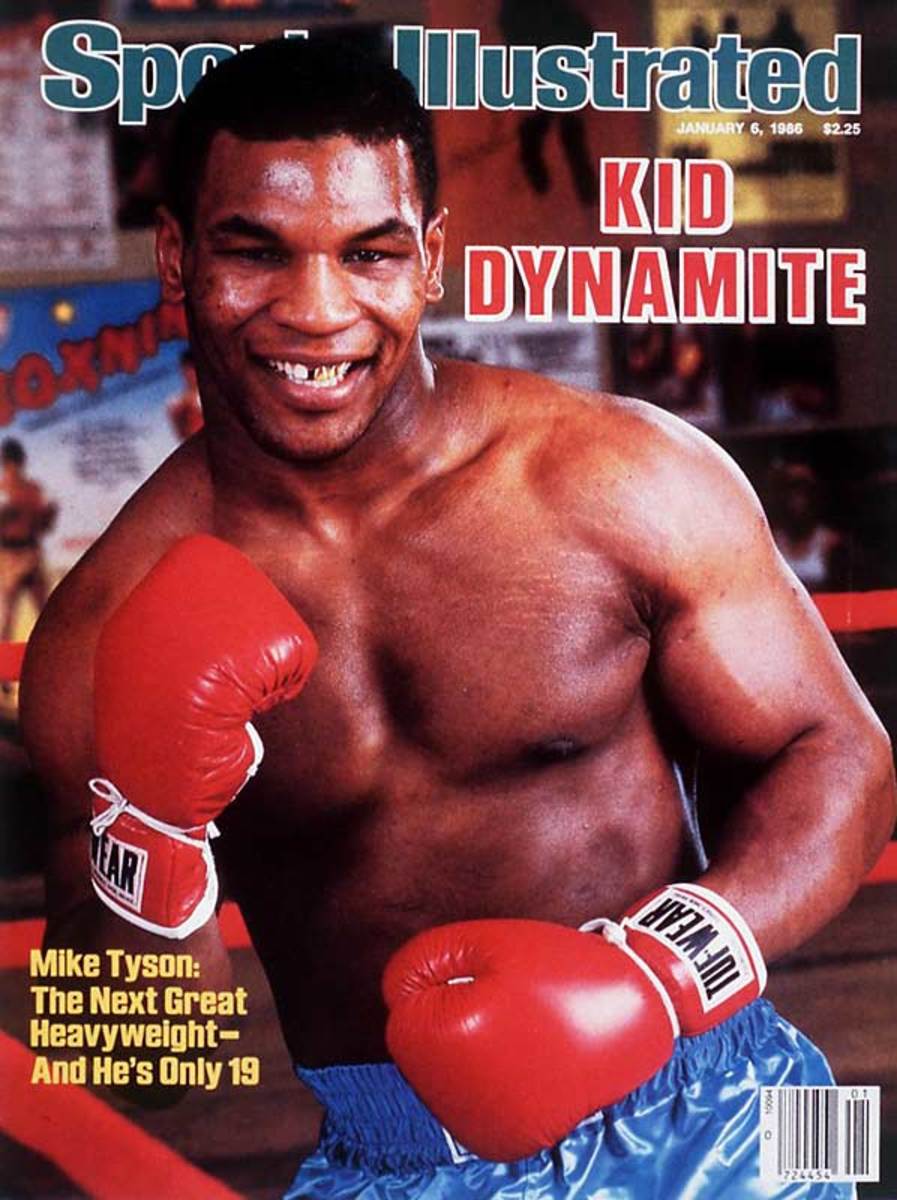
Even before his first nationally-televised bout, Mike Tyson was already making headlines. In his first two years as a professional, "Kid Dynamite" won 26 of his first 28 fights by knockout, 16 in the first round.
September 29, 1986: Lawrence Taylor and Mark Gastineau
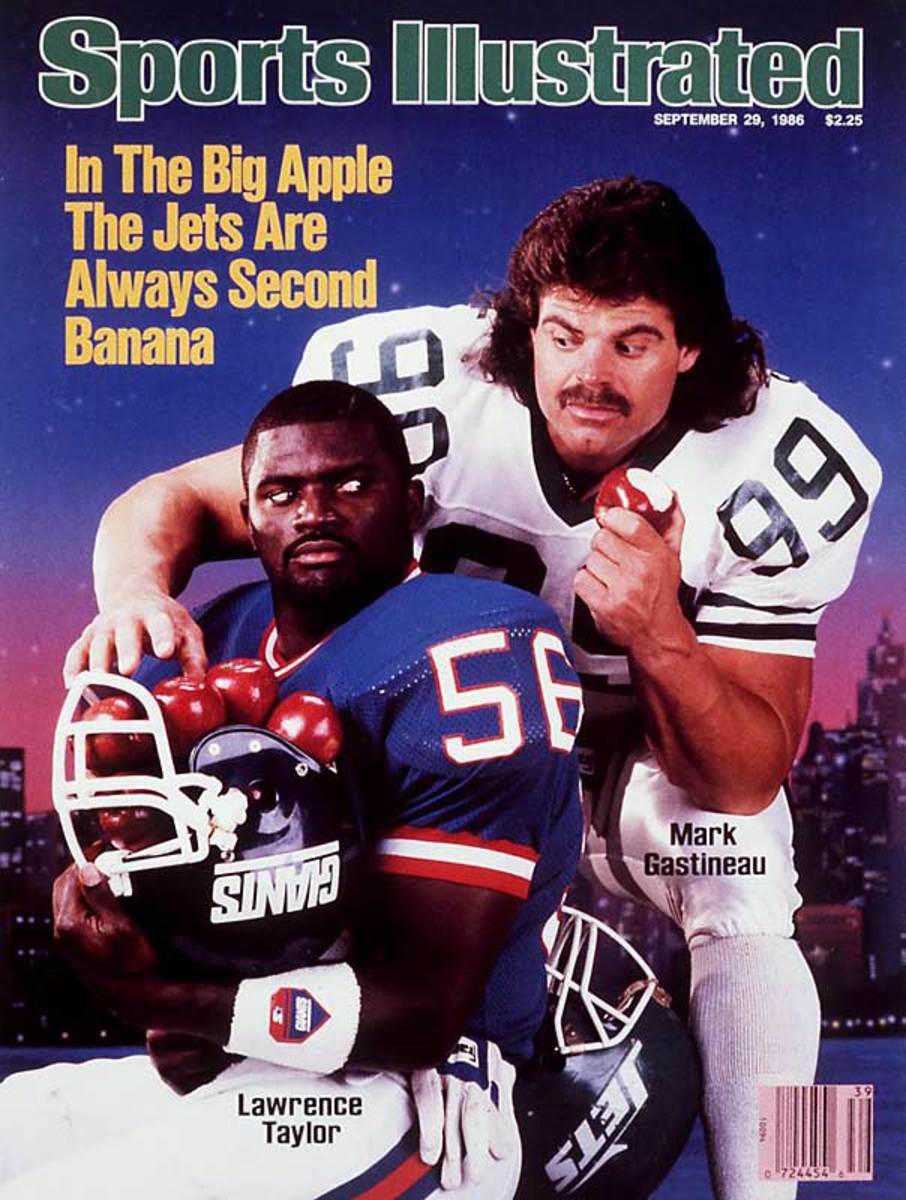
New Yorkers are often torn between the Giants and Jets. And in 1986, the two defensive-minded squads put on a show for fans, thanks to Giants linebacker Lawrence Taylor and Jets defensive end Mark Gastineau.
October 3, 1988: Ben Johnson
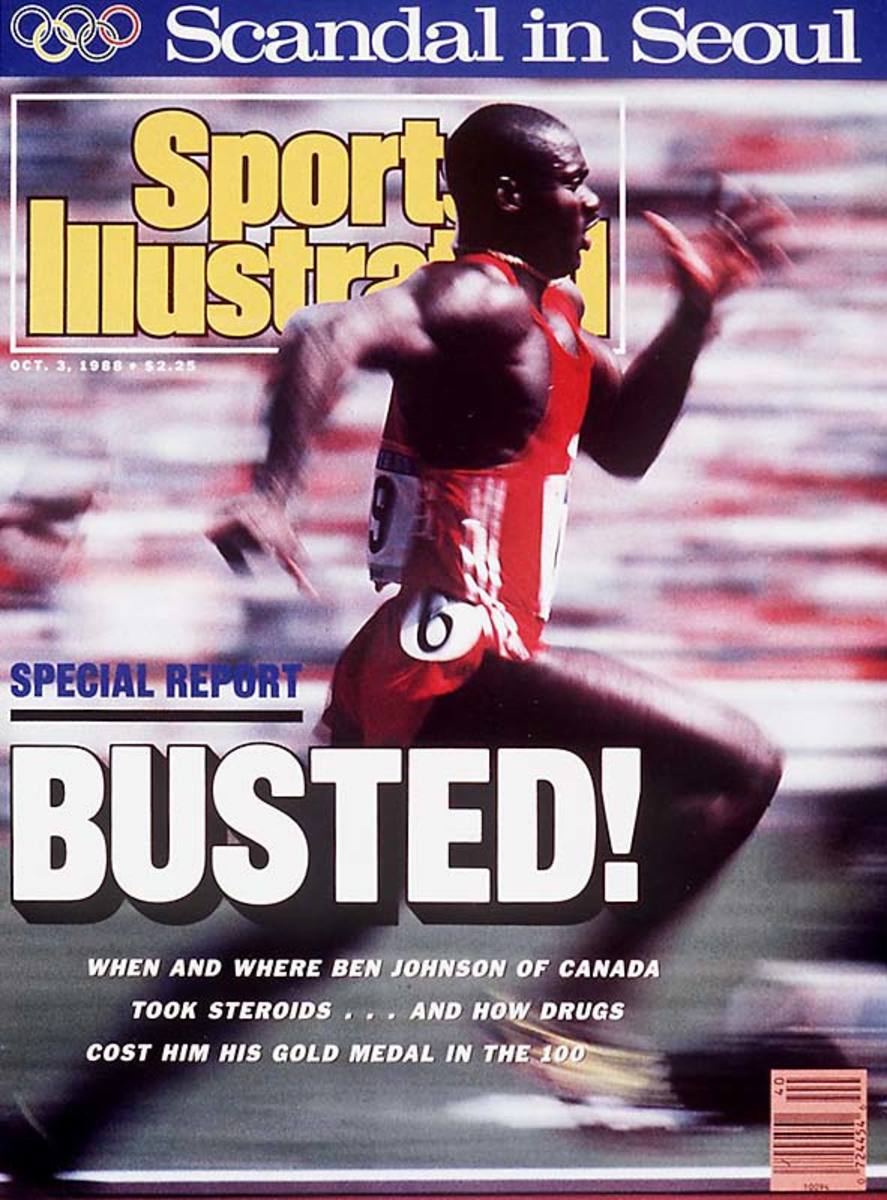
Four years after winning two bronze medals at the 1984 Los Angeles Games, Canadian sprinter Ben Johnson became the face of doping in sports when he was stripped of both his 100-meter world record and 100=meter gold medal at the Seoul Olympics.
November 19, 1986: David Robinson
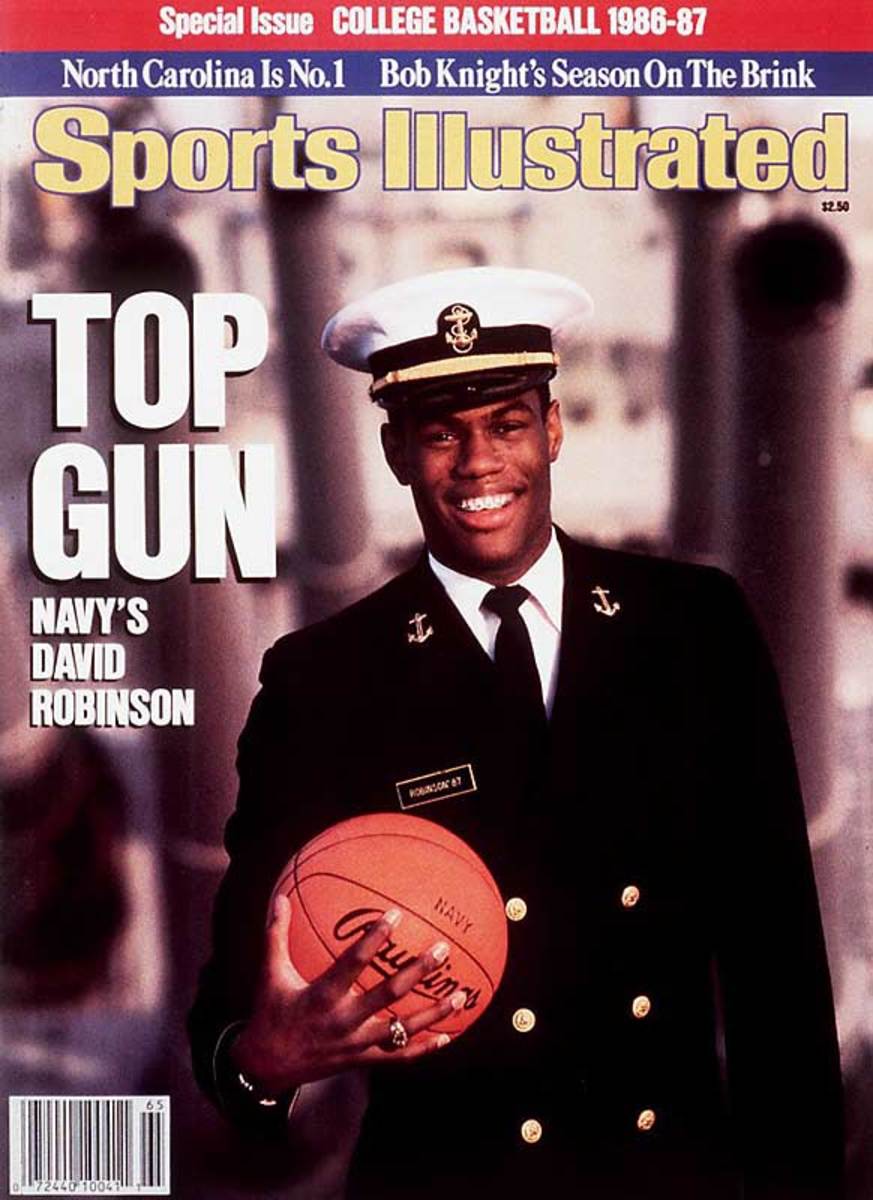
While at Navy, David Robinson was named both the Wooden and Naismith award winner. He was also selected by the San Antonio Spurs as the first pick in the NBA draft. But he would have to wait a couple years before making the leap to the pros, as he had to serve two years in the Navy -- three years short of the norm -- before he could take center court in Texas.
February 9, 1987: Elle Macpherson
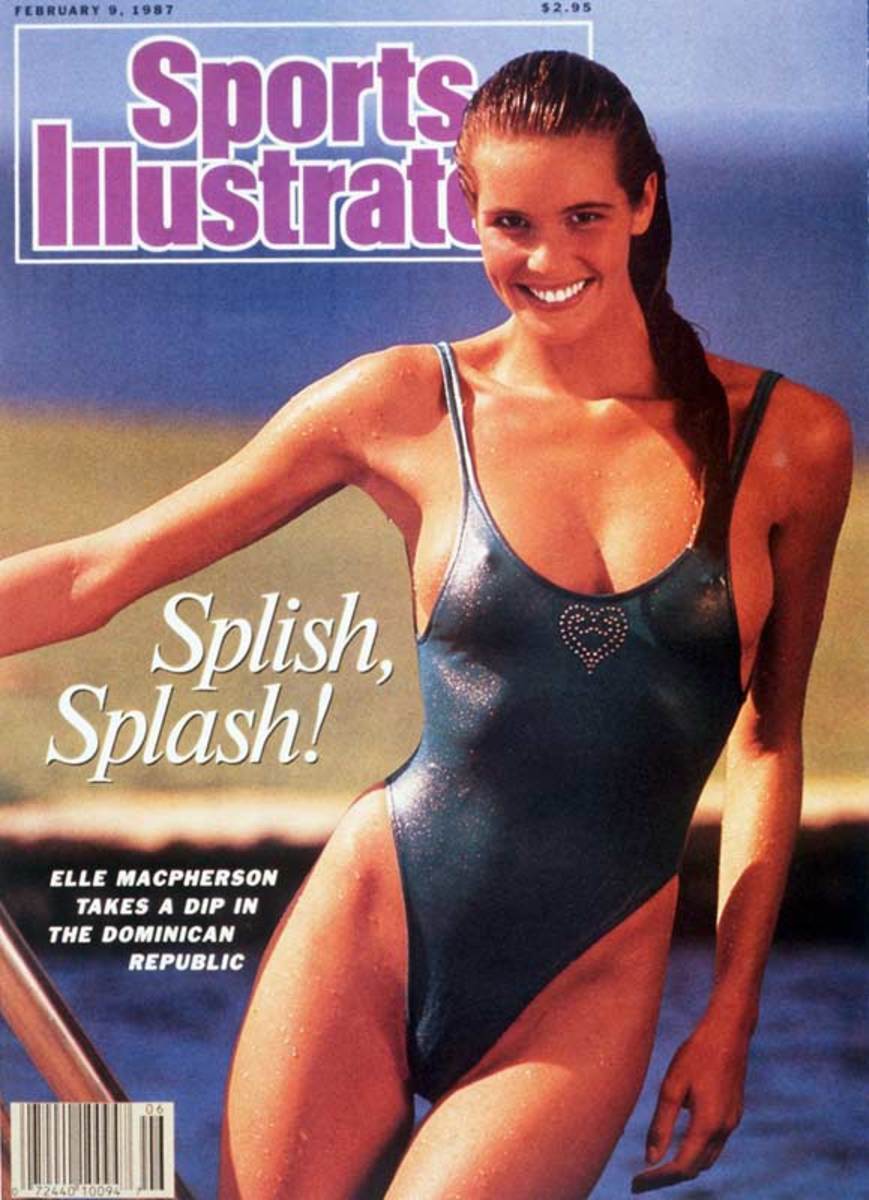
Elle Macpherson rode appearances on the cover of Sports Illustrated to international fame in the '80s. In all, she appeared on the cover of SI five times, including three consecutive years beginning in 1986.
September 15, 1980: John McEnroe
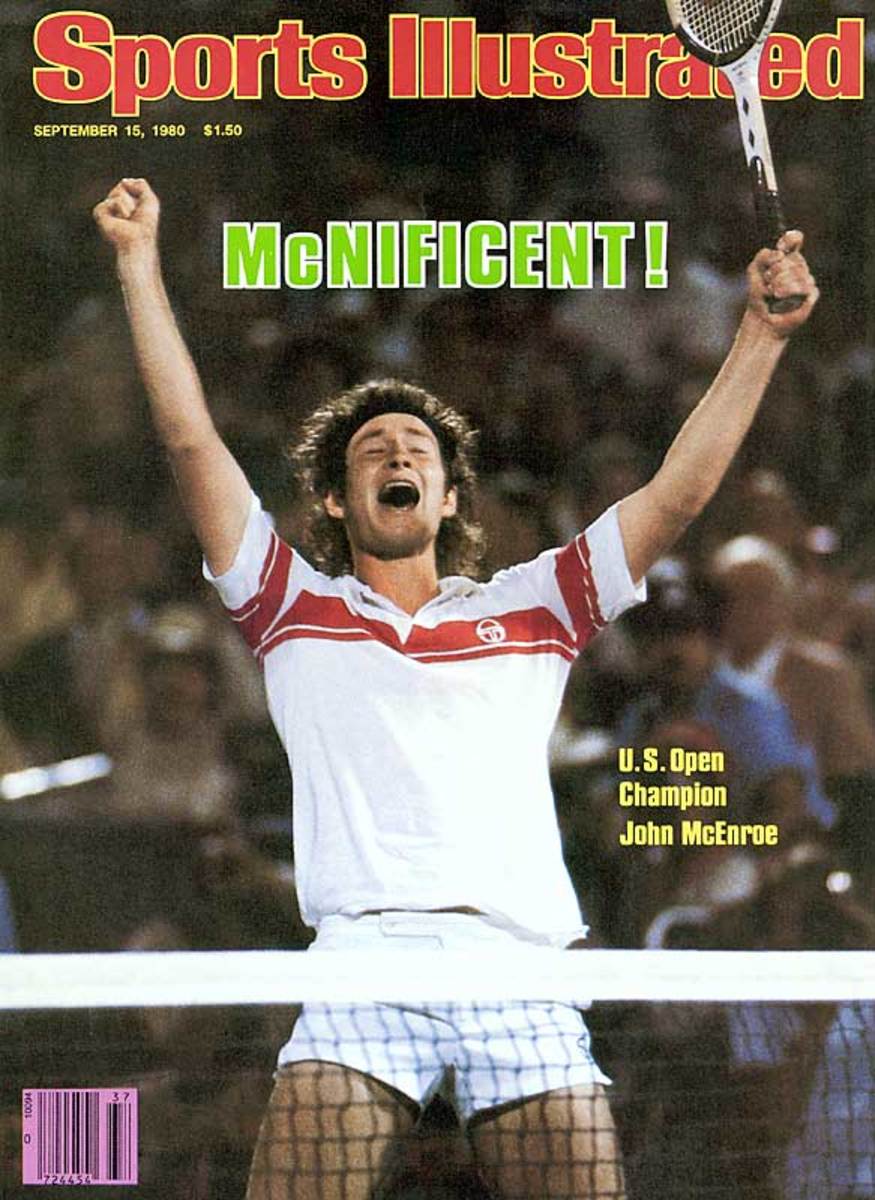
After losing an epic five-set championship match to Bjorn Borg at Wimbledon -- a match that included an 18-16 tiebreaker -- McEnroe exacted revenge on the Swede at the U.S. Open, beating Borg in five sets to win his second Slam at Flushing Meadows.
September 3, 1984: Joe Theismann
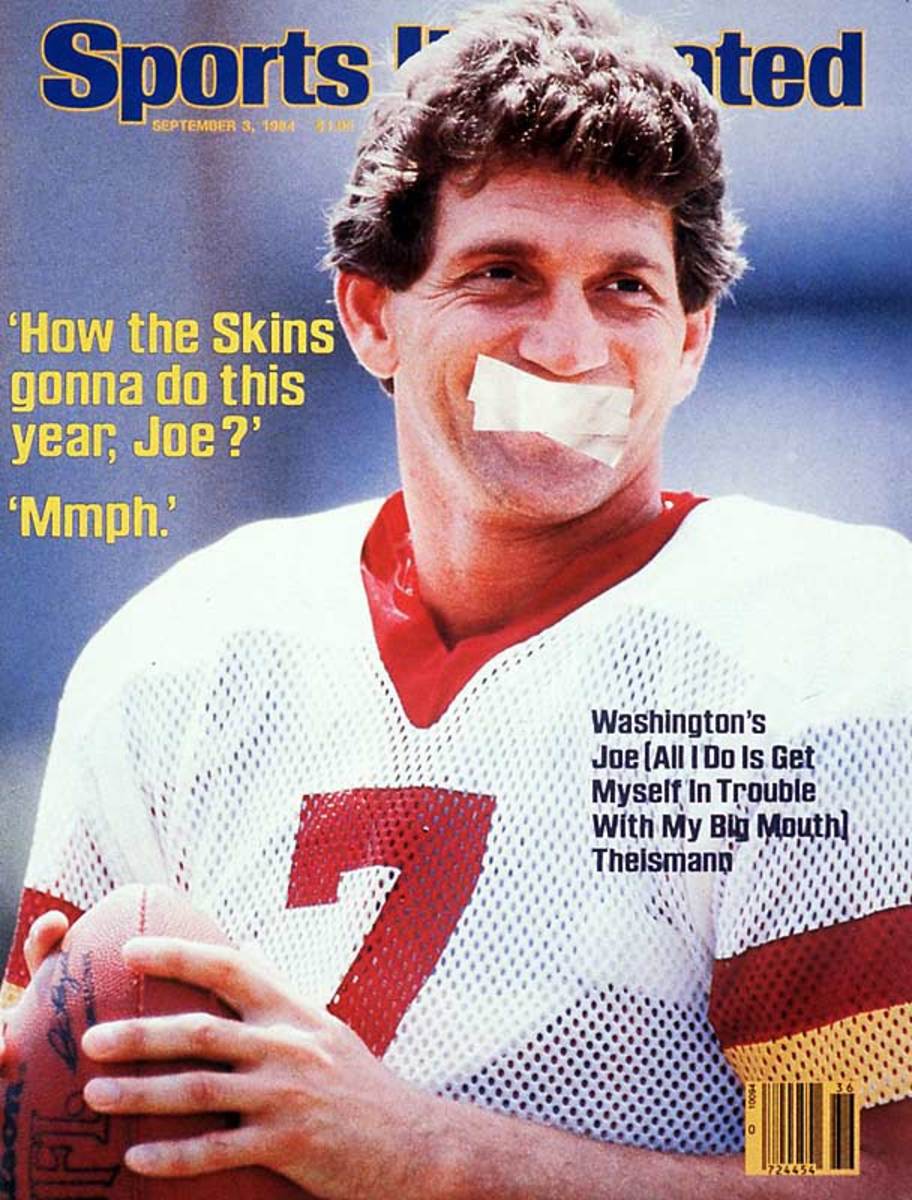
Joe Theismann had a penchant for making big plays. After the Redskins acquired the star quarterback in 1974, he led Washington to two Super Bowls, setting several franchise records in the process. Unfortunately, Theismann also had a penchant for running his mouth.
October 29, 1984: Bill Russell and Larry Bird
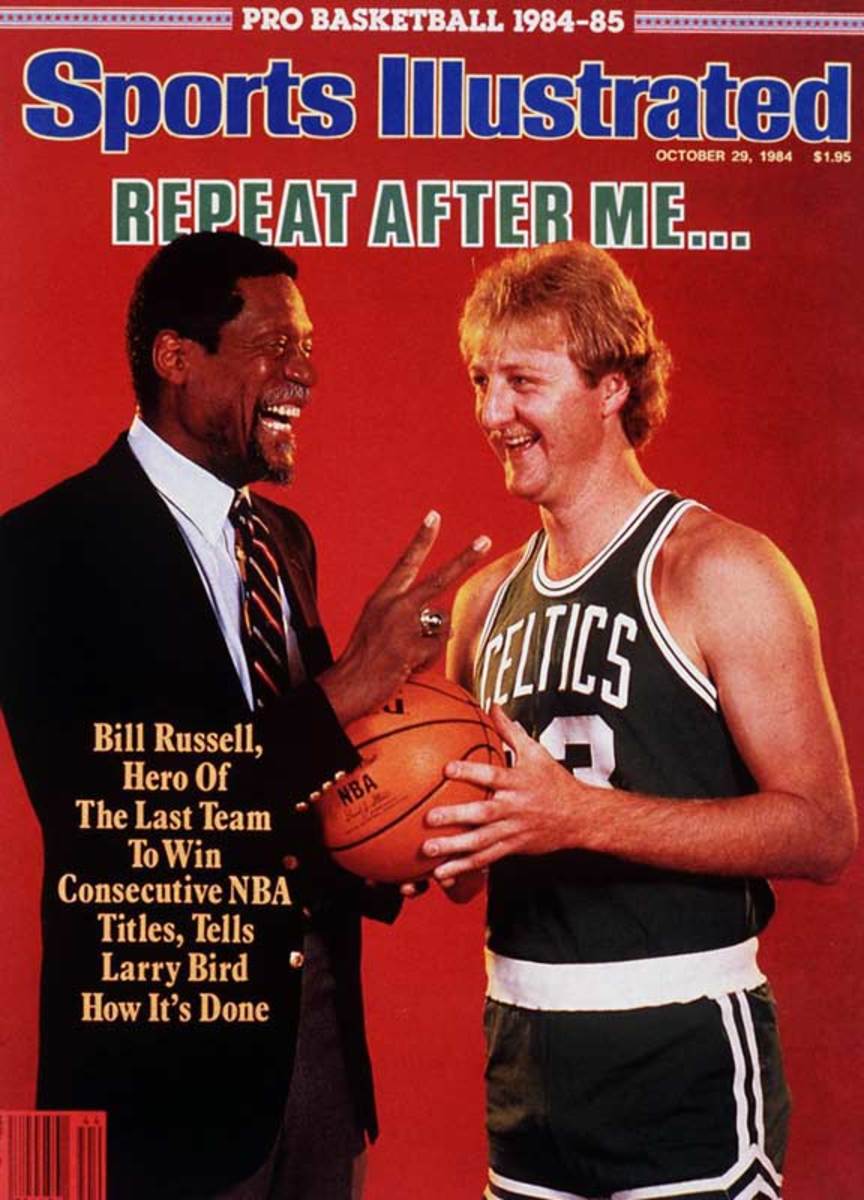
With new additions Kevin McHale and Robert Parish, Larry Bird led the Celtics to a championship in 1981 in just his second season in the league. Bird won three titles in his career -- not quite as impressive as the 11 Bill Russell managed during his days in Boston.
October 12, 1981: Wayne Gretzky
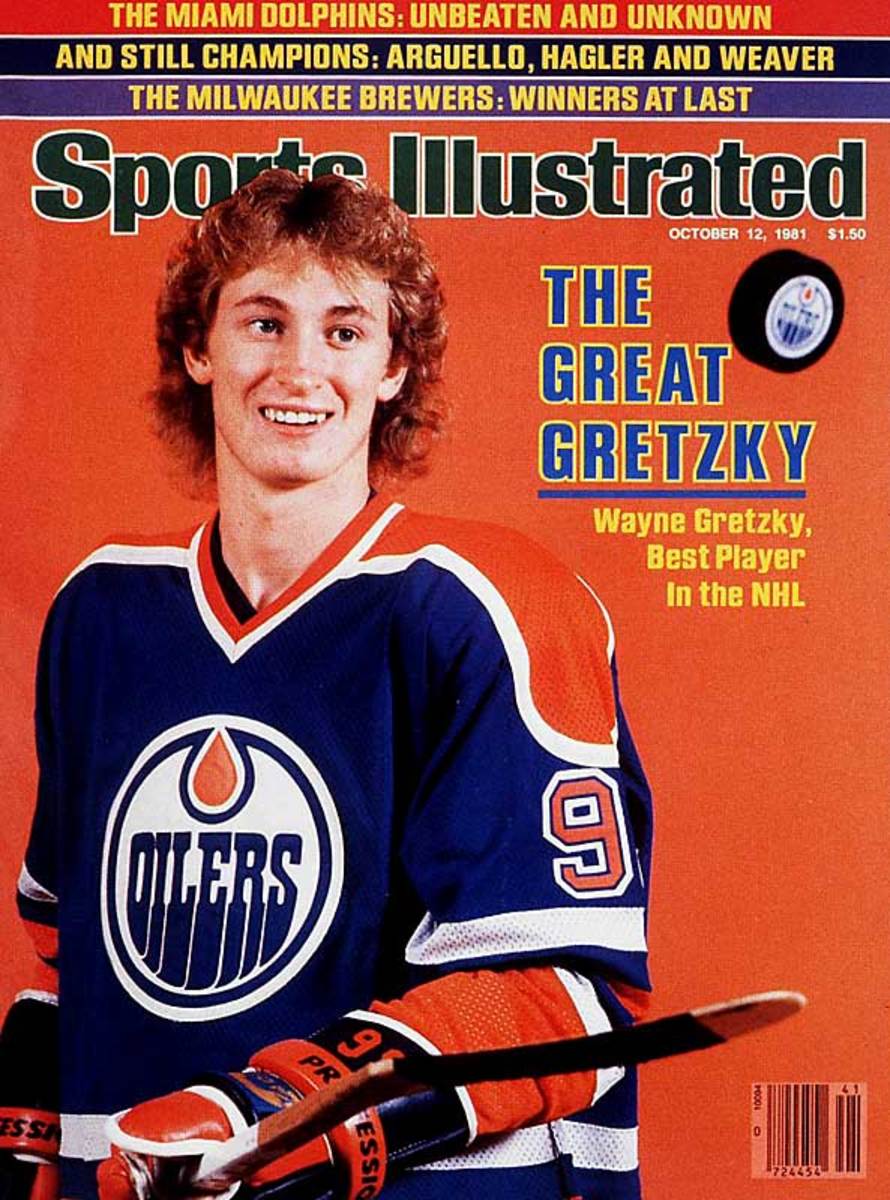
Just two seasons into his NHL career when this issue ran, Wayne Gretzky had already won two Hart Memorial trophies, had broken Bobby Orr's record for assists in a season, and bested Phil Esposito's record for points in a campaign. Gretzky started the '81-82 season on a tear, too, scoring 50 goals in his first 39 games.
December 1, 1980: Mark Aguirre, Ralph Sampson and Albert King
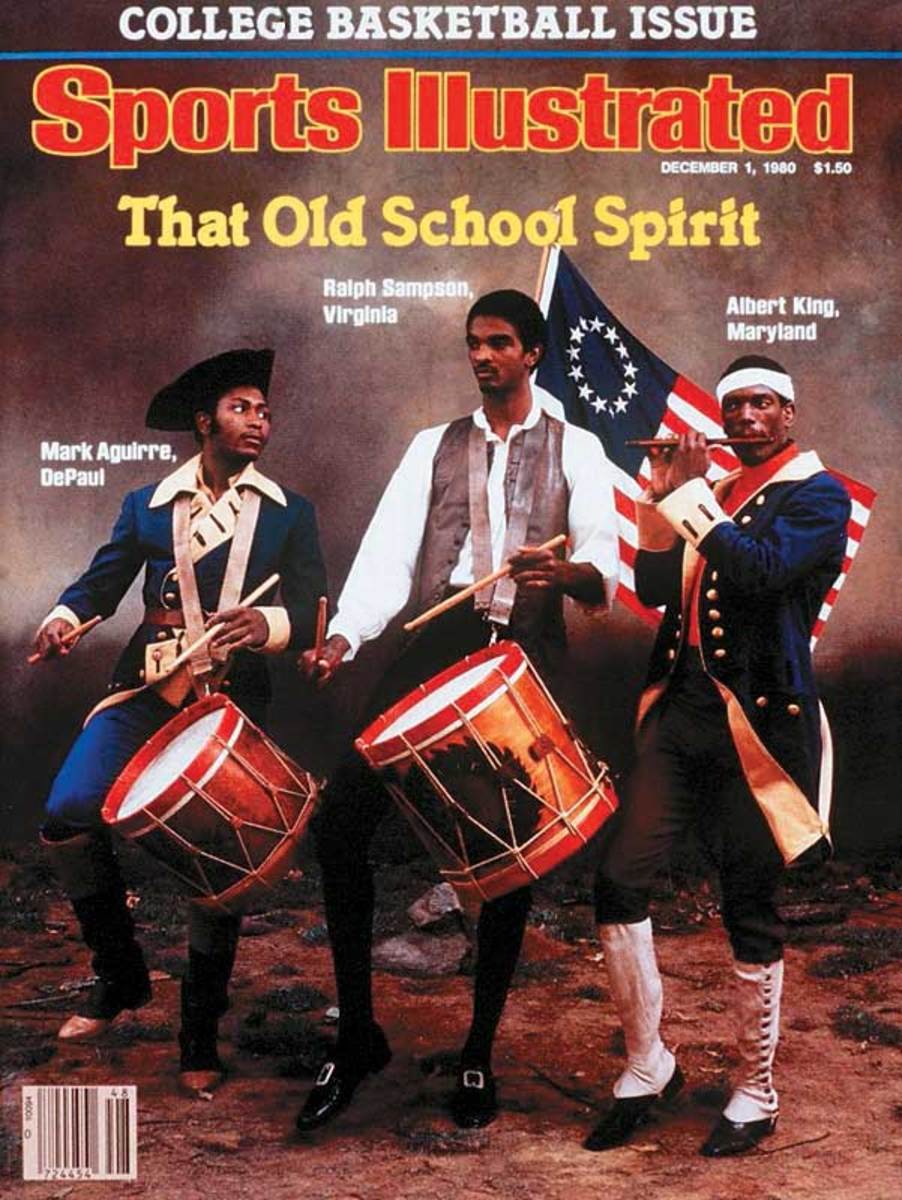
It had been four years since the NBA's hardship draft rule had been eliminated and players had free reign to enter the draft after graduating from high school. Yet, many players decided to reject the pros and stay on campus anyway. Among them were Maryland senior Albert King, Virginia sophomore Ralph Sampson and DePaul junior Mark Aguirre -- three reasons why the 1980-81 college hoops season was projected to be one of the most exciting yet.
April 29, 1985: Hulk Hogan
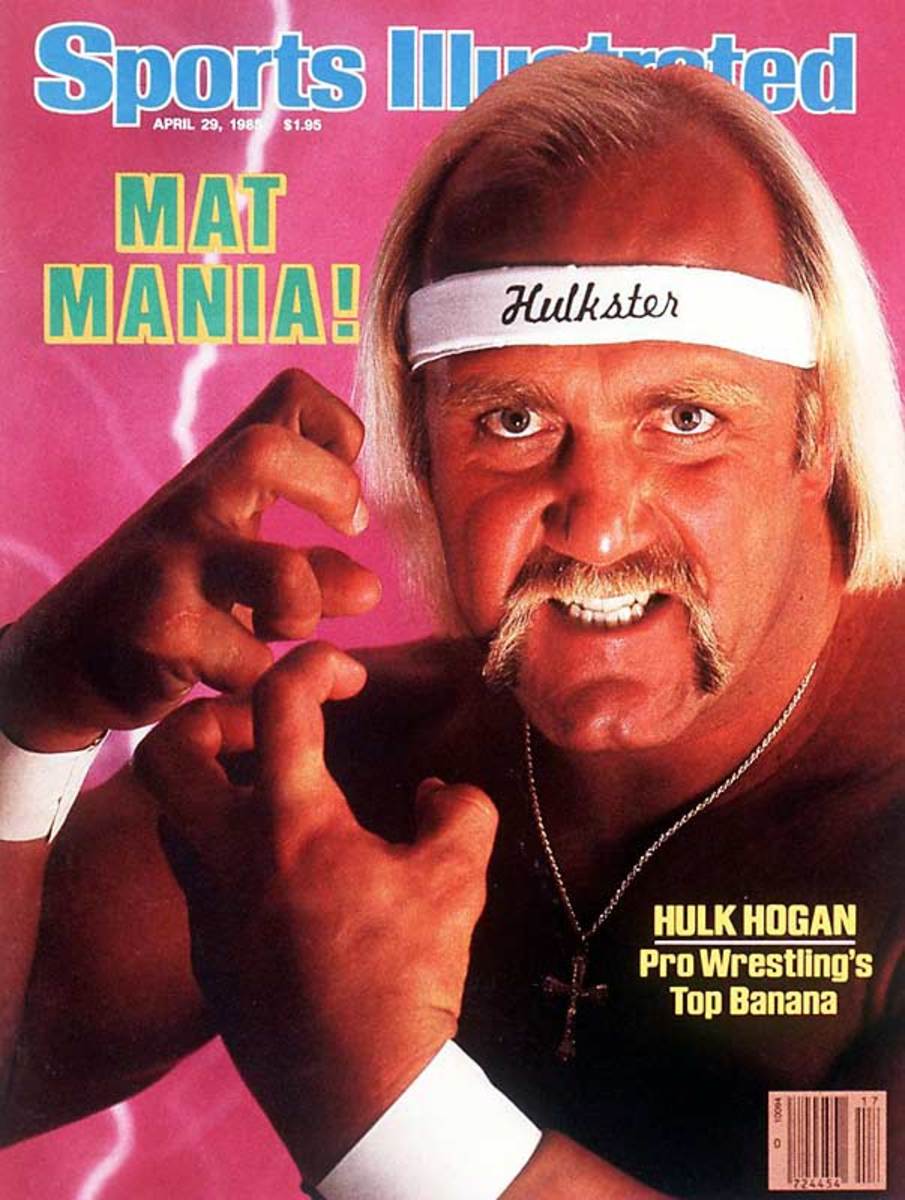
In the mid 80s, professional wrestling took the nation by storm and few athletes were as recognizable as 6-foot-8, 300-pound Hulk Hogan. This shot marked the first time a professional wrestler graced the cover of SI.
November 1, 1982: Moses Malone
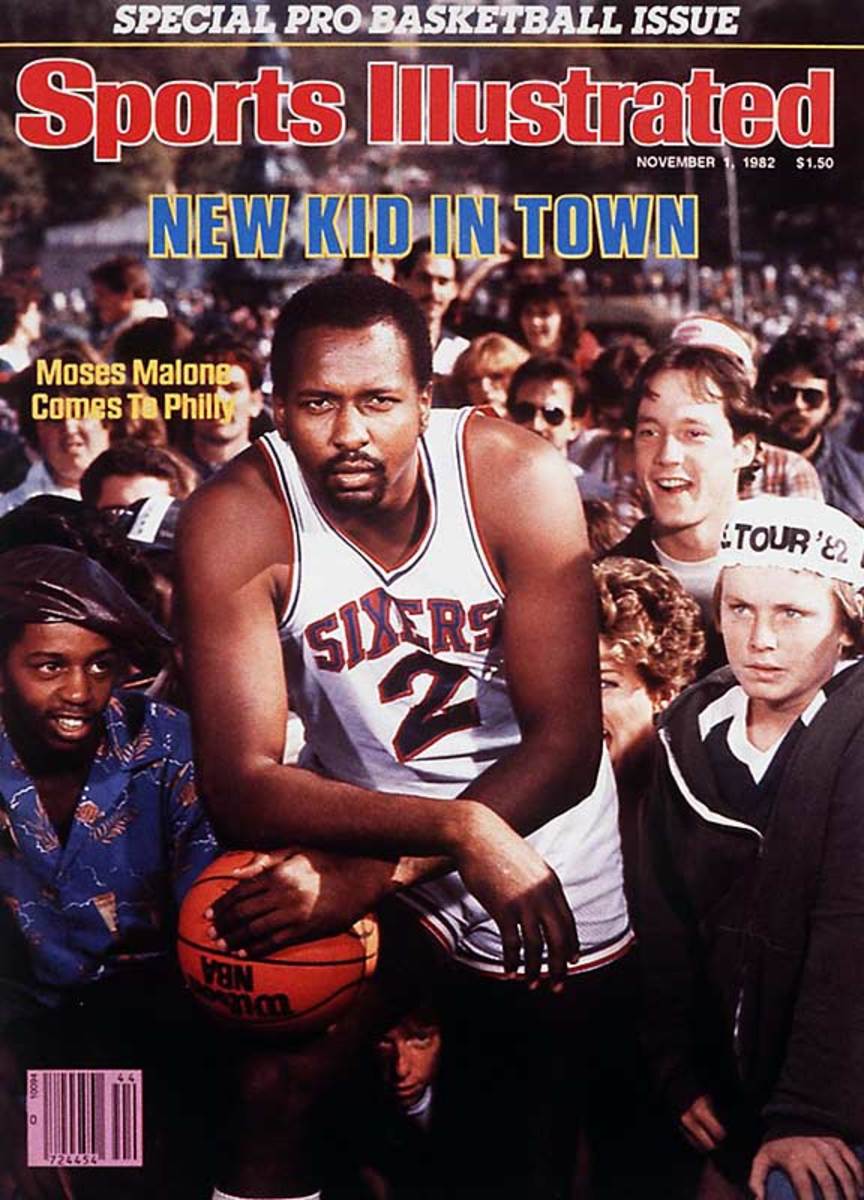
Just the fifth player to jump from high school to pro basketball, Moses Malone develpoed into one of the NBA's best big men. After winning his second MVP award with the Rockets, Malone was traded to Philadelphia, where he joined Dr. J and Maurice Cheeks on a 76ers squad that went on to win the 1983 Finals. Malone won his third MVP that season, becoming the first player to win consecutive MVPs with different teams.
August 14, 1989: Michael Jordan
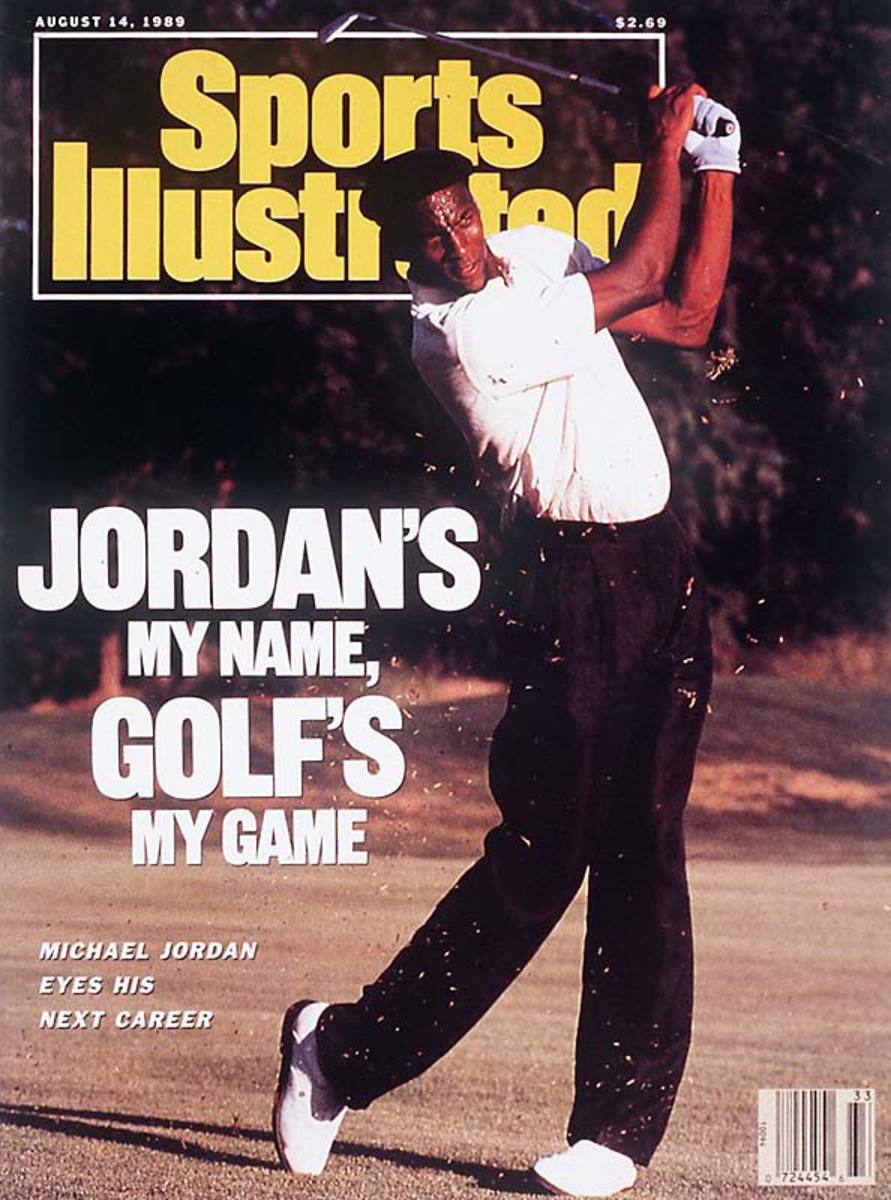
By the summer of 1989, Michael Jordan was already on top of the basketball universe. But as this cover demonstrates, M.J. also had an affinity for golf and contemplated a post-NBA career on the links.
February 16, 1981: Boston College Point Shaving Scandal
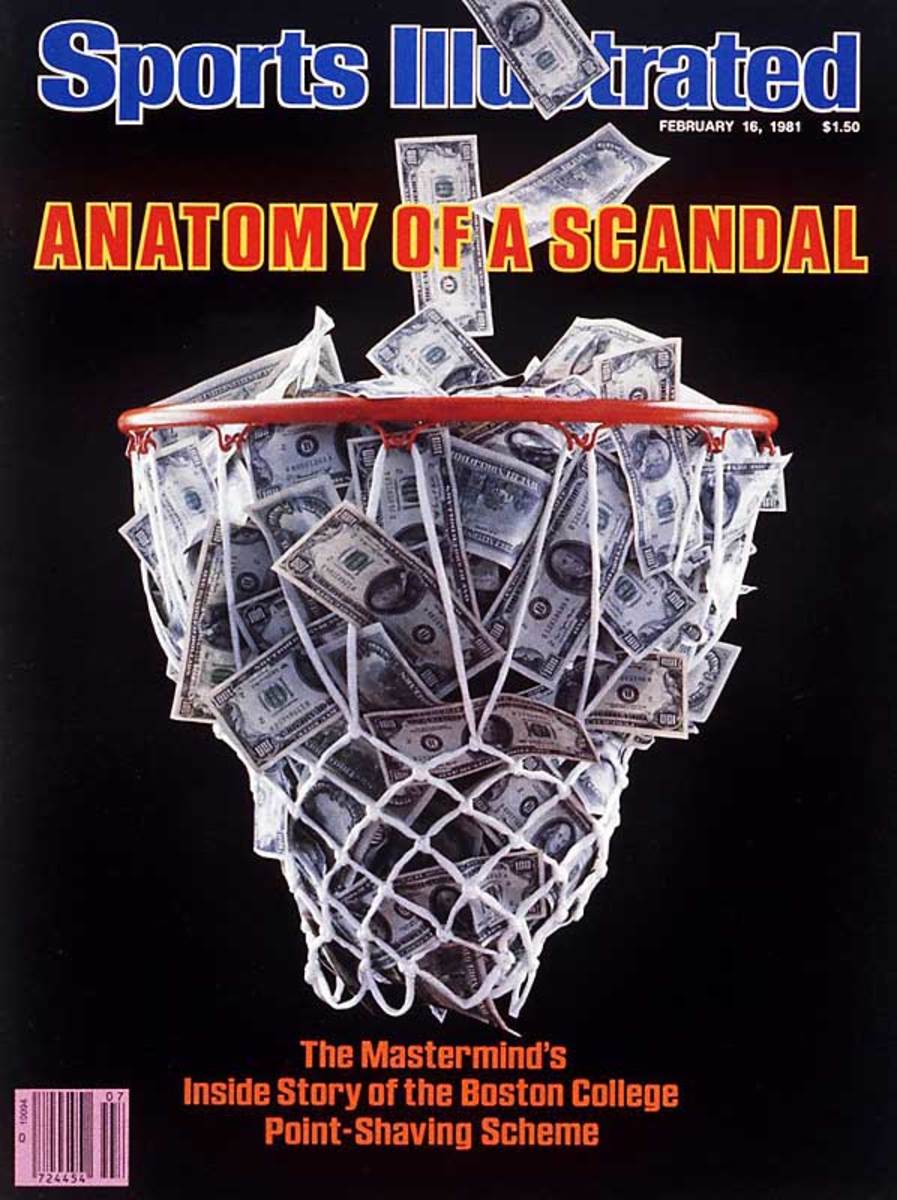
Rocco and Tony Perla thought they had it in the bag -- literally. The two small-time gamblers thought they could use Boston College as the vehicle for a massive point-shaving scheme that would land them thousands of dollars from bettors. However, one of their accomplices, Henry Hill, spilled the beans to SI in an exclusive tell-all.
March 4, 1985: Mike Schmidt
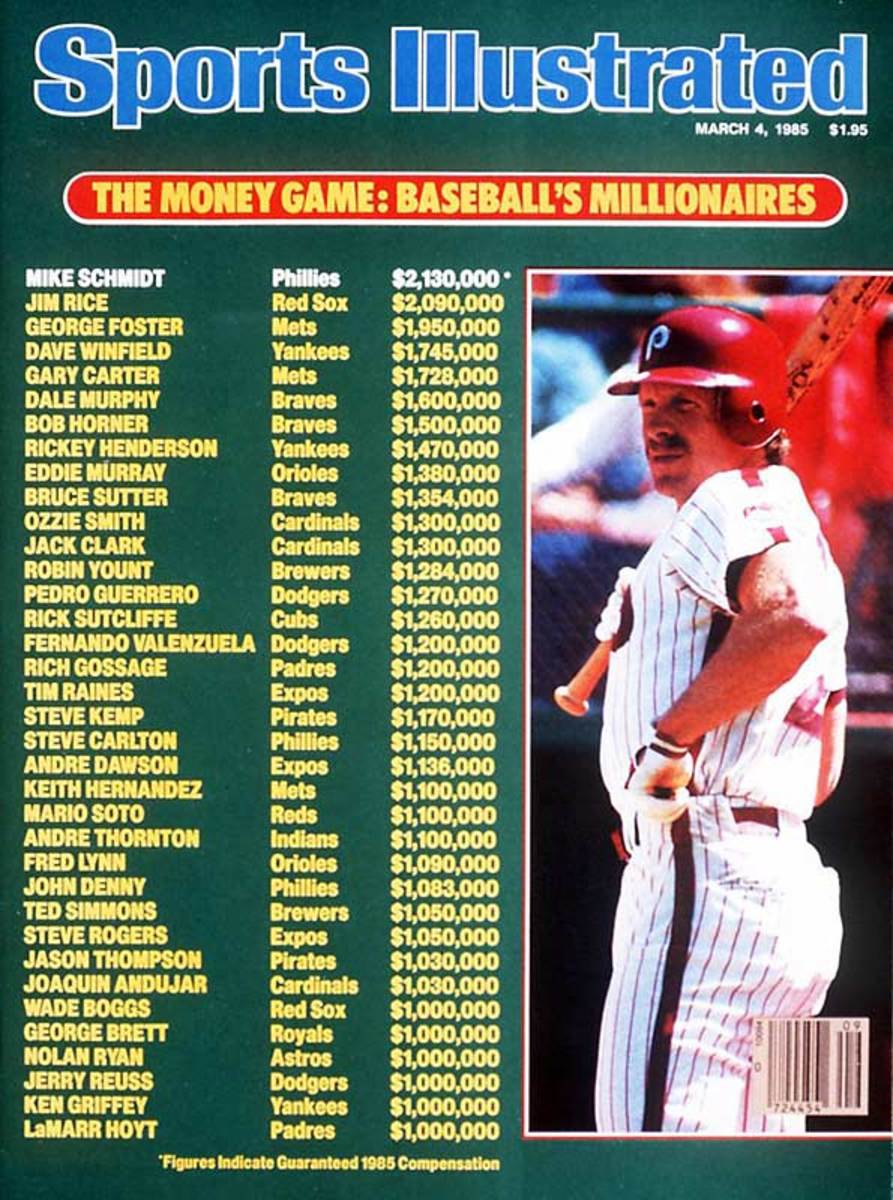
How the times have changed! In March 1985, Mike Schmidt topped the list of baseball moneymakers with an annual salary of $2.13 million. Thirty-five years later, the average annual salary of an MLB player is over $4 million.
May 20, 1985: Patrick Ewing
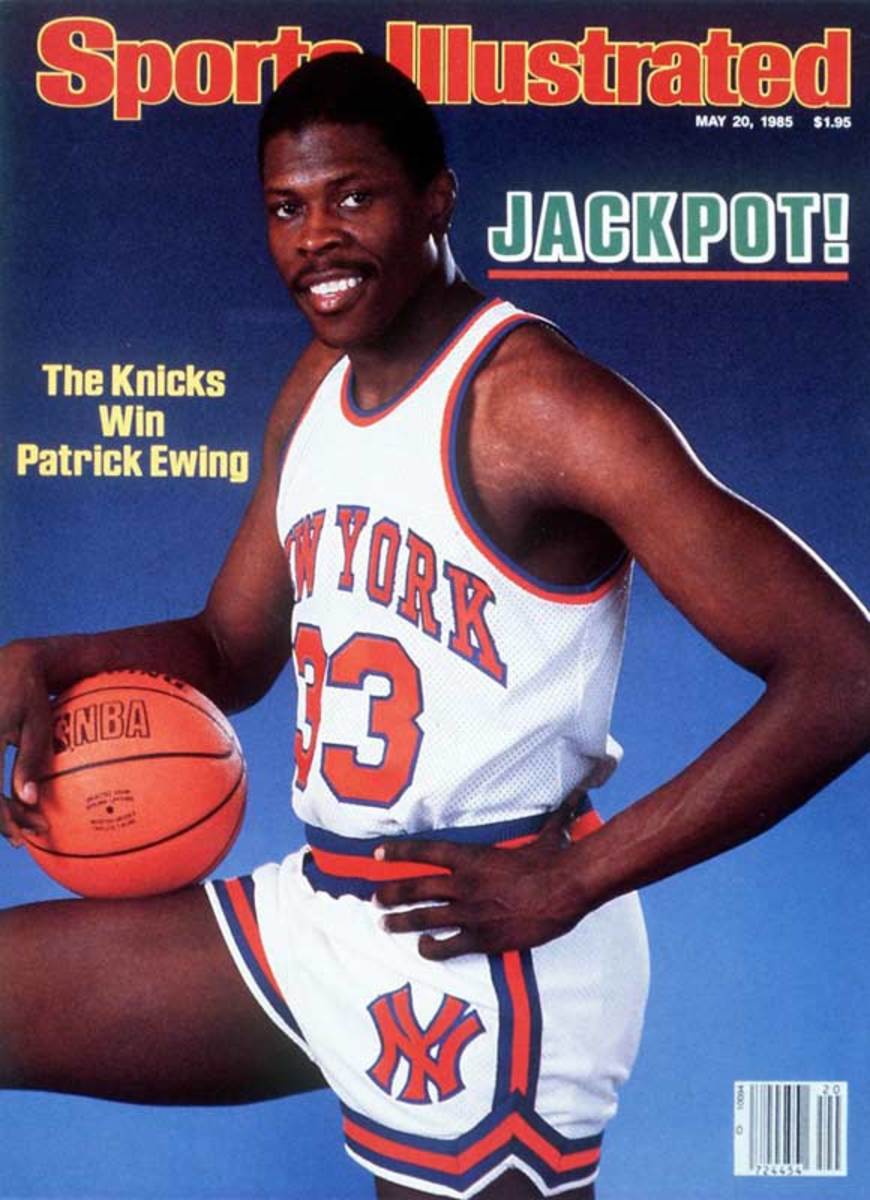
In 1985, the NBA instituted the draft lottery, knowing teams would be jockeying for the chance to draft Georgetown center Patrick Ewing with the No. 1 pick. Although he never won a championship, Ewing was an 11-time All-Star and was selected as one of the league's 50 greatest players in 1996..
March 1, 1982: Herschel Walker
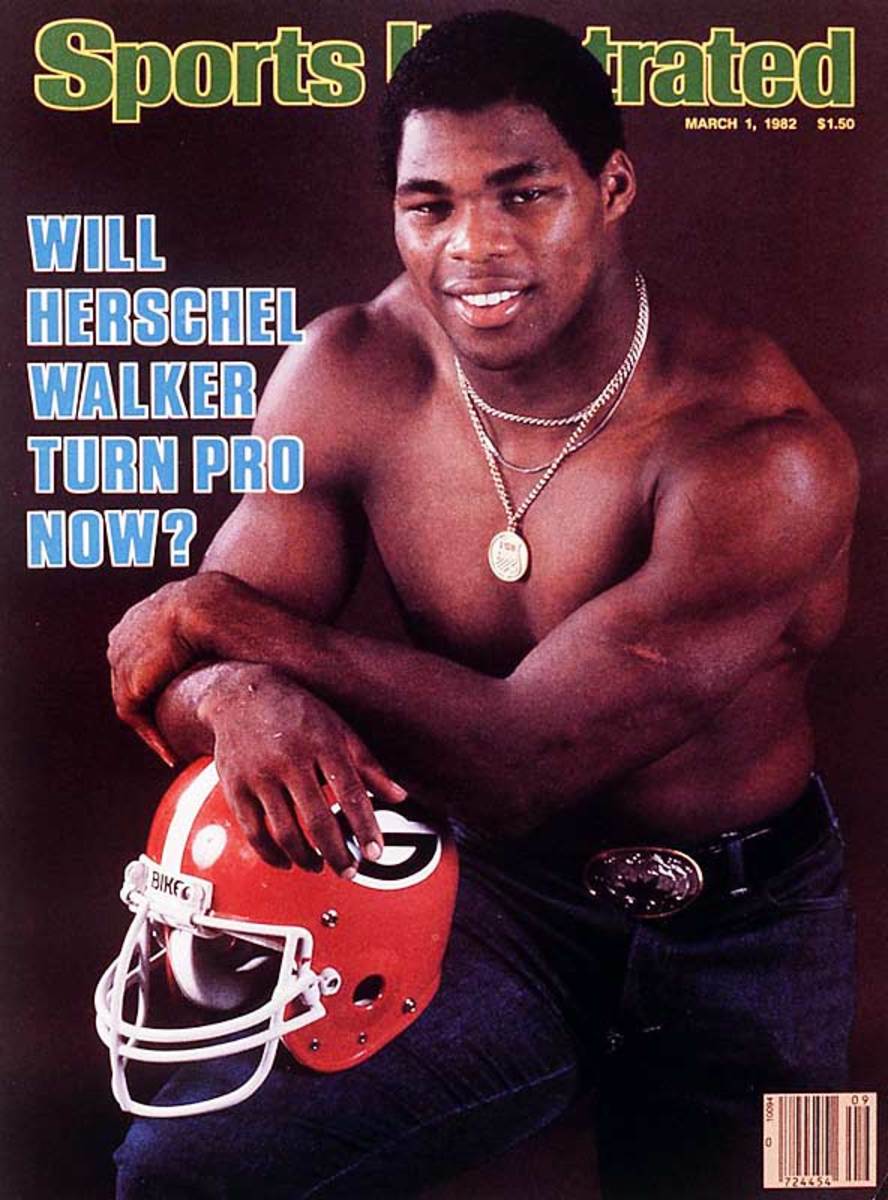
After winning the Heisman Trophy, sports fans wondered whether Georgia RB Herschel Walker would remain in Athens for his senior year or leave early and play in the upstart USFL, which didn't require players to complete four years of college as the NFL did. Walker opted to join the New Jersey Generals, where he stayed for three seasons before the league crumbled.
July 20, 1987: Andre Dawson
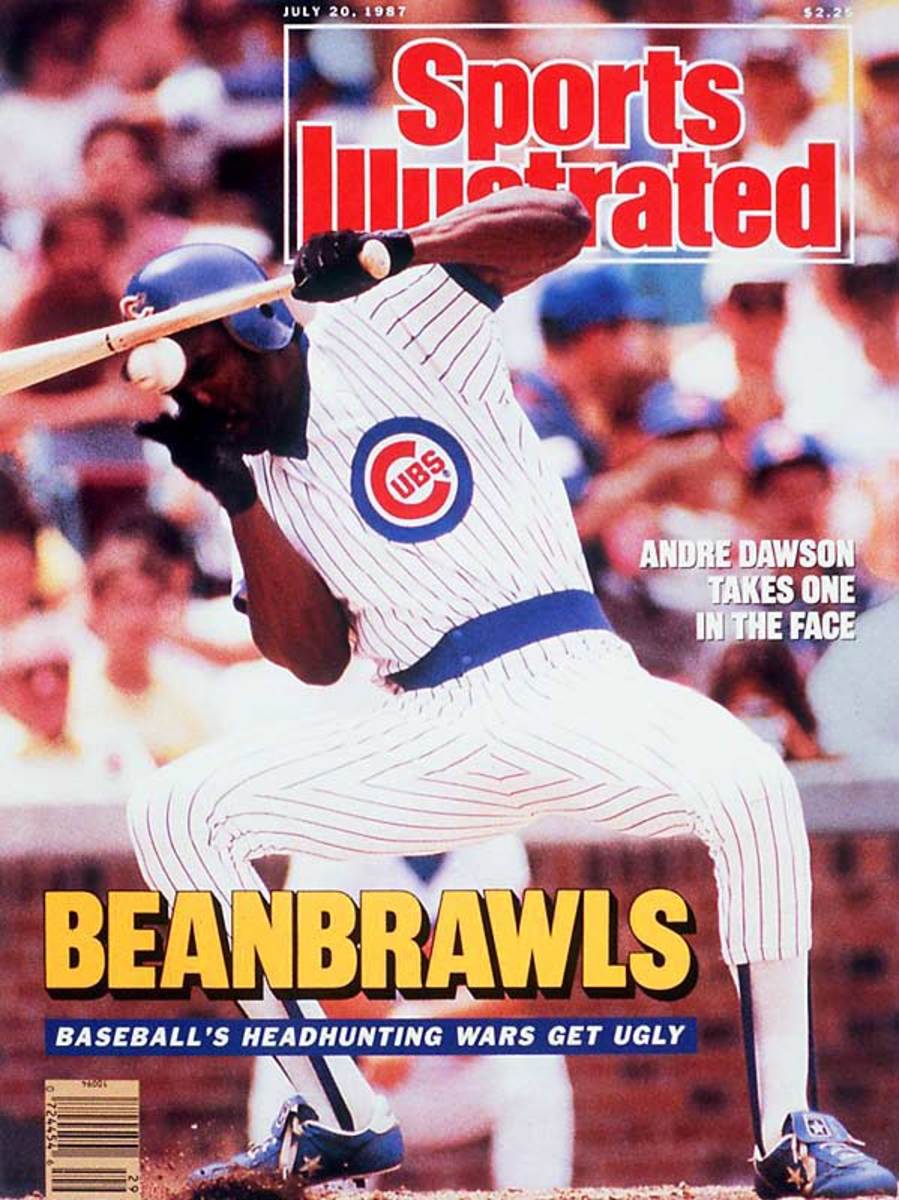
Inside pitching is often a handy tool for a pitcher, brushing back a batter who hovers over the plate. Unfortunately, when those high and tight, 90-mph fastballs go off track, the results can be brutal. Just ask Andre Dawson.
June 13, 1988: Mike Tyson and Robin Givens
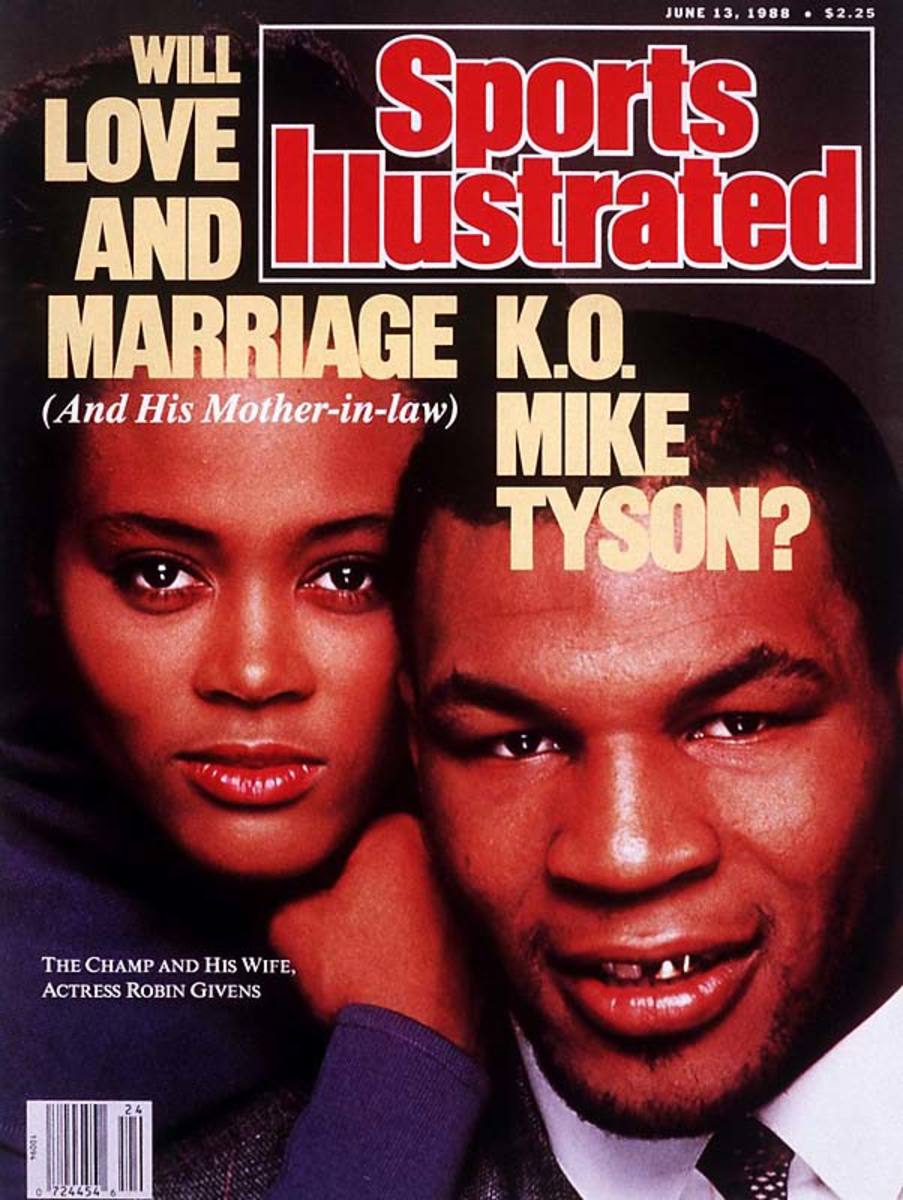
By the summer of 1988, Mike Tyson was the world's best boxer. However, he was making more headlines for his marriage to actress Robin Givens. The pairing barely lasted two years, but thanks to this cover and a memorable interview with Barbara Walters, the couple's marriage remains one of the most memorable unions between a sports figure and an actor.
November 13, 1989: Deion Sanders
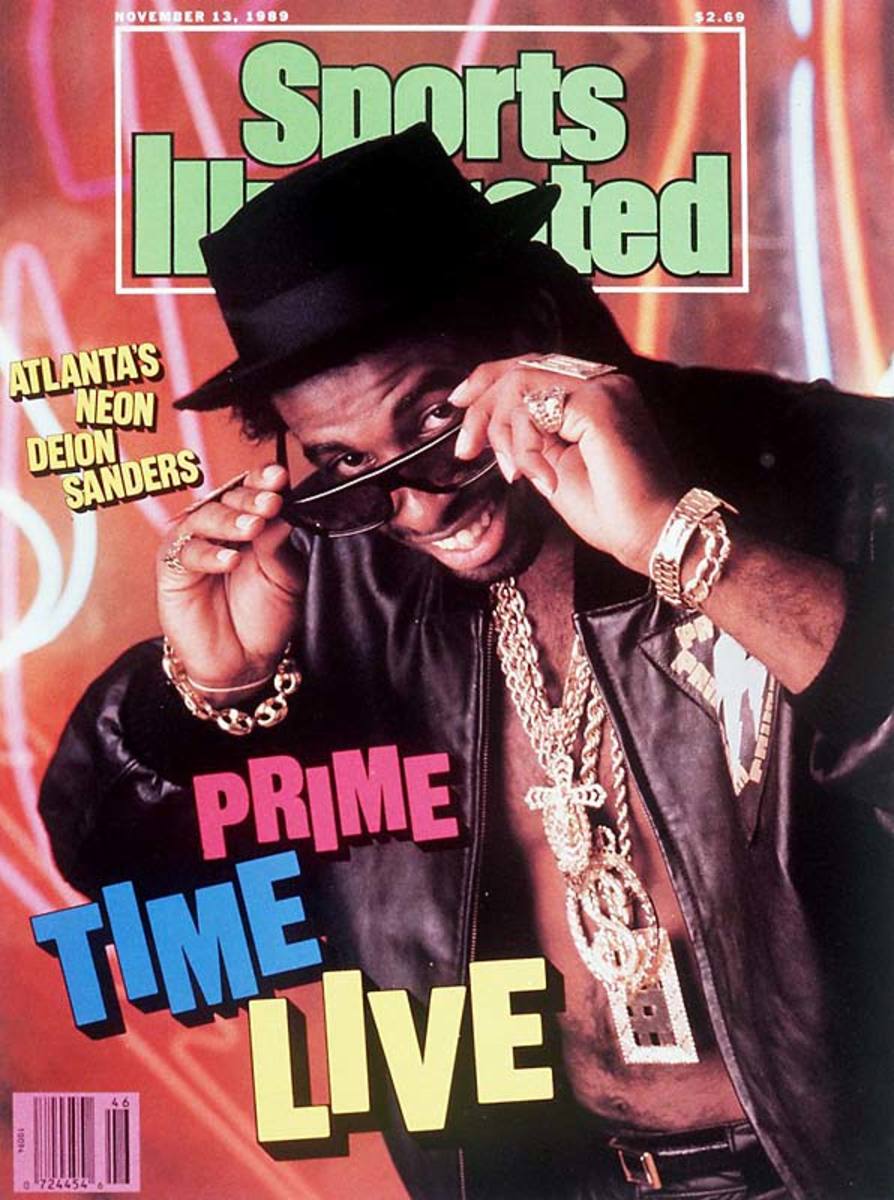
Flashy as he was, Deion Sanders was a sports anomaly, competing in three sports at Florida State and playing professionally in two. In 1989, he was drafted by the NFL's Atlanta Falcons and Major League Baseball's New York Yankees. He played in both leagues, hitting a home run and scoring a touchdown in the same week -- the only man to do so. Sanders went on to become the first to play in both a World Series and Super Bowl. If that's not "Prime Time," what is?
April 18, 1988: Los Angeles Lakers
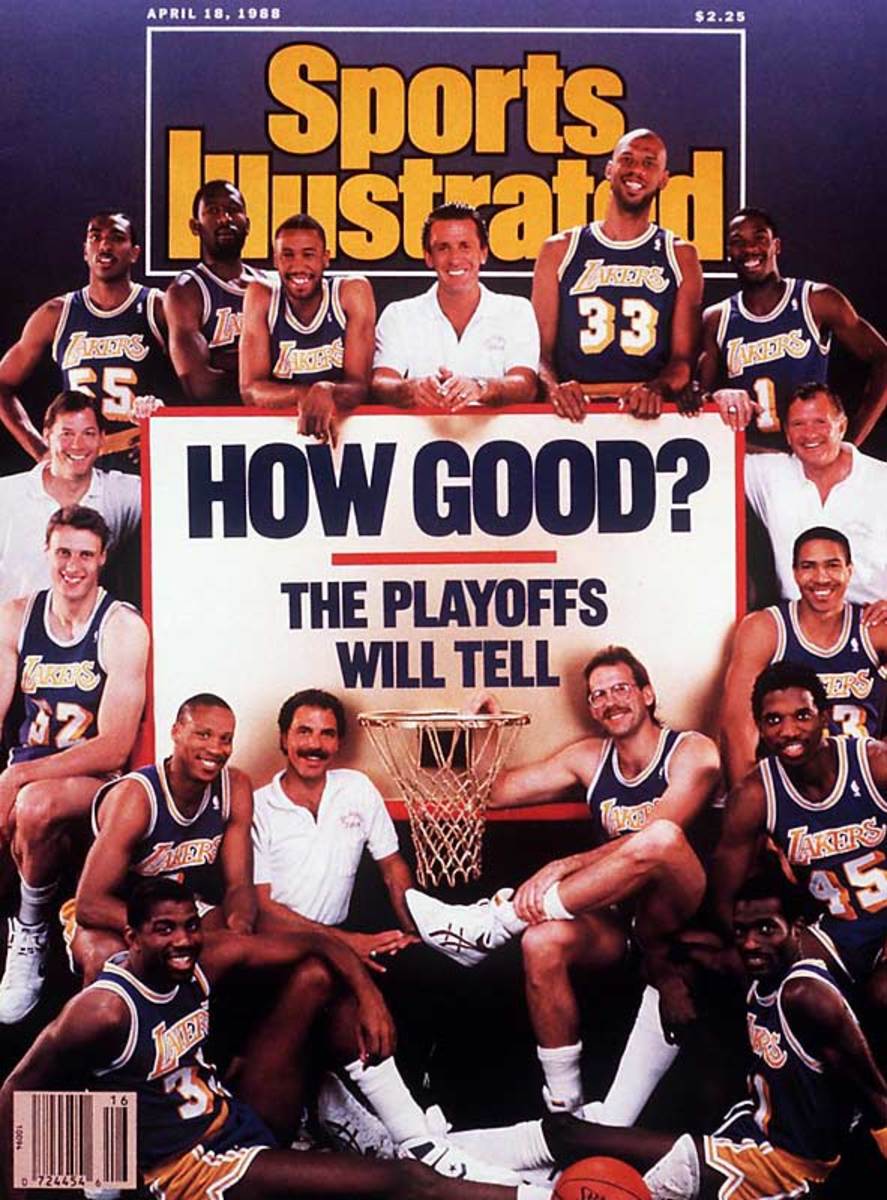
After his squad beat the Celtics in the 1987 NBA Finals, Lakers coach Pat Riley guaranteed a repeat in 1988. Led by James Worthy and Magic Johnson, the Lakers edged Joe Dumars, Isiah Thomas and the Pistons in seven games.
College kids may be brats, college professors may be pinkos, college coaches may be brutes, but don't ever rap college. College enjoys a unique place in our society; it's about the only institution left that is sacrosanct, above criticism. The reason is that college is where you have to go to get a college degree. Thus, anybody like Malone, who would actually pass up a chance to go to college, is suspect as un-American. When you think about it, today college is prized about as dearly as marriage used to be.
But for anyone who knew Malone well, it was difficult to dispute his rationale. "To take four years to learn the social sciences may be approved, but is it best for everybody?" Fentress asks. And while Driesell suggests that college play would have improved Malone "fundamentally" and the experience would have helped "to bring out his personality," he believes that the young man would have profited primarily as a marketable item. In this respect, Malone still suffers a lack of identity for not having been showcased with an NCAA contender. It has hurt him in several ways. Because Malone doesn't sell tickets, Houston had to bring in a name. Rick Barry, for this season, a transaction that cost the Rockets their playmaker, John Lucas.
Of course, it is easy to say that Malone should have stuck out college for a year or two if your mother isn't living in a shanty without a toilet and with a big hole in the wall. "Look," says Spencer Haywood of the Jazz, who was Malone's teen-age idol, an offensive rebounder and the first player ever to leave college-the University of Detroit--for the pros. "The colleges are just there to use you. If you're black and haven't a nice, rich mommy and daddy--and now, with the Bakke decision, you haven't even the government on your side--then you have no choice. You take advantage of what you have as soon as you can."
Malone himself never had any doubts. "I'd seen the pros on TV, and I figured I was quicker," he says. "Peoples talked about experience, but I never thought experience meant that much under the rack. So I told my momma, let me decide. If I'm going to lose, let me lose myself. So my momma said all right."
Oddly, Malone's rookie year came off without trauma and was a great deal happier than those that followed. He averaged 18.8 points and 14.6 rebounds a game, and when Nissalke was brought in midway through the season, the teenager found a coach he cared for and respected. Nissalke did not baby Moses. In the huddle sometimes, during time-outs, the coach would stop everything, halt all talk until the kid would raise his head to listen, looking Nissalke in the eye like a grown man.
Salt Lake City was unique, too, for it is Mormon, with a tiny black population. But that didn't faze Malone, either. It has often been assumed, and written (most likely by some righteous Yankees), that Malone came from an all-black environment, but in fact, Malone was probably more at home with whites than a comparable Northern ghetto star would have been. Petersburg High School was only about 60% black when Malone attended it, and perhaps the single most important peer influence upon the bashful black youngster was a white classmate named Tim Antozzi.
The only time that Malone has ever been in any sort of trouble came two summers ago when on a visit back home, he and a group of friends dropped by Virginia State University, which is predominantly black. In the frivolous, sophomoric episode that ensued, Moses concluded a desultory flirting session by snatching up a coed's $35 chess set. Before he could return it, she had blown the silly incident up into theft and pressed charges, which have since been dismissed.
The lesson Malone has learned is that he is a marked man and therefore must stay out of crowded situations he can't control. "I be alone and be happier than with a lot of peoples," he says. "You can't get in no trouble then." His mother, who has been beset by hustlers and bunco artists ever since she came into money, is bitter about the jealousy and exploitation she has seen.
The Malones' relationship with Fentress, the white lawyer, is especially fetching. He is the last thing you would expect in a basketball agent: a Dixie patrician, sandy-haired, with old-fashioned tortoiseshell eyeglasses and herringbone suits. He went to Tulane and Virginia Law, and when he curses, the best he can manage is "sugar." Fentress' prime client is the Government of Mexico, and last month, when he flew down to Houston to touch base with Malone, he had spent much of the previous day sequestered with Energy Secretary James Schlesinger, discussing matters somewhat more consequential than option years and zone defenses.
So, unlike a lot of the grubby 10-percenters. Fentress keeps his basketball clients in perspective, no matter how much the fool owners pay them. He is interested in Malone, not chummy; he is firm, not patronizing; he tells Malone flat out to find a better way to get off his ego than tying up so much cash in a Rolls. It is not a slice of white man's burden, either; Fentress lived with Charles Evers for a year in Mississippi in the 1960s and lost most of his old friends in Baton Rouge for it.
It was Fentress who was instrumental in getting Malone to Houston. This hegira began when the Utah Stars folded in Moses' second year, while he was out with a broken fibula. He was consigned by lot to St. Louis, but at the end of the season the ABA went out of business, and Malone was put in the dispersal draft. His lawyers tried to get the Knicks to take him, but they had just gotten burned trying to pirate George McGinnis from Indiana and were gun shy. Instead, he was picked fifth by Portland--but strictly as a piece of merchandise. Denver almost bought him from Portland, but at the last minute the Nuggets decided they would be better off adding a proven NBA veteran and picked up Paul Silas instead. Nissalke pressed Ray Patterson, the Houston president, to buy Malone, but the Rockets were shaky financially, and Portland didn't like the color of the Houston money. Finally, Portland passed Malone along to Buffalo for cash and a draft pick.
He reported to his new team and found that nobody really wanted him. In the two games he played the week he was with Buffalo, he was used for six minutes, total. Malone was a forward then, and Tates Locke, the Buffalo coach, figured he was solid in the corners with John Shumate and Tom McMillen. The scuttlebutt filtered out that Buffalo had pegged Malone as a dummy, too large a reclamation project. It is also a fact that Locke was the coach at Clemson when the Tigers tried to recruit Malone and ended up in dutch with the NCAA because Mrs. Malone turned Clemson in for giving cash to a relative to buy Moses a car. "A lot of things went down in Buffalo," Moses says, dispensing with that bizarre interlude.
Fentress immediately started putting the heat on Buffalo to play the kid or move him. Finally Ray Patterson got lucky, but only because Buffalo had two owners--Paul Snyder and John Y. Brown--who were more in competition with each other than in concert. Brown was an old ABA man, and Malone was an old ABA player. Brown was also out of the country for a few days. When Patterson offered a deal to Snyder that gave him a quick turnaround profit, he took the cash and a couple of draft picks so he could wave them in Brown's face when he cleared customs.
McMillen was traded six weeks later and is now hanging on with Atlanta. Poor Shumate, who has a lung condition, hasn't played this season for Detroit. Locke was bounced in the middle of the season, and the whole franchise floundered until finally they backed a truck up to the door and took it to San Diego last summer.
"Moses made our franchise," Patterson says. "We were going down the tubes, and we wouldn't be in Houston today if Tom hadn't kept after me to make that deal."
At Houston in 1976-77, his first NBA season, Malone played forward opposite Rudy Tomjanovich, and the franchise had its first winning record ever. Last season, though, Tomjanovich was brutalized by an opponent's sucker punch, Malone broke his foot and missed 23 games, and the Rockets tumbled to last place. This forced Patterson to pay out $1 million to use Barry's name at the box office for two years. Unfortunately, Barry is 34 now, and he left his legs in San Francisco, and because Tomjanovich is also primarily a shooter, the whole burden of rebounding has fallen upon Malone. Says Slick Watts, one of the team's point guards, "Everybody be shooting, but the big guy, he just be roaming underneath."
Malone has also become the Rockets' leading scorer, averaging more than 23 a game. The book on him used to be, back off when he got the ball, because he liked to use his little hands to dribble, and he was easy prey for steals. This year, however, Malone goes right up and punches it at the rack. He has a nice little jump hook, too.
What Malone longs for is a chance to play on a running team, and that is the issue the Rockets are going to have to confront after the 1979-80 season, when his contract is up for renewal. Moses likes Houston well enough; he likes the coaches and the team, but he is also, as we know, the sort of fellow who makes up his own mind. The Rockets will have no choice but to ply him with great sums. If not, the franchise will lose its credibility in Houston, which is a gumdrop city, where there is no professional basketball heritage and just about everybody rolled into town the day before yesterday, all sweet and sure. Pro basketball and hockey clubs have gone under, but the wide-eyed still pay to see the Astrodome in repose.
The floor for Malone has got to be seven figures because David Thompson, a backcourt man, went for $800,000. By then Patterson will be off the hook for Barry, however, and at least he won't have to battle the whole league; Moses says he'll only play in Washington, near his old home, or for a Sun Belt franchise. "You live in a cold city, you got to get married," he explains. At his best, there is a certain Confucius-say quality to Malone.
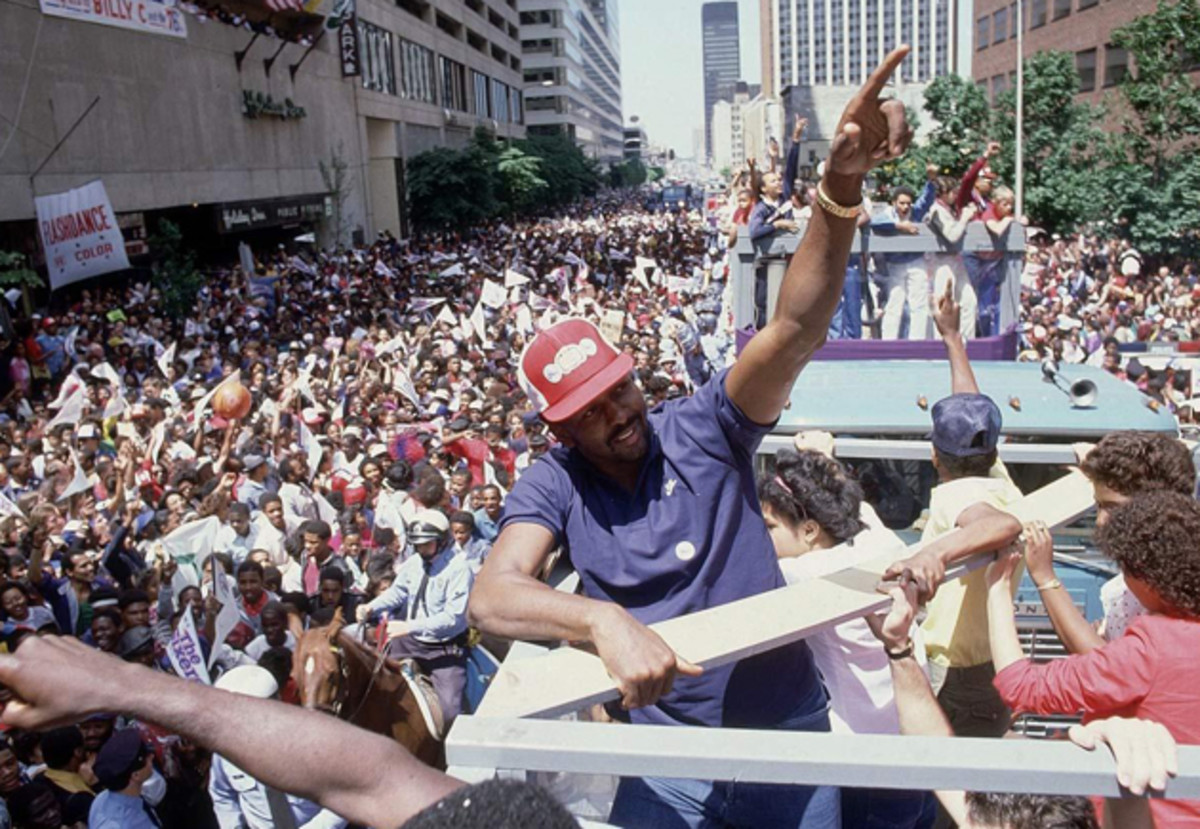
For the next season and a half, though, he belongs to the Rockets, and he will not be diverted by thoughts of running teams or anything else. Malone is a very devoted person. After he signed with the Stars, it was two or three weeks before he returned to Washington and Dell and Fentress became his permanent management. In the meantime, all manner of agents, honest and bloodsucker alike, had beaten a path to his door. He had refused even to consider a single one, waiting for Dell and Fentress to return. He still stays in touch with Driesell and considers Maryland his old team. When the Stars folded and he was dished off to some other club, he was genuinely hurt. "I'm a Utah Star, man," he said. "I want to stay here."
But mostly, what Malone is, he is loyal to basketball. Most stars are not. They think they are, but they are not, because after a while they have deals and hypes and diversions (some of this stuff you learn in college), and all of this chips away at what they thought they were growing up to be, which is a player. It's very subtle. It's like you look at a naked woman, and pretty soon what are you seeing but Abraham Lincoln.
Moses hasn't even got much of a name to get in the way of his basketball. "You know what, he's just a blue-collar worker," John Lucas says. "That's what Mo is, a blue-collar worker." No one has ever been so pure around the rack. There is an eloquence to Moses Malone, the basketball player.
